EXCLUSIVELY FOR RAIL INDUSTRY LEADERS


August 2023


Claire Wansbury Leaving the world in a better state
Chris Price Lights! Camera! Action!
Kate Kenny Inspirational woman of the year
Darren Caplan Let’s all be Team Optimism








August 2023


Claire Wansbury Leaving the world in a better state
Chris Price Lights! Camera! Action!
Kate Kenny Inspirational woman of the year
Darren Caplan Let’s all be Team Optimism












Building for a sustainable future
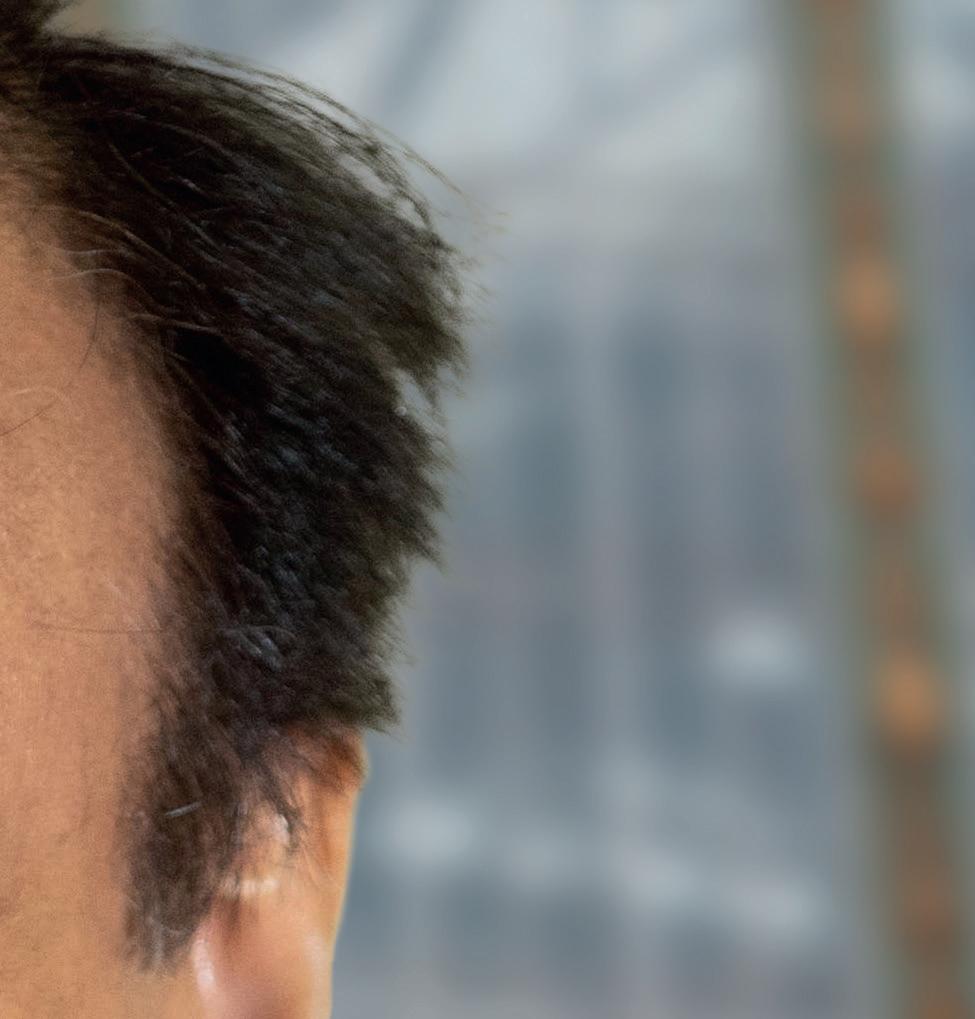



With over 30 years’ experience working in the rail industry, specialising in the safety sector, the OPC provides practical, reliable ways of improving performance and assessing ability.



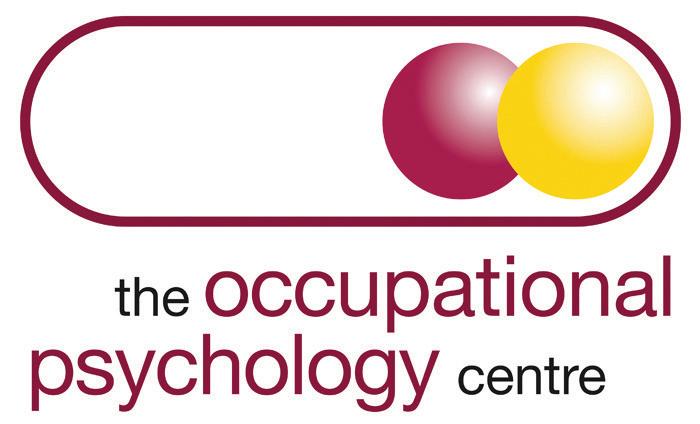










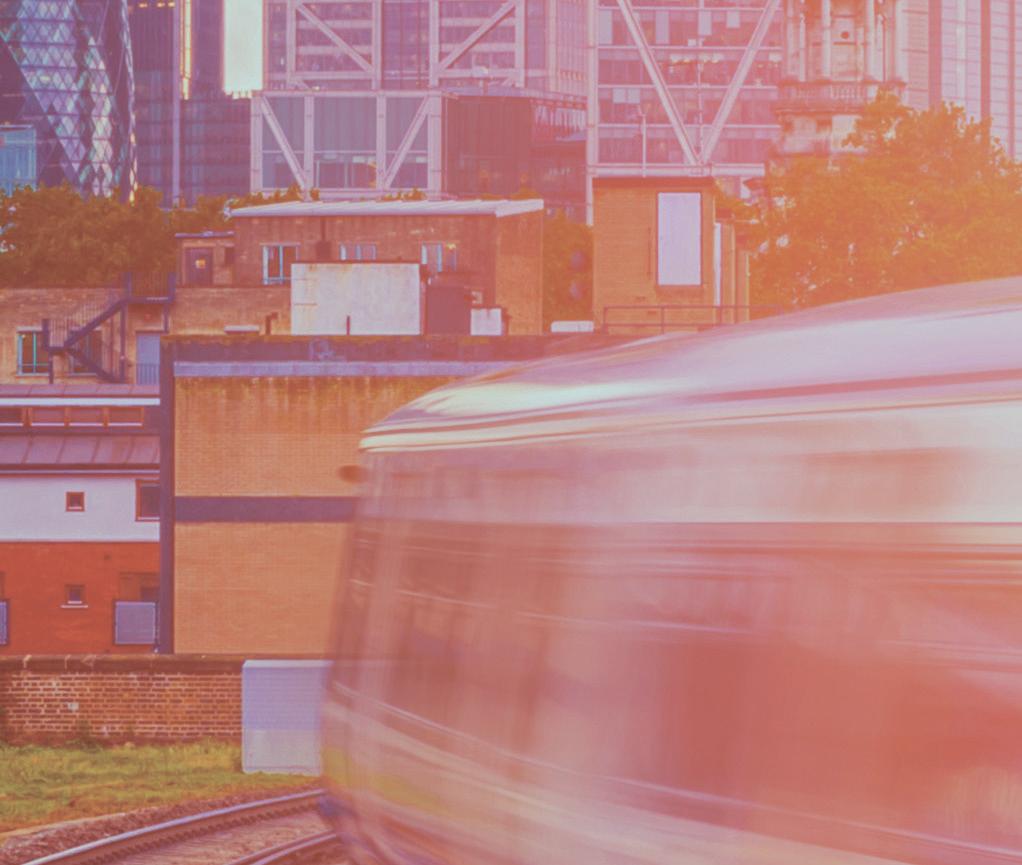
warm welcome to the latest Rail Director. Warm feels like the right word to use, as summer has finally arrived in East Yorkshire as I write this, and it is fair to say it is mafting. There is also double cause for celebration as this edition marks the magazine’s third birthday. This is a fantastic achievement and despite being launched during the height of the pandemic it has been a success since day one, so my huge thanks to everyone who has been on the journey so far.
Reflecting on the 36 editions and in that time more than 400 high-profile rail industry leaders and organisations have featured, highlighting their efforts to make the sector the success it can be. It has been a real privilege to speak with so many amazing people, who have been generous with their time, sharing fascinating stories which have been a real joy to write up.
This continues in the latest edition of Rail Director, the culmination of another action-packed month, with a host of features. Amongst them is a story on my trip out to the National Railway Museum in York, not that I need an excuse to visit, to see The Bramall Gallery, a ground-breaking interactive gallery exploring the how, what and why that underpin the creation of the railways. If I’m being completely honest, I think the adults enjoy the interactive exhibits as much if not more than the children.
This month’s cover feature is Raj Sinha, a chartered civil engineer with more than 30 years’ experience in the rail industry. He shares his story and his passion for driving safety and sustainability, emphasising the importance of doing “much more” if we are to build for a sustainable future.
Sticking to the subject of sustainability, on page 16 you can read a feature from my conversation with Claire Wansbury, who has been named the first-ever Sustainability Champion at the 2023 everywoman in Transport & Logistics Awards, recognised for an exemplary contribution to sustainability and environmental protection. It is the passion of the people I speak to which really makes this job so enjoyable, and that is definitely the case with Claire, who has sold me the occupation of an ecologist.
Speaking of inspirations and Kate Kenny, senior vice president and general manager, People & Places Solutions Europe, Jacobs, definitely fits that bill, having been named Inspirational Woman of the Year at the Women in Rail Awards. Her journey from the bars and clubs in Brighton to her role now is well worth a read.
This is just a snippet of what is in the latest edition, which also includes a blockbuster year for North Yorkshire Moors Railway with visitors including Tom Cruise and Harrison Ford, and the monthly update on what is happening at RBD Community. On the latter, the team recently hosted a fantastic webinar giving an insight into One Place and The UK Rail Report. Knowing the hard work that goes into the platform, it is heartening to hear of the success organisations are having due to being members.
Thanks for all the support and here’s to several more years of being a force for good for the rail industry and its people.
All the best,
 Danny Longhorn Editor
Danny Longhorn Editor
stories a week to +70,000 rail industry professionals who now subscribe to our 7am daily newsletter. Please subscribe and encourage your colleagues and team members to do the same. It’s free and it’s easy: www.railbusinessdaily.com. This is the very best way to keep abreast of what is happening on Britain’s railways. There is a digital copy of Rail Director on our website.




equipment you can rely

Lifting and inspection equipment you can rely on for all maintenance of rail vehicles.








With over 40 years’ experience of high quality, heavy duty vehicle lifting, Totalkare combines world class products with industry leading support to facilitate effective maintenance and repair.

BOGIE LIFTS
6,000 - 14,000KG HYDRAULIC LIFT PLATFORM
COMPLIANT WITH DIFFERENT RAIL GAUGE SYSTEMS





More than 400 high-profile rail industry leaders and organisations have featured, highlighting their efforts to make the sector the success it can be

Raj Sinha is a chartered civil engineer with more than 30 years’ experience in the rail industry. He shares his story and his passion for driving safety and sustainability





UK News

Kate Kenny, senior vice president and general manager, People & Places Solutions Europe, Jacobs, has been named Inspirational Woman of the Year at the recent Women in Rail Awards. She shares her story

Claire Wansbury has been named the first-ever Sustainability Champion at the 2023 everywoman in Transport & Logistics Awards for making an exemplary contribution to sustainability and environmental protection. She shares her story

More than 170,000 comments have been made to London TravelWatch and Transport Focus over the proposals to close some ticket offices
Mark Nolan and Alex Emmerson are the new joint managing directors of Rowe Hankins, specialists in innovative trainborne and trackside products and services for the world’s railways. They explain the journey ahead...


Cyber security has become a pivotal element of the rail safety agenda, and addressing this, RazorSecure’s chief executive officer, Alex Cowan, discusses the importance of improving the integrity and transparency of digital maintenance operations
The rail industry’s annual fundraiser will be taking place later this year raising funds for the charity Railway Children
6
“UK railway infrastructure has come a very long way in 30 years, but much more needs to be done if we are to build for a
RMF is a leading provider of railway reservation based international settlement and clearing services, providing sophisticated revenue and cost allocation, including business critical management information.

Jacqueline Starr, chief executive at the Rail Delivery Group (RDG), shares her insights and thoughts about the rail industry. In her first column she talks strikes, technology and better customer information




An in-depth look at what is happening across the industry by those who make the decisions. This issue’s features include: A look behind the scenes of some recent film productions at North Yorkshire Moors Railway, an update from the team at the National Railway Museum and a discussion with T Level Ambassador Donald Doughty about skills shortage in the industry.

Railway Chaplain Mike Roberts writes about why living in crisis mode can never be a long-term option

Darren Caplan, chief executive of the Railway Industry Association (RIA), appeals to all rail industry colleagues to challenge the caveats, ask for the evidence, and make the point that it is far too early to talk of dispiriting ‘new normals’ in his latest column

60 UK announces £680m

Lord Offord, Minister for Exports, says the deal shows that the UK still moves full steam ahead with its export of railroad innovation and expertise
74 International News
76 Movers and Shakers
86 HS2’s chief executive officer to step down in September

Mark Thurston has described the role as the highlight of his career and a privilege from the first day







Tel: 0800 046 7320

Sales: 020 7062 6599

Editor Danny Longhorn danny@railbusinessdaily.com



Designer/Production Manager Chris Cassidy
Production Editor James Jackaman




Director of Marketing








Phil Loades






Advertising Team
Christian Wiles chris@rbdpublications.com
Amy Hudson amy@rbdpublications.com
Raj Sinha is a chartered civil engineer with more than 30 years’ experience in the rail industry. He shares his story and his passion for driving safety and sustainability






















“UK railway infrastructure has come a very long way in 30 years, but much more needs to be done if we are to build for a sustainable future”
Over the last 30 years, the UK’s railways have benefitted from significant investment resulting in revamped and new stations and trains alongside advances in operational systems and processes.
There have been some phenomenal projects delivered by a dedicated and professional team of people with a desire to do the right things for the travelling public as well as keep freight on the move. Today, UK rail is recognised by many as one of the most respected and safest transport systems in the world.

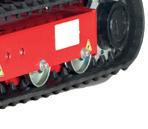

However, the industry is facing significant industry changes and associated challenges with Great British Railways and technology to name but a few. The question we all need to ask is, can we continue to be both safe and sustainable with an enormous number of infrastructure projects planned over the next ten years, when the UK recruitment market is the toughest in a generation – alongside an industry that has an ageing workforce? With 30,000 people expected to leave the railways over the next decade, managing the skills gap is set to become one of UK rail’s biggest headaches. How do we train, keep and improve the front-line work force in the face of what can been seen by the frontline, as threats to the security of their roles in the traditional sense?
Spanning a career of over three decades, SWGR’s group managing director, Raj has held senior executive leadership positions within the industry at both client and contracting level, including a FTSE 30 business.

Today he is a major shareholder and the leader

























of national infrastructure support services provider SWGR, he heads a team on a mission to address that very challenge, working tirelessly to revolutionise how infrastructure projects are managed safely and sustainably.
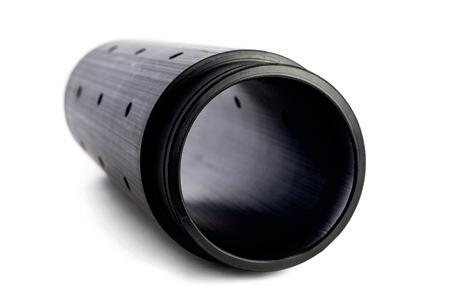





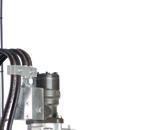



“A recent report by City & Guilds and NSAR concludes that 120,000 people will be required to complete the projects needed on the UK’s railways over the next ten years,” said Raj. “This statement alone sends shivers down the spine. It is one that the industry needs to take very seriously.




“When we work with our clients, we relentlessly explore ways in which we can attract a huge quantum of new, talented and adaptable young people into the industry – training them to deliver safely and brilliantly in all that they do. But despite working with organisations to support recruitment UK-wide, talent acquisition to build capacity now and in the future remains a constant battle.”
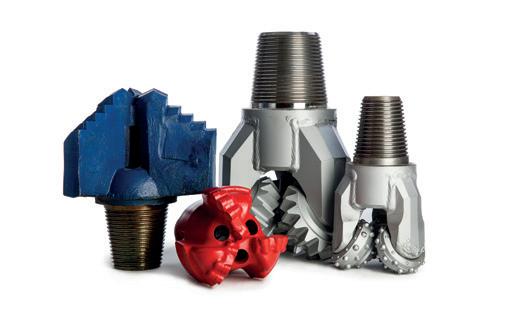





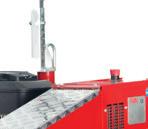

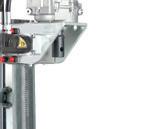



Raj continued: “The journey the industry has taken, and one that many of us have taken over the last 30 years, has been one of significant progress, but skills and safety challenges remain, and we have to tackle them head on so that we continue to raise standards and make sure that everyone arrives home safely every day.
“On the surface, you can see progress – but there are parts of the rail industry that need more care and attention. Recruiting the right frontline people, who exhibit the right behavioural traits, with a desire to make a positive difference in a sustainable manner, is essential.
120,000 people will be required to complete the projects needed on the UK’s railways over the next ten years
“We have devalued our frontline resources in comparison to other industries and companies are accepting lesser standards because of the national labour crisis facing rail.
“It seems at times that the industry has lost its way in bringing discipline and control from a recruitment and retention perspective.
“What was once seen as a long-term career opportunity now seems to be more of a stepping stone to other things in an asymmetrical job market where demand is massively outstripping supply.
“The transient nature of people in this postCOVID world is really adding to the challenges we face. UK railway infrastructure has come a long way in 30 years, but much more needs to be done if we are to build a more sustainable future. We all need to step up – once again becoming that great place to work with clear career paths and a fantastic place to do business with.
“I have been heartened by the support SWGR has received from many who have recognised that we are inspiring that change. We have an unwavering focus on compliance and safety, while maintaining the standards we pride ourselves in.”
Part of his commitment to care, understanding, discipline and control, Raj believes, has been learned through his experience. Significant investment has been given to the industry for training new recruits, however staff retention in the industry has become quite poor – potentially due to more lucrative offers in other sectors, and the demands of the railway to work outside sociable hours.
Companies can spend large sums on training people to maintain a safe working environment on the railway, only for individuals to move to other sectors further down the line because work isn’t readily available a few months afterwards. Sustainability in work banks is a problem –particularly keeping people occupied during normal working hours.
The ebbs and flows of supply and demand, especially in overhead line work, also compounds that challenge.
In the UK alone, the fluctuations in the levels of overhead work required, compared to some of the smoother programmes rolled out in France, Germany and Switzerland, for example, has created a significant skills gap for overhead line work that those other countries do not face.
Raj said: “The uncertainty of work levels in certain disciplines within the industry can be a major challenge – especially when you add up the costs of recruitment, selection, competence training and on-the-job mentoring only to find that people move on to something else because they don’t now want to work on a cold and rainy Saturday night in the middle of nowhere with little or no prospect of work during the ‘normal’ working week.
The ongoing problem for organisations like SWGR is that, when a significant amount of investment is made in training an individual, the work may not be there when they are ready to be deployed on the railways. It is not a sustainable way of working.

“As a result, the industry faces challenges from the movement of individuals working across multiple businesses at one time. This causes issues with monitoring fatigue, the ability to conduct suitable Sentinel checks, issues with CIS, and ultimately, as the industry experiences more of a mercenary culture, we will also experience a lack of professionalism across all roles. That cannot be allowed to happen.
“As a company, SWGR is working proactively with our clients to understand the trends and the requirements in all the regions we work across in the UK. Integrating that with a robust training and development programme for our colleagues which is constantly monitored through our digital infrastructure, we are able to ensure that investment is made at the right time to ensure that we are providing highly-skilled, experienced and competent colleagues for the roles in which they are required. We believe that we are leading the way in many areas of the skilled labour supply market.
“SWGR is proud to provide multiskilling opportunities for our colleagues, so that, regardless of fluctuations in demand, we are able to provide a surety of supply to match requirements. Beyond multiskilling, we equip our colleagues with the right non-technical skills to succeed in the workplace. This is one of the ways in which we retain our staff and contribute towards more sustainable practices. We also pay our people above the market rates.
“It is this level of collaboration that will help the wider industry to recruit and retain its staff for the longer term, which ultimately provides a sustainable workforce that always follows safe practices. If we do not continue to nurture our people, they will leave the sector, and with it, they will take the huge amounts of experience needed to maintain the infrastructure. It is a risk we cannot afford to take.”
One of the ways of addressing this, according to Raj, is through a national forum of key industry decision makers. This forum would be independently chaired and take responsibility for reviewing the industry’s performance in sustainably recruiting new frontline individuals into the industry and supporting organisations to provide consistent levels of shifts.
The uncertainty of work levels in certain disciplines within the industry can be a major challenge
Raj said: “The forum would bring focus to the industry as a whole to encourage people to join the industry, whether that is young individuals, armed forces colleagues, or ex-offenders, for example. If we take a holistic approach to multi-skilling, and support business to make changes to support growth with the right levels of demand, then we will be working towards a more sustainable railway.”
Attracting people to join the industry, but retaining experience is essential. Alongside its training programme, SWGR has also supported its frontline colleagues above and beyond the call of duty to arm them with the resources they need to flourish in their roles. The introduction of the WorkSafe app, which provides a digital space for rule books and safety briefings, site familiarisation logging, SWGR and client noticeboards, and a safety question process to ascertain the colleague is in the right frame of mind, has contributed to SWGR’s accident frequency rate of zero over the last five years and greater retention of staff.
Integrated with a National Control Centre operating with live site data and a resourcing platform, “Instinct” brings together resourcing, fatigue, timesheets, local knowledge and more into one programme. With it, SWGR is changing how safety is implemented, measured, and reported on the frontline, while ensuring that its colleagues have good levels of work to progress and develop their careers.
At the heart of safety on the frontline are mobile compliance and control officers, who are equipped with bespoke vehicles that allow safety briefings to be given over video while on site, and for compliance checks to be thoroughly completed – meaning that
SWGR can prove, with data, how safely it operates both to its colleagues and its clients.

Raj said: “Engineering can always be perceived as a more dangerous profession compared to others, but it does not have to be. By building the digital safety infrastructure we have developed over the last few years, SWGR is able to provide assurances to both frontline colleagues and our clients, that we look after our people and that we have their best interests at heart, while completing the job successfully.
“We are currently working with our clients to determine how our infrastructure can further support them across the wider industry – and we are aiming to be a catalyst for change to support a consistently safe railway.”
SWGR’s custom-built Mobile Health and Wellbeing unit, fully equipped with state-of-the-art equipment and a full-time nurse, has assessed, guided, and advised thousands of onsite rail workers since it was introduced two years ago. Clients and supply chain partners are benefitting from the confidential physical and mental health advice given by industry-leading professionals. It is all part of a journey to ensure workers are safe and to make the UK rail industry the country’s best place to work and one in which Raj is calling on industry colleagues to come together onboard.
He concludes: “Then and only then, will the industry be best placed to consistently deliver brilliantly for the country as a whole and the people it serves.”
“Overall, the industry as a whole is 100 per cent going to go through tough times, and it’s not enough just to be the safest, we have to be the safest and deliver the best value.”
Engineering can always be perceived as a more dangerous profession
Artificial Intelligence (AI) will be among the technologies that Network Rail and Swiss railway company SBB will be working on as part of an agreement signed by the companies. The agreement, in the form of a Memorandum of Understanding (MoU), marks the first step by Network Rail to strengthen ties with international railway operators, sharing knowledge and best practice. It is part of Network Rail’s newly formed International Research & Development partnership programme (IRDPP), which aims to deliver and develop technology to improve safety and deliver a network fit for passengers and freight customers.
Contracts have been exchanged for principal contractor Morgan Sindall Infrastructure to formally start work on Bedlington, Blyth Bebside and Seaton Delaval Stations as part of the Northumberland Line. Main construction works are progressing at pace, with station works well underway at Newsham and works approaching completion in Ashington, and 21km of new track is already installed. Both Bedlington and Bebside Stations feature two platforms, while Seaton Delaval has one. All will feature parking and accessible access and link into local cycling and walking routes to encourage sustainable travel.
The Global Centre of Rail Excellence (GCRE) has announced a partnership with not-forprofit organisation Primary Engineer to bring engineering into the classrooms of local primary schools. GCRE is working with the partner to develop a rail engineering project, linked to the Curriculum for Wales, that will be delivered in 14 local primary schools near to the site. Primary Engineer is an educational, not-for-profit organisation that provides a range of programmes and competitions to engage children in engineering while working towards addressing the gender and diversity imbalances in the industry.
he government has launched a study to look at options for running HS2 trains to Leeds and committed to reassessing evidence to improve rail connections in Bradford.
The Leeds Study delivers on a commitment made in the government’s £96 billion Integrated Rail Plan and will consider a number of potential options to run HS2 trains into the city centre.
It will consider capacity at Leeds Station and take into account local views, as well as factors such as disruption, economic development, value for money, affordability, deliverability and timescales.
The government says it remains committed to upgrading and electrifying the existing line between Bradford Interchange and Leeds, which could deliver a 12-minute journey time and help decarbonise the railway within the next decade. Government will also reassess evidence to improve connectivity in Bradford, including examining the case for a new station.
Meanwhile, £40 million is being provided to West Yorkshire Combined Authority to support its development of the mass transit system, which will deliver integrated public transport options and offer a greener, quicker and more reliable choice of travel. The announcement comes as the government formally responds to the Transport Select Committee’s report on the Integrated Rail Plan. As part of this, the Department for Transport outlined to the committee that it expects to complete the Leeds Study in 2025.
In a written statement to Parliament, Huw Merriman said: “The Integrated Rail Plan (IRP), published in November 2021, set out a £96 billion investment to benefit the Midlands and the North. The government stands by the conclusions of the plan and continues to consider it the most effective way of providing rail benefits to the North and Midlands.
“As part of the plan, we also committed to take forward a study to consider the most effective way to run HS2 trains to Leeds. I am today (17 July 2023) publishing the terms of reference for this work, which will include consideration of station capacity at Leeds and the implications of different options on the wider network.”
Avanti West Coast’s new Hitachi-made fleet marked a major milestone with its first journey to North Wales as part of its rigorous test programme.
Two Class 805 bi-mode trains – capable of running on both electric and diesel power – travelled from the West Midlands to Llandudno Junction, before heading back to its depot. This first stage of testing is being undertaken by Hitachi Rail to ensure the sets work to the best of their ability before being handed over to Avanti West Coast to operate them.

Further trips to North Wales are planned as the engineers check the fleet’s compatibility with the route and its whole infrastructure, including to the port
Image: Terry Eyres Avanti West Coast
terminus of Caergybi/Holyhead. The new trains are expected to enter service across Avanti West Coast network from 2023. These sets will eventually replace the Voyager trains, lowering the amount of diesel used by only utilising the fuel when there are no overhead wires to supply electricity.
The £350 million project will deliver a fleet of ten seven-carriage electric trains and 13 five-carriage bi-mode trains, with the ability to switch seamlessly between electric and diesel power. The electric trains (Class 807) will operate between London, the West Midlands and Liverpool while the bi-mode version (Class 805) will be focused on the London to North Wales route.
Avanti West Coast’s new Hitachi train makes fi rst test run to North





f you prefer to ask your self-employed contractor operatives to buy their own Employers and Public Liability insurance, then ask them to try our dedicated website www.railworkerinsurance.co.uk
This might apply to any of your team not on Customer Information System (CIS), particularly those paid through their own Person with Significant Control (PSC) Limited companies.
Our policies start from as little as £322 per annum for a year for basic EL PL Pi coverage, which is approximately half the cost of other products on the market.
What’s more, our coverage is suitable to support applications to the HMRC from individuals who wish to show that they fall outside of IR35. However, please note that JJ Rail do not give IR35-related tax advice.
The route to purchase is very easy and takes just two minutes online. Quotations are issued automatically by email. Once the premium has been paid the policy document is emailed to the operative straight away, so that they can arrive on site at a moment’s notice, ready to present the policy certificate and commence the contract work.
It is important to routinely check any contractor’s cover and policy certificates held on file, to confirm they remain valid and in force. We will always support our clients in checking these documents for you.
We have market-leading knowledge of the rail industry and are proud to be RISQS-accredited.
If you would like advice around this or any aspect of insurance for your rail business, please contact the team on 07816 283949.
Jobson James Rail insures the railway supply chain




Kate Kenny was given two options when it came to a career after studying Pure Maths at Royal Holloway, University of London: a teacher or an accountant. Neither appealed and after a short while spent working in bars and clubs in Brighton, she had an opportunity as a transport consultant, something that met the aspirations for what she wanted to achieve.
“I wanted a job that could have a tangible impact on the world,” she said. “Working in bars and clubs wasn’t an obvious initial career step for a mathematician, but
it was great fun as I enjoyed being customer-facing, and it gave me a great grounding in working with diverse people and handling difficult situations.”
Kate was invited to interview for a large engineering firm and accepted a job as a graduate transport consultant. There, she worked on all kinds of projects including analysis of the implementation of London’s congestion charging scheme, European cross-border traffic data exchange, modelling travel to airports and reviewing the impact of the government’s 10-year plan for transport.
“AECOM, or FaberMaunsell as it was known at the time, was looking for someone numerate to do transport modelling, examining demand and choice models of how people choose to travel and that covered various rail systems and planning for the future of rail,” she said.
“Although I rather fell into the transport industry, I was always really focused on the kinds of outcomes I wanted to deliver through my work, and it is certainly something that transportation and the rail industry offers.
“I’ve really enjoyed it and if anyone had said at the beginning of my career how it would turn out to be I just wouldn’t have believed them. There are so many different options and I’ve worked in different countries on lots of different, very high-profile schemes, and encountered really interesting and diverse people. I can say with certainty that every day I have learnt something new. It has been an absolute privilege.”
Last October, Kate was appointed senior vice president and general manager, People & Places Solutions Europe at international technical professional services firm Jacobs, the youngest person and only female to hold the post. In her role, she leads more than 7,000 employees across Europe in bringing knowledge and innovation from across the Jacobs organisation to challenge the way problems are solved and helping to shape the next generation of solutions for clients in a variety of markets.
Kate is responsible for the markets the company serves relating to buildings and infrastructure, so that is built environment, and transportation which includes rail, highways and aviation – everything from strategic consulting and advising on clients at the front end, all the way through design and delivery of major programmes as well, working with the likes of Network Rail, HS2 and the Transpennine Route Upgrade (TRU).
“It is a great honour to do the role,” she said. “Looking back towards the start of my career I

was often the only woman in the role and often the only non-engineer so very early I was desperate to conform and be like a lot of the male engineers around me. Then I had a wake-up call – I realised that where I was adding value was that I was different to other people, so I think that has been a key component to my career success.
“I don’t focus on being a woman or being young, I just want to get the job done. It is a pretty demanding role, but it is extremely rewarding. There is a significant weight of responsibility, because we are responsible both for delivering some really important schemes that are going to make a difference to a lot of people, and also responsible for peoples’ careers.
“But it is a privilege and when I see people develop and go out and see some of the schemes we are delivering, such as when I recently went on site to the TRU project with a client, it is extraordinary. You see the impact we will make that will change the future of peoples’ lives and the economy in that region, that gives me an enormous sense of pride.”
As well as her own personal career progression, important to Kate is helping others to enter the industry or progress their own development. She takes part in mentoring and sponsorship, both within Jacobs, but also in the industry, having been part of programmes like Women in Transport, particularly focussed on women working in leadership positions.

I was always really focused on the kinds of outcomes I wanted to deliver through my work
Her efforts have recently been recognised at the Women in Rail Awards, where she was named Inspirational Woman of the Year. Kate was praised for using her extraordinary capabilities and growing platform to make an impact, whether mentoring and helping to develop others, being active in the professional community, or through her diverse roles at Jacobs.
“I was staggered to have been nominated for the award and shortlisted and then completely flabbergasted to have won it,” she said. “I was delighted that my colleagues thought enough of me to put in a submission, and I think the biggest opportunity around this is to send a message to other women in the rail industry that it is possible to develop a successful career. If that gives inspiration for other women to be successful, then I would be absolutely thrilled.”
Kate spoke with Rail Director as Jacobs was recognised for its efforts in advancing gender equality, being named in the Times Top 50 Employers for Gender Equality. Run by the charity Business in the Community, the competitive process has been used for more than a decade, with more applications received this year than ever before.
Jacobs has set a goal to significantly improve its global gender balance by fiscal year 2025, aiming to achieve 40 per cent female talent, 40 per cent male talent and 20 per cent being a flexible measure – including any gender and those who choose not to identify or disclose.
At the heart of its inclusive working environment is its employee networks, which support the company’s TogetherBeyond strategy by providing a platform for employees to collaborate and work toward a common goal. These networks are dedicated to giving people from diverse demographics a voice, as well as supporting allyship and career development.
“This award demonstrates Jacobs’ commitment and success in taking demonstrable action to create gender equality in the workplace,” said Kate. “We are so proud of what we have achieved so far but commit to continuing on our journey, creating an organisation where everyone can thrive irrespective of gender, or any other characteristic.”
Prior to her current role, Kate led growth and sales for People & Places Solutions in Europe and has previously worked on the business cases for major UK infrastructure programmes including Crossrail, HS2, the expansion of Heathrow and Stansted airports and the Silvertown Tunnel in London.

In 2020 Kate became a Fellow of the Institution of Civil Engineers, further growing her platform to make a difference. She is a huge advocate for supporting those around her and helping quieter talent to carve a way, particularly engaging young women and girls on the impact they can have on the world by taking a path in engineering and technology.
“I have never really had a long-term plan when it comes to my aims and aspirations, but I am very clear on what motivates me, so I want to make sure I am in a role, whatever it looks like, in which I am adding value,
and that it has a tangible impact on our communities, on our society, on the environment and the economy as well and gives me a level of personal challenge,” she said. “I also want to make sure I am working with some brilliant people; a lot of my work and my success I pin to strong relationships with some brilliant, talented people.
“I will continue to promote the industry to the next generation of workers. There is a wide array of skills and disciplines needed, so everything from engineering, strategic consulting, finance, HR and procurement.
“There is an assumption that you have to know everything about rail gauges and timetabling to have a great impact in rail, but it is mainly about the outcomes that you can deliver. Our railways have revolutionised the country, the world, they have been at the forefront of industrialisation, they connect families, they connect economies and having a brilliant world-leading railway is fundamental to the success of the UK moving forward. It is very exciting that you can have a career that contributes to that success.”
I want to make sure I am in a role... in which I am adding value, and that it has a tangible impact on our communities...
TBF offers financial and medical benefits, a wide range of complementary and alternative therapies, bereavement grants and welfare advice. Supporting members during times of need, hardship and distress for less than 20p per day. £1.25



































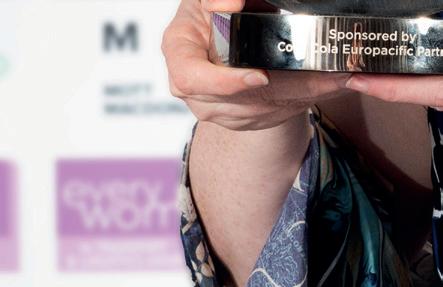















Claire Wansbury says it isn’t so much a question of why she works as an ecologist, but more why everyone else doesn’t want to be one, describing the role as very interesting, important and one which can make a difference.
From as young as she can remember, Claire, now a technical director and Fellow at Atkins (a member of the SNC-Lavalin Group), has been fascinated by nature and learning about the natural environment. It has led to a career which now involves advising on the protection of wildlife on major infrastructure projects such as railway and road schemes.
“Initially my interest stemmed from learning, wondering what I was looking at and starting to identify different plants,” she said. “It has only been when I really got into it that I realised what a diversity of different habitats and species there are out there.

“I’ve been an ecologist now for more than 30 years. I did my biology degree when there were so few jobs in this field so that was a case of going out into the unknown. Although I knew through my time volunteering that conservation was something I was fascinated by. It has been amazing to be able to build a career in it.”
Claire initially worked for government nature conservation agencies in Wales and England, before moving to work for a small specialist consultancy, whose clients were mainly housebuilders. She joined engineering and environmental consultancy Atkins in 2005.
“I got to do an amazing range of things at the small specialist consultancy, but what was really good about moving to Atkins was the opportunity to work on the big infrastructure projects,” she said. “There has been a greater variety of projects and it has proved a natural career progression for me.”


Claire is one of the UK’s top experts on biodiversity net gain. The co-editor of the Institution of Civil Engineers Manual of Blue Green Infrastructure, she has also co-authored national good practice principles. Her project experience includes East West Rail 2, a biodiversity net gain trailblazer.
“I have thoroughly enjoyed my career and especially the people I have got to work with, from sharing their expertise, to seeing them progress from new graduates to managing their own teams and running really complicated projects,” she said.
“My role has changed over the years and personally I am much more office-based than earlier in my career: instead of doing bat and newt surveys, I’m doing more technical work advising colleagues, reviewing reports and getting involved in challenging but interesting conversations about sites.
“A big change has been seeing clients getting ecologists involved earlier in projects and also the technology that supports us which is allowing us to do very high-level first looks at the different route options for a project much more quickly and in much more depth than we would have done a decade ago.
“With the data and that data management we are able to influence decisions earlier on. A lot of our clients are getting more strategic support, so it is not just purely about delivering project by project on the ground, but getting environmental thinking into their long-term strategies, and that in itself is very beneficial.”


The power of data is something that particularly interests Claire. Some of the projects she has been involved in recently have involved satellite data to get an overview of all the habitat areas that clients own and manage and that is also underpinning a way of thinking that is changing.
“If you think about a rail operation, there is the railway infrastructure, but there are also the green spaces around it, the latter of which for a long time haven’t been seen as a positive asset, but more just an


wellbeing benefits for people and contributing to flood control and other mechanisms for helping us adapt to climate change.”



Claire and her colleagues clearly innovate in many ways, but she commented that it isn’t all about technology. “Over recent years Atkins has been working with specialist companies training wildlife detection dogs to find some of our rarest species,” she said. “This approach has been used on some rail projects, for example, to help find great crested newts more efficiently and effectively.”
You could argue that the work of experts like Claire has never been more important. As well as the UK government’s target of net zero carbon emissions by 2050 and Network Rail transforming its approach to vegetation management, the United Nations (UN) Decade on Ecosystem Restoration aims to prevent, halt and reverse the degradation of ecosystems on every continent and in every ocean. SNC Lavalin, which Atkins is a member of, created a document about this aspiration for a nature-positive future ahead of UN negotiations on biodiversity in Montreal last year: Engineering a Nature-Positive Future (snclavalin.com).
If you think about a rail operation, there is the railway infrastructure, but there are also the green spaces around it
“What the UN has said is that we are going to try and globally turn the corner and start being back on a trajectory upwards of nature recovery, so a nature-positive future. Efforts are starting, but they are going to need to be scaled up and become much more dramatic.
“But it isn’t all doom and gloom. There is a lot of positive work ongoing, and one example is in England, with the government bringing in a countrywide mandatory requirement for biodiversity net gain, which is a habitat-based approach.


“Basically, the majority of schemes that need planning permission under the Town and Country Act will need to have a calculation that looks at the habitats before the development versus after, and be able to evidence a 10 per cent net gain, whether that is purely through habitat works on site, or through also funding some works off site. That is a real game changer compared to business as usual and is just one example of the ongoing efforts.”
Earlier this year, Claire’s efforts were recognised at the 2023 everywoman in Transport & Logistics Awards, when she was named Sustainable Champion, awarded to a woman or female-led team making an exemplary contribution to sustainability and environmental protection within a transport or logistics company.
“I am delighted to have won the award, especially with it being the first time this award has featured, but also I am delighted by the fact the organisers have recognised sustainability as such an important topic to warrant its own award,” she said.

“It comes at a time when there is more importance given to the topic. I have a lot of conversations about wildlife because that is my specialist area. In the past people have spoken of their interest in the environment, but that has been quite personal to them, such as feeding the birds in the garden.
“Now the conversations are about how it is important to the business to protect the environment, and how they can contribute, which is really pleasing as now it isn’t seen as a nice to do but a necessity. Ecologists are being brought into project conversations a lot earlier, which is good, but when that started to happen it seemed to centre on the negative side of dealing with the environment, just thinking of ecology in terms of constraints and things that can hold up a project programme.
Claire continued: “That has to be taken into account, but really it should be more about leaving the world in a better state because of a project and the multiple benefits you get from working with nature on projects. The more we lose biodiversity, the more we undermine the resilience of our asset portfolio, an action that is already having grave consequences across the globe, including our ability to achieve carbon net zero.”
And Claire believes Atkins is well positioned to play its part in ensuring projects improve ecosystems. As a company it has committed to reaching net zero by 2030, and is driving the adoption of clean power and renewable energy, decarbonising the built environment, minimising the impact of new
infrastructure, and building resiliency to climate change impacts. You can get an insight into Atkins’ renewed approach to environmental services here: snclavalin.com/en/beyond-engineering/reimaginingour-environment-to-unlock-investment
“One of the good things with Atkins is having the multi-disciplinary approach, bringing people together to offer a combined incredible depth of knowledge,” she said. “We bring groups together who will experiment with new approaches and also share across different sectors, with a willingness to innovate and support clients by taking them through the steps to improve.
“If individual businesses don’t take the intertwined emergencies of nature loss and climate change into account, then the risk to the wider economy and actually those individual businesses is really significant, but that is putting it in a negative way.
“You can also put it positively as an opportunity, and that looking after nature makes sound business sense. Take pollinators as an example. A transportation and logistics company might think that is nothing to do with them, but if you look at the goods they are transporting, nature will underpin a lot of those goods.
“It is about being able to step back and see the big picture and recognise that the individual action of a company or government can’t solve everything on its own. It is a complex problem, so it needs a jigsaw of pieces to be able to fit together to be the solution. If companies do their bit, but also support their staff in doing their own initiatives, business can also turn to the government and decision makers and say ‘we do see this as sound business sense, so we look to you to take serious decisions to deal with these challenges.’ We’ve got to ensure it is not just about words, but action as well.”

But it isn’t all doom and gloom. There is a lot of positive work ongoing

Train operators are extending the time available to respond to the consultation reviewing how tickets are sold at stations, with passengers having until September 1 to complete the consultation.
Together with the extensive and ongoing engagement with accessibility groups, as well as the independent passenger watchdogs scrutinising the proposals, the responses will shape final plans so that all passengers are supported as railway retailing is updated for the smartphone era. In addition to these proposals, the rail industry continues to roll out improvements to ticketing such as pay-as-you-go and single-leg pricing.
Although local plans vary, overall the proposals aim to bring staff out from behind ticket office windows to provide more support for customers buying tickets and navigating stations, as they move into new, multi-skilled ‘customer host’ roles.
The Rail Delivery Group (RDG) says an estimated 99 per cent of all transactions made at ticket offices last year could be made online or on ticket vending machines (TVMs). Where needed, TVMs across the network will be upgraded to sell a greater range of tickets and in rare cases where customers are unable to buy the ticket they need at a station, they would be able to buy on their journey, at a ticket selling facility en-route or at their end destination. Across the network as a whole, many ticket retailing facilities will remain open at busy interchanges, smoothing the transition.
Jacqueline Starr, chief executive of the RDG, said: “Train companies have listened to feedback, and are extending the time available to respond to the consultation on changes to how tickets are sold at stations. Operators are keen to give more people a chance to give their views on the proposals, so they can bring the railway up to date with dramatic shifts in customer buying habits, while supporting all its customers as the railway evolves and adapts.
“While local plans vary, the aim of the proposals is to bring staff out from behind ticket office windows to offer more help for customers buying tickets and navigating stations. At the same time ticket vending machines are being upgraded to offer a wider range of fares, and we have committed that no customer will have to go out of their way to buy a ticket.
“We encourage those who want to view the plans or take part to go to their local train company website or visit Transport Focus or London Travel Watch during the consultation period.”
The rules for how tickets were sold at stations were set in the mid-90s. The RDG says back then, 82 per cent of all tickets were sold at ticket offices, compared to 12 per cent today – a generational shift the railway must respond to at a time when revenue remains 30 per cent below pre-pandemic levels.

Alongside the passenger consultation on ticket offices, a range of options will be created for staff affected, including moving to a new skilled role and comprehensive re-training and re-skilling. Train companies will continue to engage constructively with unions at a local level to manage the transition in a way that works best for staff.
Independent passenger watchdogs Transport Focus and London TravelWatch are facilitating the consultation and scrutinising operator plans,
according to criteria set out on their websites. Customers who wish to view the plans should to go their local train company websites or visit the Transport Focus or London TravelWatch websites.
Michael Roberts, chief executive of London TravelWatch, said: “We’ve received more than 170,000 comments already. This feedback is currently being logged and reviewed alongside individual train operator proposals for their stations.
“It is important that a diverse range of views from all parts of the community are heard in this consultation. Unfortunately, some train companies did not provide people with complete and accessible formats from the start of the consultation period. This has meant that some people may have been prevented from being able to respond to the proposals.
“New comments received will be read, considered and used in discussions with train companies in the coming weeks.”
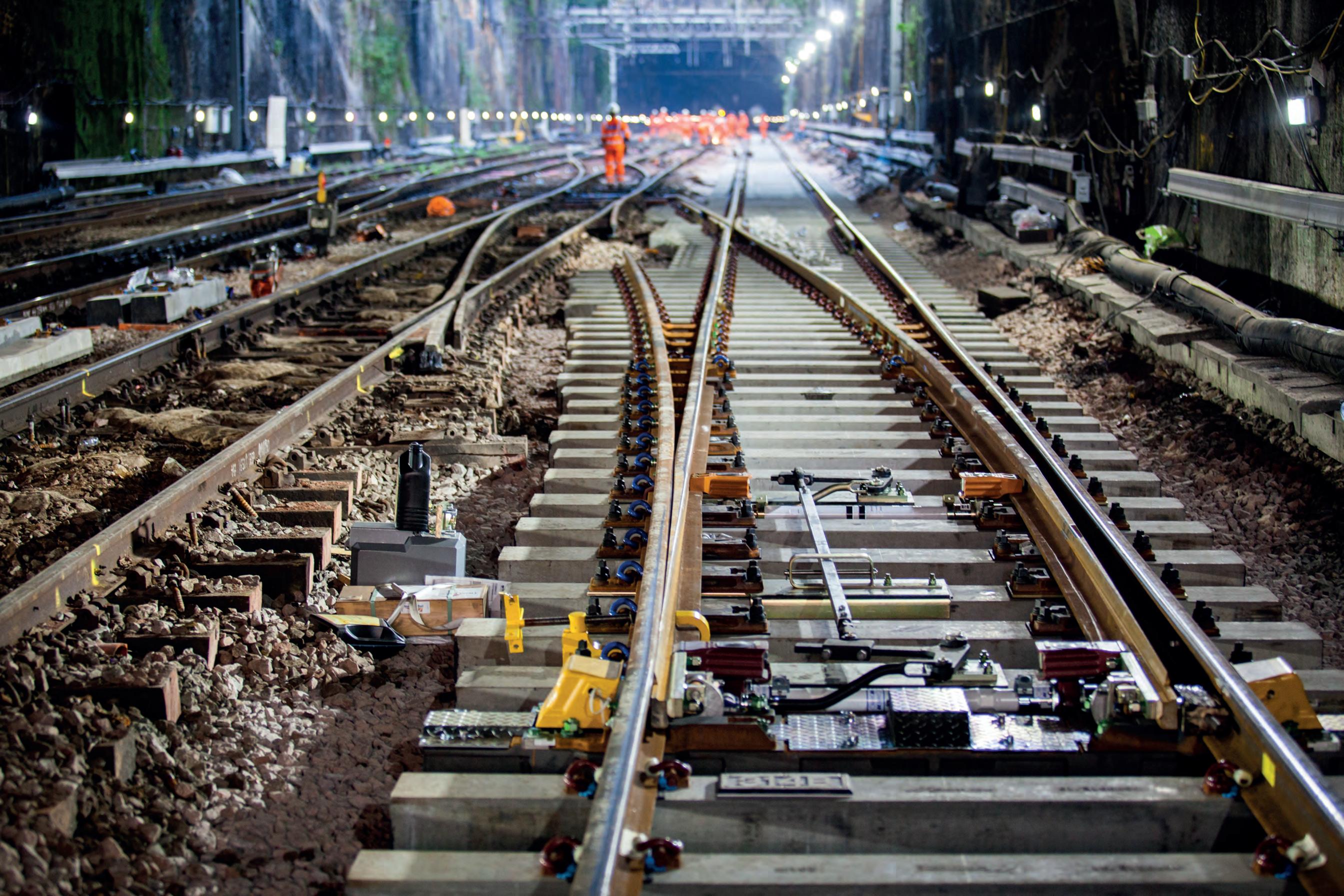

e have a great past, we are growing in the present, but we are really looking forward to the future.” That is the message from Mark Nolan, the commercial managing director at Rowe Hankins, a British-based manufacturer of electronic sensing equipment for the rail industry.
It is an excitement shared by Alex Emmerson, who is the engineering and manufacturing managing director, and who along with Mark took up his new position earlier this year.
“I am very optimistic for the future in building our list of customers and being even more proactive with those we already work with to find solutions that the rail industry needs,” added Alex.
“To get to where we want to be, we will almost certainly outgrow where we are at the moment in terms of our physical footprint.”
For almost 40 years, Rowe Hankins has been designing and manufacturing speed sensors, nonintrusive current monitoring devices, intelligent & sensory wheel flange lubrication systems and AC and DC earth leakage detection units.
“Rowe Hankins was formed in 1986 and is a specialist in innovative trainborne and trackside products for the world’s railway, working closely with rolling stock manufacturers, fleet operators, track owners and infrastructure contractors for light and heavy rail vehicle projects,” said Mark.
“Organisations have come to us with a problem to solve and we have had the engineering expertise to come up with the right solution. So, products like our dual and four-channel speed sensors were developed alongside our unique runback detection sensors for Transport for London. These types of solutions have continued over the years and as such, have shaped
the product range that drives our innovation into the future.”
Three years ago, the company became an Employee-Owned Trust (EOT), an initiative launched by the government in 2014, in which all the employees of a company must be included in the arrangement, and the trust must own more than 50 per cent of the company’s shares. The Rowe Hankins EOT owns 95 per cent of the shares.
“It ensures everyone is treated fairly, allowing people to take pride in what they are doing and further allows everyone to know that they’ve got a long-term stake in the business and the delivery of quality and service for our customers,” added Mark.
Alex and Mark took over as managing directors in May, tasked with developing the customer base, looking at product innovation, and reigniting the company after COVID.
Alex said: “Our ethos is to drive innovation, design and delivery. Mark and I are a double act, and working together as joint managing directors ensures customers are not just seeing the salesperson, but also the engineer in early discussions over new products, services, and solutions.
“Many of our products are driven from the customer requiring a unique solution and then approaching us to innovate a solution, design it and deliver it. It is as simple as that... and what we want to do is to build on those relationships and form new ones also.”
Rowe Hankins has a solid foundation to build on with several decades of success and the history that has been established with the original equipment manufacturers, rolling stock companies, train operators and service companies.
Amongst its successes, Rowe Hankins was one of the first companies to introduce a DC earth leakage device, the two-channel speed sensor that could detect speed and direction, and the new four independent channel device meeting the required Safety Integrity Level requirements.


More recently, the company developed the world’s first intelligent wheel flange lubrication system that lubricates the train wheel with a biodegradable fluid. The system knows where the fluid needs to be applied automatically and economically, saving wear on the wheel, the rail track and, most importantly protecting the environment. This system is already in operation on Alstom’s Class 345 trains that are running on the Elizabeth line.
“We have close partnerships with the likes of Alstom and Bombardier which goes back to the mid-1980s and that has been fundamental in what we do and who we do it with,” said Mark. “We supply for Alstom all over the world and around 80 per cent of what we produce is export. We are getting recognised on that front and we are creating partnerships with embassy trade departments and representatives across the world.
“The future looks exciting and what we have got going will transform the business dramatically, both in the UK and certainly overseas. Our fiscal year starts in August and next year is looking like a total game-changer as to how it has been over the last few years.”
Alex added: “We are trying to be one step ahead of what we think the customer needs moving forward. One of the important things is reducing the amount of equipment on the vehicle (especially as trains become ever more complex) working on different lines, diverse types of signalling systems and different power supply systems.
“It is important we continue to work with the customers in order to reduce their costs, giving them a lot longer availability of the component or system, and we will look to manage the lifecycle of the train over 30 years and just offer a more befitting economic solution.”
Rowe Hankins engineering department has a team of professional engineers with electrical, electronic, and mechanical principles who deliver all stages from conceptual design, product, and system development to final build, test, and commissioning.
Meanwhile its electronic service department offers in-service, repair, and maintenance of various traction systems, including train data recorders, with the capability to test/repair many other trainborne systems and components such as tachometers used for train speed measurements.
The company has a “buy in the UK policy” where possible, and ideally purchases materials within a 20-mile radius of where it is based in Greater Manchester. Among its accreditations, it is ISO 14001 standard, which sets out the criteria for an environmental management system.
Mark said: “It is important that we continue working with organisations to develop a new way of achieving the same thing in a more economical, cost-effective and greener way. We are very aware of the impact and the environmental issues associated with a product.
“If we can supply a sensor or complete tachometer that can do two things, it reduces the number of sensors.
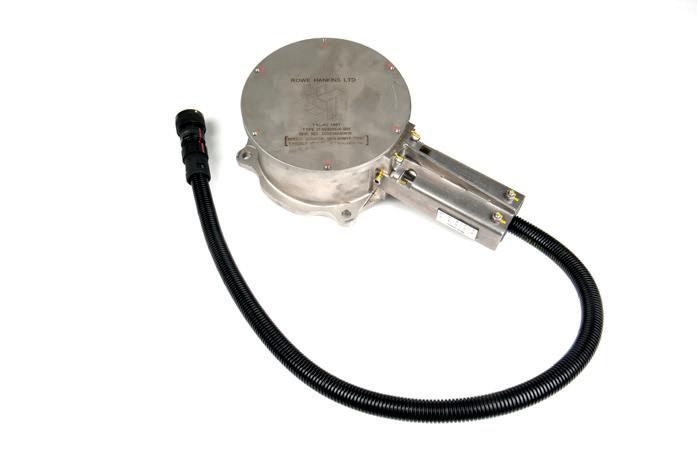
“So, by being engaged at a very early stage we can develop the design, we can make the prototype, we can do the testing and then provide the industry with something that is far more efficient, cost-effective and has less impact on the environment.”
One thing that is particularly important to both Mark and Alex, is bringing on the next generation of professionals. The company has recently taken on several apprentices, including one who has just finished the first year of his Higher National Certificate, one at a technical college, and a graduate who has just finished a degree in engineering.
“My push in the technical team is to maintain three generations of technical people, building a strong and thorough team,” said Alex. “The team is driven by energy and drive and also bringing in new technologies and ideas.”
Mark concluded: “Rowe Hankins has a great history, and we are building to give it a great future for everyone concerned in the business and for our customers.
“We provide extremely critical products in regards to train communication or speed sensors. We understand that our staff understand that, and what we do on the infrastructure side as well with earth leakage and various things, is the fundamental key aspects of the infrastructure and train set-up. So, we take immense pride in making sure the product is right first time, every time.” Visit rowehankins.com for more details.
The future looks exciting and what we have got going will transform the business dramatically, both in the UK and certainly overseas
The question of why it is important to invest in cyber security is a common theme in the industry at the moment.
It is viewed by many organisations as a cost and a necessary evil, and some would present it as a do-or-die argument where a failure to invest in cyber security will lead to an inevitable outcome.
Cyber security is now a requirement for all new rolling stock projects and legacy fleets, and operators will soon be forced to improve their cyber security posture through a combination of legislation and regulatory pressure.

In many places, the regulators are already demanding it. But there is an opportunity now to implement better cyber security as a constructive enabler, rather than a retrospective implementation.



There has been a seismic shift in the control of railway systems with almost every new system now operated by software communicating over a network. These networks are typically based on similar technology used to power the internet and other IP-connected networks.
Combined with the drive for better visibility of operational systems that allow for remote condition monitoring and real-time diagnostics, there is now an inevitable connection to the internet.
There are existing standards for developing safe software, but the railway has a mixture of safety and non-safety systems that are developed to different standards. Additionally, a lot of software is open source/off-the-shelf which is not necessarily developed to meet a specific standard.
Cost arguments are not new to the rail industry; they have been played out before with the safety legislation that was enacted in the early 2000s.
The original equipment manufacturer’s appetite for a level playing field calls for clear requirements, standards, and legislation to be in place, and meeting the levels now being demanded in tenders is often difficult. Fortunately, the industry is moving quickly towards putting those in place with standards such as EN63452.
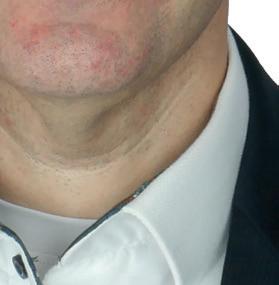



Unprecedented growth in railway digital and technological development requires adaptation and increased focus on cyber security controls. Innovative technology and solutions that support critical infrastructure must be embraced to achieve resilience, and to enable the rail industry to operate efficiently, improve defences, and respond effectively in the event of a breach. By embracing operational technology developments that support our digital infrastructure, we are able to stay ahead of a continuously evolving threat landscape.

Cyber security has become a pivotal element of the rail safety agenda, and addressing this, RazorSecure’s chief executive offi cer, Alex Cowan, discusses the importance of improving the integrity and transparency of digital maintenance operations
Cyber security is now a requirement for all new rolling stock projects and legacy fleets
Technology can reduce the demand for qualified and trained personnel, and AI and machine learning are available to diagnose, automate, verify and validate work tasks without the need for human intervention.
By embracing more modern processes, train operators can save time whilst also reducing the complexity of traditional maintenance procedures.
While some tasks still require a human touch, not all require being present on a train.
New technology allows updates and processes to be handled remotely, saving valuable time, while remote condition monitoring allows engineers to health check key components without having to leave their desks.
In the event of a serious failure, having the ability to assess the situation remotely can allow experts to ascertain whether more experienced people are needed on the ground, or whether the problem can be resolved more simply.
As an integral part of a nation’s critical infrastructure, railways have always been prime targets for cyber-attacks. And in addressing the increasing threat to the rail sector, RazorSecure has been analysing and researching the rail industry to pinpoint where the gaps in cyber defences exist and how to improve the security and efficiency of rail maintenance practices.
This year, we introduced the state-of-the-art Digital
Maintenance Gateway (DMG) solution, which was designed specifically for rail, to significantly reduce the cyber threat exposure of on-board management systems, protect passengers and operators, and ensure effective performance of rail networks across the globe.
The DMG is an integrated solution that simplifies rail maintenance, provides crucial cyber security controls, and improves overall efficiency.
Rail maintainers are now able to carry out maintenance tasks securely, empowering asset owners to automate repeated maintenance tasks and roll out over-the-air (OTA) updates securely across multiple trains in sequence.
By reducing the need for manual access to systems and devices, service laptops and USBs are eliminated, and on-board systems are protected from cyber risk.
With DMG, authorised engineers can connect to specific assets, whilst maintenance activity monitoring provides an audit trail that enables investigation of defects and improves resiliency of systems.
By implementing a holistic system that actively monitors rail maintenance activities, operators can meet regulatory requirements, capture learning outcomes, and quickly diagnose issues.
Taking a proactive approach to cyber security is the most cost-effective way to secure a resilient future in rail transport that sustains this digital growth journey.
Our services include:
• Access and Inclusive Design Appraisals
• Access and Inclusive Design Training
• Access and Inclusion Project Management Support
Access and Inclusion Strategy Reviews
• Access Audits/Reviews
• Digital Accessibility Reviews
• Diversity/Equality Impact Assessment Training and Development
• Equality, Diversity and Inclusion Audits/Reviews
Inclusive Customer Service Training
• Policy/Practice Development
• Stakeholder Engagement
We are supporting the transport sector to future-proof the Rail Industry, for all.

Clients include:

By embracing more modern processes, train operators can save time whilst also reducing the complexity of traditional maintenance procedures
Andrew Oliver, managing director of SEP Culant, is proud of his business’s stellar safety record. It’s all down to the strong safety culture he fosters – not to mention the attitude and dedication of his rope access and vegetation management specialists (many of whom, like Andrew himself, cut their teeth in the oil and gas industry.)
“They’ve gone from working with high-pressure hydrocarbons to high-speed trains,” explained former miner Andrew. “And being familiar with those high standards of safety has made the transition easier. We’ve got a very, very good safety record.”
From
Today, this team provides specialist vegetation management and access services to the rail industry, carrying out non destructive testing (NDT) and inspections, facilitating surveys and investigations, and keeping lines clear and safe.
The IRATA (Industrial Rope Access Trade Association) certified business supports clients including QTS, BAM Nuttall, and Murphy Group, as well as its sister companies SEP Rail Services and SEP Geotech.
“We also work in the oil and gas and renewable energy sectors, supporting everything from wind farm projects to universities and factories,” Andrew said. “SEP Culant is a modern industrial services company that’s big on rail.”
While its safety-focused managing director is used to working at height, he began his career underground, as a face miner for global speciality mineral company ICL.
“It was a hands-on role, mining potash and doing all the roof supports in ICL’s polyhalite mine in Boulby,” he remembered. “I then spent 15 years in oil and gas, doing NDT and integrity management. I looked after the plant, paintwork, pressure vessels, oil rig structures, and even the fabrication of oil rigs.
“Integrity management is how I got into rope access, as the two go hand in hand. Some of the structures and pipework are hard to access, and you need to be able to work at height to do that.”
Andrew then decided to launch his own access support business, which became part of the SEP Rail Group in 2020. SEP Culant has flourished, experiencing year-on-year growth of 1300 per cent for the last two years. Today, the company employs 22 salaried staff (two of whom joined as apprentices) and up to 20 subcontractors, enabling it to mobilise quickly and nationally.
And, when it came to building this team, Andrew looked to the oil and gas industry, recruiting and upskilling former colleagues. It’s an approach that has worked well for the growing business.

“The pace in rail is a bit slower than in oil and gas; there’s not as much bell-to-bell,” he explained. “But they’ve taken to it like ducks to water, and have gone from working 12-hour shifts to six to eight-hour shifts.
“We upskilled them with vegetation management training and brought in climbers. Today, we’ve got a good mix of oil and gas and agricultural experience. Some of our employees were previously working in the middle of the North Sea; now, they’re able to get home at the drop of a hat and sleep in their own beds every night.”
– and
the strict safety standards he and his team adhere to
Part of the UK’s fastest growing independent rail group, we provide vegetation management, specialist access and civil engineering support to some of the biggest names in rail.



LANTRA and NPTC qualified and operating under robust safe systems of work, our time-served arborists and vegetation management operatives undertake both major and minor tree and vegetation projects throughout the rail network.


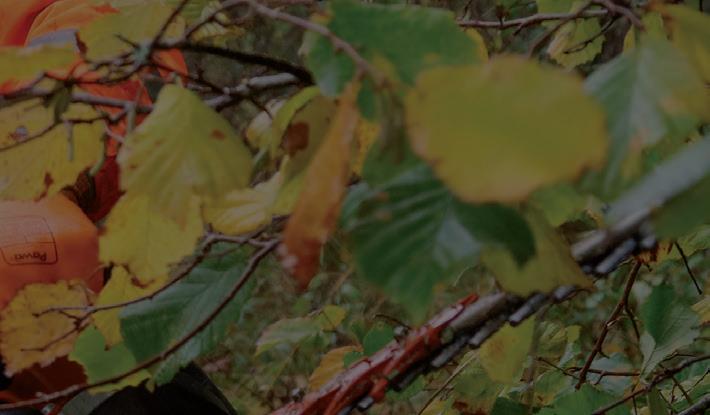







Providers of multi-skilled IRATA rope access qualified personnel, we help rail organisations to safely and cost effectively repair and maintain both structures and plant.

We provide comprehensive and integrated civil engineering services to the rail sector, backed up by our own specialist in house design and survey team.
Andrew believes that his team’s wellbeing is closely tied to the success of the business, and takes pride in its excellent safety record. SEP Culant is also IRATAcertified, meaning that clients can have confidence in its rigorous safety standards and procedures.
“We’re one of a handful of IRATA-certified access companies working in the rail industry,” he said. “All our procedures need to meet IRATA standards. We’re audited every two years; someone comes in to look at our management systems, procedures, risk assessments, and rescue plans, and to ensure that our kit is checked regularly. It’s a seal of approval, and a guarantee of quality and safety.”
The business’ access specialists hold up-to-date PTS and CSCS qualifications. Employing IRATAapproved methods, they carry out everything from surveys and inspections to industrial cleaning, painting, rigging, and lifting.
Lantra and NPC qualified, they can also undertake major and minor tree and vegetation projects across the country, working either reactively or as part of a maintenance contract.
Of these projects, one of the most significant to date was for Murphy Group, which appointed SEP Culant to support it with vegetation clearance.
Andrew explained: “We did 50km of vegetation clearance as part of a major project associated with the Commonwealth Games. We had our own section of line around the Midlands, but by the end of the programme we’d taken over completely from the other subcontractors. It was really successful, and helped the business to grow.”
Andrew and his team also support leading rail contractor QTS, providing vegetation clearance services. And, when it’s not building its own client base, the business works hand-in-hand with sister companies SEP Rail Services and SEP Rail Geotech.
“Surveying support was the foundation of SEP Culant; we began by carrying out vegetation clearance for SEP Rail Services,” Andrew added. “We’ll either take readings on behalf of the surveyors, or put in a safe work system so they can get down an embankment.


“It’s the same for SEP Rail Geotech; their staff might need to get down banking to carry out drilling, and we can assist, helping them to access worksites safely.”
This joined-up approach sets SEP Rail Group apart from the competition, enabling it to support clients at every stage of a project, rather than involving several subcontractors.
And the future looks bright for its growing culant business, which recently moved into a new 5,500 square foot depot. Andrew and his team have also begun to undertake civils and construction work (including retaining walls, access roads, and fencing) – a new venture, and one that’s already proving successful.
“I’m hoping for at least 50 per cent growth this year,” he concluded. “And based on our pipeline, that should be very easy to achieve. We’re certainly not resting on our laurels.”
We did 50km of vegetation clearance as part of a major project associated with the Commonwealth Games











The rail industry’s annual fundraiser will be taking place later this year raising funds for the charity Railway Children

ailways have always been at the heart of our society, and Rail Aid is at the heart of the UK railway’s fundraising.” That is the message from Peter, Lord Hendy of Richmond Hill, CBE, ahead of the launch of the fourth year of Rail Aid.

“I would urge everyone to get involved in the events of Rail Aid 2023,” he added, “they are great fun, raise vital funds, and also help unite the whole railway family across the UK.”
Rail Aid was initially launched during COVID-19 when many fundraising events had to be cancelled just as Railway Children’s work with vulnerable young people was needed most.
Today, Rail Aid has grown to become an annual and much-loved series of events in the railway industry’s calendar, helping support the work of Railway Children (raising more than £1.4 million) while also bringing the rail community – and members of the public – together.
Among the events is the Metropolitan line Rail Trail which celebrates London Underground Metropolitan line’s 160th anniversary by walking its 20km stretch from Wembley Park to Aldgate, a golf day at Ryder Cup venue, Celtic Manor, in Wales, and the much-loved Santa trains that have become a favourite among rail staff and their families.
“Since its launch in 2020, Rail Aid has become an essential part of the UK rail community’s calendar, bringing the whole network together,” said Rob Capener, chief executive officer (CEO) of Railway Children.

“But behind the glitz, glamour and good times, the work of Rail Aid couldn’t be more important, or more urgent, supporting children who are vulnerable and alone on streets and rail networks across India, Tanzania and the UK.”
Leading rail bodies that have already signed up to support Rail Aid this year include Network Rail, Transport for London, the Rail Delivery Group, Advance TRS, Worldline, Locomotive Services
Limited and a host of individual businesses – all committed to celebrating the best of Britain’s railway community while raising essential funds for the UK railway’s favourite charity.
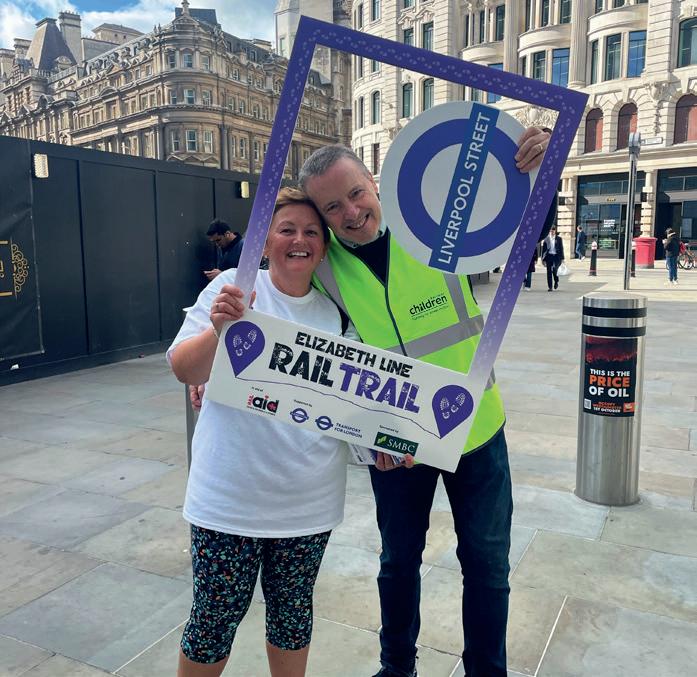
“We’re committed to supporting Rail Aid again this year,” said Dyan Perry (nee Crowther), CEO of HS1.
“It’s such an important initiative. Not only does it raise vital funds which are changing young lives in the UK and across the world, but it’s a great chance to get together and celebrate our fantastic rail community. Welcome back Rail Aid.” For more information, and to book onto Rail Aid events, visit www.railaid.co.uk

Since its launch in 2020, Rail Aid has become an essential part of the UK rail community’s calendar

Welcome to my first Rail Director column. I am keen to talk positively about some of the great work the industry is doing to improve services for our customers, but we must also acknowledge the challenging environment that we are currently operating in.
It has been more than a year since the first RMT strike in June 2022. At the time of writing, there hasn’t been the breakthrough we had all hoped for. Discussions of course continue and I am sure we all hope there will be something on the horizon which
leads to an end of the dispute. The RMT leadership has not put a pay deal to its members which would give a pay rise of up to 13 per cent over two years, as well as giving job security guarantees.
I am optimistic there will be a deal so that we can move forward with the pragmatic and sensible reforms.
All we’re asking is for the unions to put our fair and reasonable offer to its membership so that we can improve services for passengers and secure the long-term future of Britain’s railways.
While it is encouraging to see passengers returning in numbers similar to before the pandemic (particularly the rise in the number of leisure
travellers) the industry still faces an uncertain financial future.
The numbers of business travellers and commuters are not returning to the pre-COVID levels, meaning overall revenue is down between 20 to 30 per cent.
This is why it is absolutely the right thing to do to secure the long-term future of this vital public service. We must push ahead with some aspects of the workforce reform programme, which includes modernising our retail offer in stations by moving more staff out from behind the glass of ticket offices so they are more visible to help sell tickets and give journey planning advice face to face.
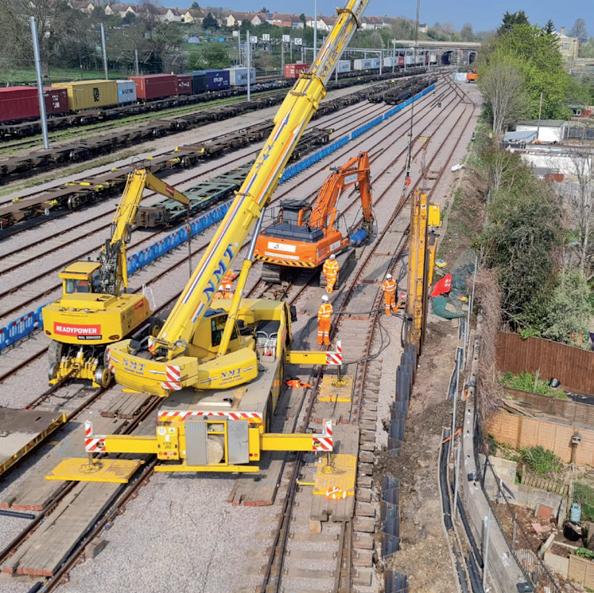
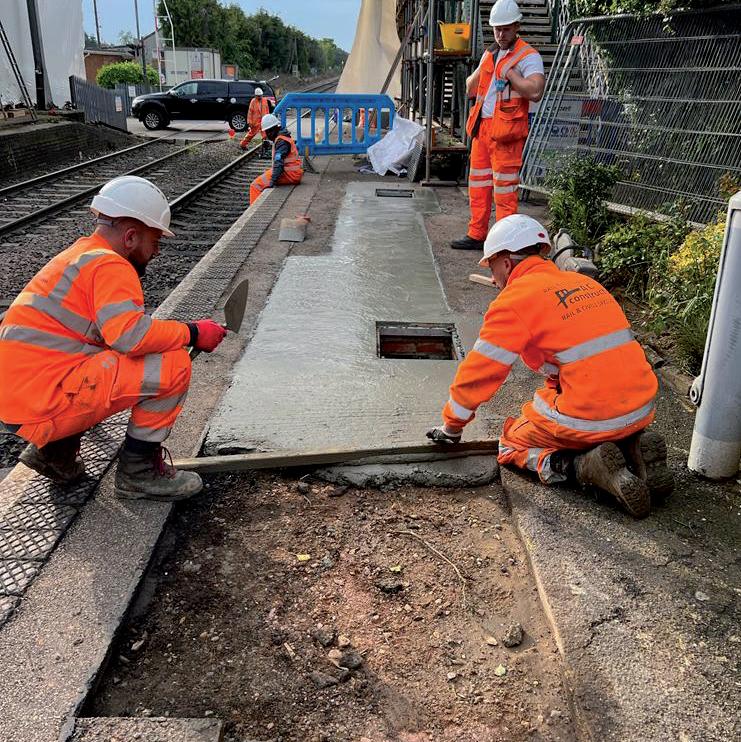
With over 20 years of Rail and Construction industry experience, our familyrun company provides expert advice and cost-effective solutions to all sectors looking for experts that they can rely on. Delivering safe and sustainable solutions at the forefront of innovation and technology, ensuring the highest quality results first time, every time. We can assist clients from advisory and design to compliance and delivery, providing tailor-made solutions to meet clients’ needs.
Installation of all Piled foundation - bored, driven & screw piles
Erection and installation of OHL Gantry structures (masts, booms)
RED, LOC and DNO foundations and platform installations (GI, Design & Install)

Platform renewals and refurbishments
Cess walkways and throughing routes

Fencing and Access stairways
Site compound establishment and access road
Trial Holes
Excavation and installation of concrete bases
Embankment stabilisation & Cess retention
De-vegetation
Piling and Soil nails

Rabbit Netting

Gabian Walls
Visit our website for more information or give us a call:
01442 731 321
info@fortisfoundations.com
www.fortisfoundations.com
The past few years have seen an explosion of technology and connectivity that has forever changed how customers and service providers interact with each other. There is now an ‘at your fingertips’ service culture, whereby customers expect every purchase, enquiry or complaint to be handled remotely and instantaneously – more often than not via the all-powerful mobile phone.
The planning, purchasing and management of journeys have moved to the tips of passengers’ fingers, giving them unprecedented levels of control and autonomy over their journeys.
This is certainly true in public transport and in rail, and anyone who knows me well will know, I am absolutely committed to improving the customer experience on the railway. In my day-to day-work at RDG, I often have to remind people “Yes that’s good, but what’s in it for the customer”, or “So what are the customer benefits?”.
In rail, it is too simple to see it as just a journey from point A to point B, it is about the entire experience; from buying your ticket, arriving at the station and interacting with staff, to your journey on-board the train and then reaching your destination.
It is also important to better understand the needs of all customers and the nuances of the journeys that create positive experiences for everyone who travels, including those with additional needs.
In 2019 the Office of Road and Rail (ORR) published an industry report with a set of recommendations for customer information, one of which was for the industry to collaborate and deliver proactive, personalised notifications to customers when changes to their booked journey occur.

In reply, we launched the Smarter Information, Smarter Journeys (SISJ) programme in early 2020, which is a cross-industry programme for delivering better and simpler customer information.
It’s worth reflecting on the scale and enormity of that challenge – not only the technological challenge of delivering improvements to information, but getting all of the industry to work together in what might seem to some a rather fragmented sector.
One aspect of SISJ version 1 was to work collaboratively with train operators, retailers, and suppliers to build a tool which notifies customers who have bought an advance ticket when their train journey is impacted (known as personalised journey notifications) by timetable changes or other delays.
I am pleased to say this has been implemented by the majority of train operators. To date, there have been over two million journeys, as well as vastly improved online journey planners.
This has also been reflected in passenger satisfaction with the quality of information during disruption increasing by 10 percentage points since the programme launched.
The Williams Plan for Rail, which is the government’s blueprint for how it intends to reform the UK’s rail industry, outlined the need to improve on board announcements and specifically reduce their frequency and repetitiveness.
In response, the SISJ team developed a blueprint for train operators to adopt and follow which clearly sets out the type, quantity, and occurrence of on-board announcements, to make sure there is consistency across the network.
Following the delivery of this work, results from our recent customer survey show an increase in customer satisfaction with announcements. There have been increases in satisfaction with the length, time and frequency of automated announcements, and an increase in the confidence with which live announcements are delivered by staff.
These are pragmatic responses to improve customer information in the tough financial climate we’re facing.
But we’re not stopping there, as we’re continuing to improve customer information by building on SISJ version 1 and moving into SISJ version 2, particularly improving the information on those endto-end journeys.
This also includes at stations by delivering improved passenger information such as knowing how many people are on-board a train, for example, and travelling on a train with more relevant on-board announcements. The impact of SISJ is clear to see.
While I can say there have been improvements, the next iteration of the programme will deliver 21 new work programmes over the next few years until at least 2030. The cross-industry team will continue to work with many of our partners to make the quality of information even better and more relevant to the individual.
That way, the customer will be able to tailor the information that is relevant for them at a time which is convenient to them.
It is important that the programme aligns with the wider strategic plan for rail, which is being led on behalf of the industry by the Great British Railways Transition Team.
It shows that by working together, as an industry, we can really make a difference to customers as we continue to create a simpler, better railway for everyone in Britain.
The crossindustry team will continue to work with many of our partners to make the quality of information even better and more relevant
HOPPECKE is an expert in customised rail battery systems.
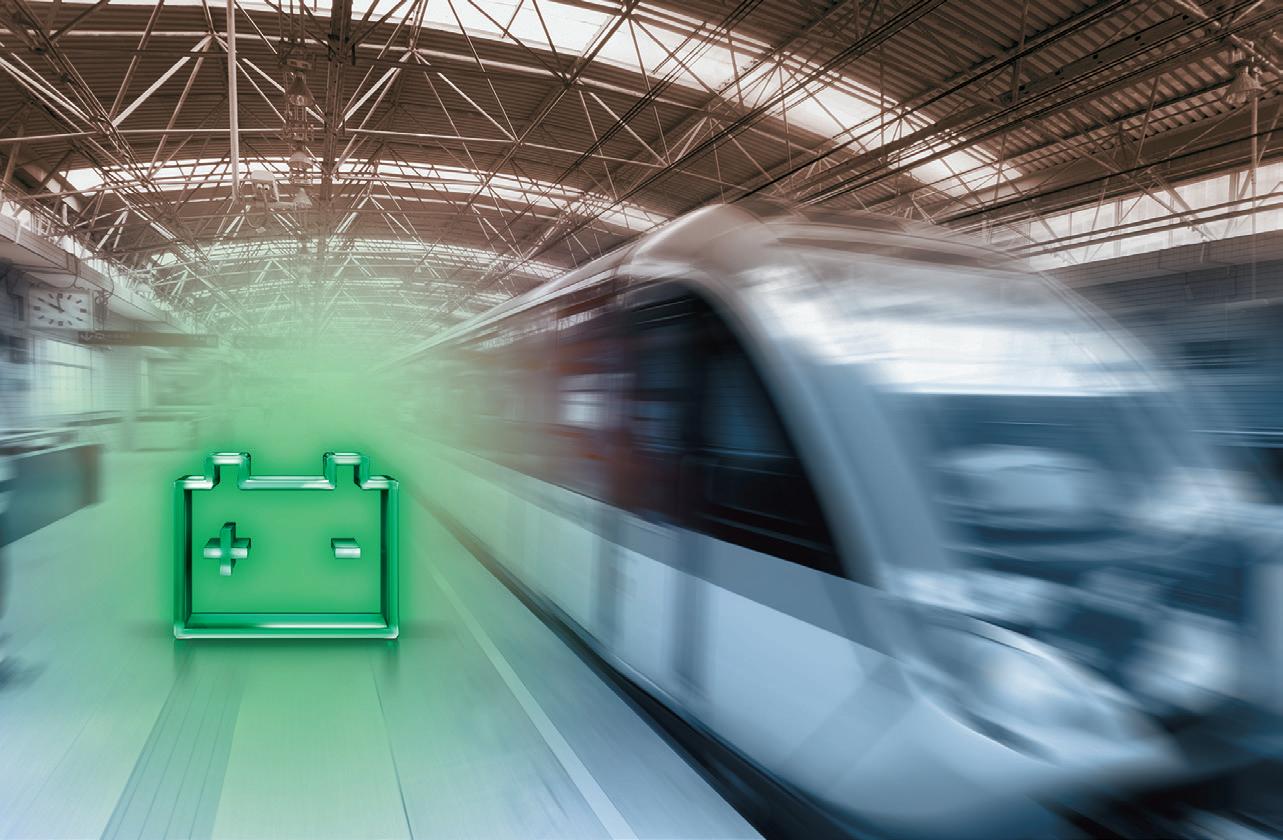

• Proven FNC (NiCad) or valve regulated lead acid batteries ensure virtually maintenance-free operation, in a unique electrical and mechanical design.
• Lithium-ion (Li-Ion) batteries offer superior energy storage and power management, including built-in thermal management in a fireproof housing.




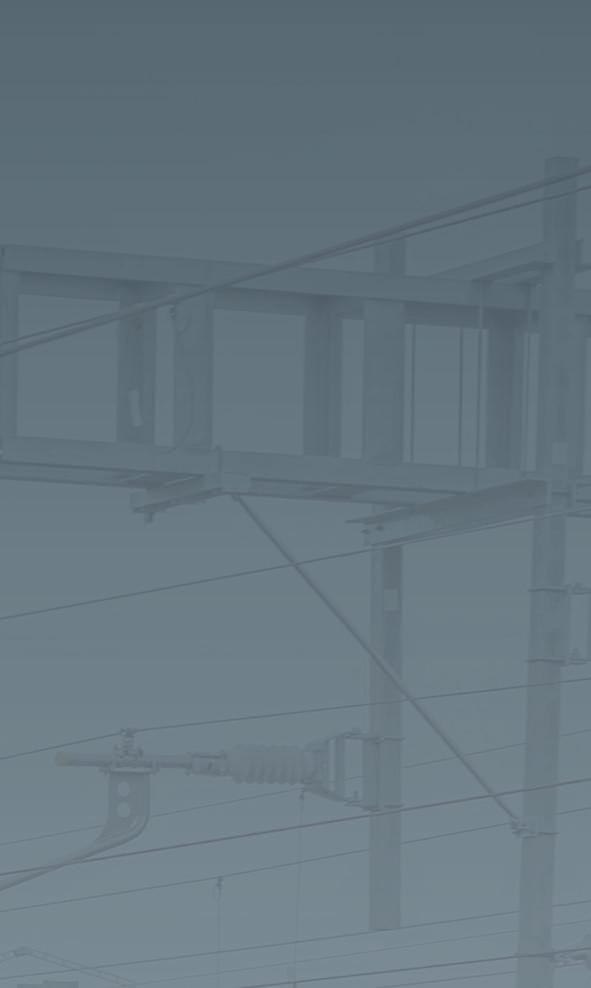



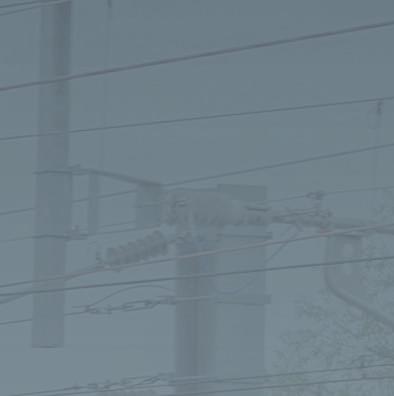











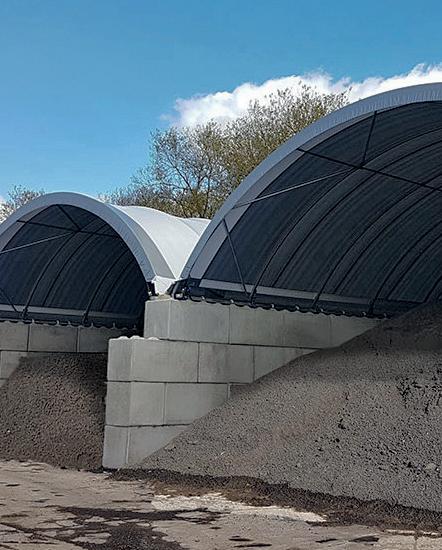








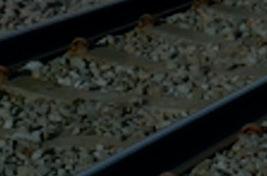






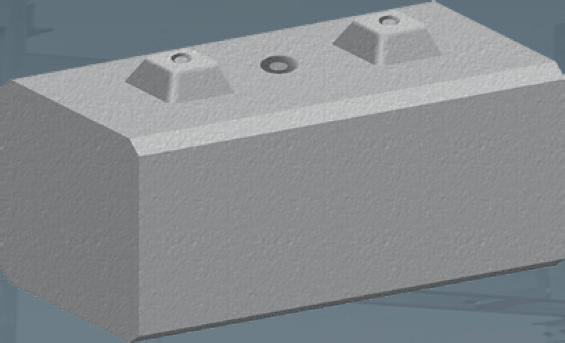










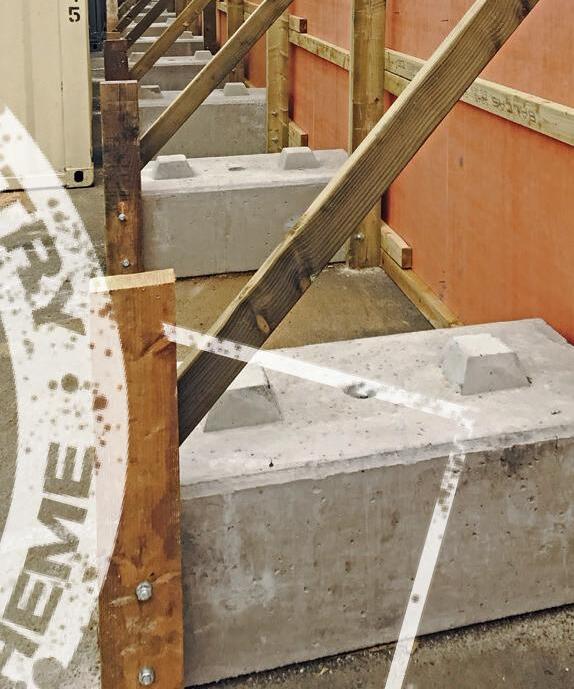










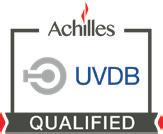


















It has been a blockbuster year for North Yorkshire Moors Railway with the railway used for Indiana Jones and Mission: Impossible just weeks apart. Chief executive officer Chris Price explains more

Tom Cruise fights on top of a moving train carriage hurtling through the North Yorkshire countryside as he tries to track down a dangerous weapon before it falls into the wrong hands.
Hollywood was at the heritage railway for the filming of Mission: Impossible – Dead Reckoning Part One
“Tom Cruise was stood on the front of an engine with a camera crew bouncing along in front of him in a 4x4 and a helicopter overhead,” explained Chris Price, chief executive officer at North Yorkshire Moors Railway (NYMR).
“It was a stunt that was done on our railway although on the big screen, it is Norway as the backdrop because of computer-generated imagery (CGI).”
These kinds of action scenes are becoming somewhat familiar for the team at NYMR. Shortly after filming of Mission: Impossible it was the turn of Indiana Jones and the Dial of Destiny, including Harrison Ford, to arrive in North Yorkshire.
“I think word is spreading that we are a good location for filming with the beautiful wide-open spaces very helpful in this CGI age as well,” said Chris. “We have a growing reputation of working well with film and TV partners and have done quite a bit in recent years.
“As well as the films, we’ve also recently done a Channel 5 series on the railway, which gave us some experience in the challenges associated with filming. In regards to Mission: Impossible and Indiana Jones, the timing couldn’t be more fortuitous.
“In respect of Mission: Impossible, they could no longer film in Norway anymore, so were looking for somewhere where he could continue in the same vain, especially with 60 per cent the filming already done.
“I think Indiana Jones came off the success of that, with location directors talking to each other. It was like the proverbial number 11 bus, with two coming along very quickly after one another. The fact the timing couldn’t have been better for us coming out of COVID was purely fortuitous.”
And there is no denying it has proved a very welcome financial boost for the heritage railway at a time when costs are increasing and the organisation tries to recover from the COVID pandemic, when services ground to a halt.
Despite the success for the railway, the filming hasn’t opened the door to Hollywood for the railway’s CEO, who joined NYMR in 2015.
“There was no cameo for me, although I did nod hello to Tom Cruise,” he said. “I was more backroom as post-COVID I was pre-occupied, although a few staff members had photographs with him. I didn’t meet Harrison Ford, but I did meet an awful lot of the staff that appear on the credits but don’t appear on the film.
“Some volunteers dressed for manning locomotives for Indiana Jones. My suspicion from what I have heard so far is they didn’t feature in either film, although they did have to go through hours of make-up to achieve the notoriety of landing on the edit floor.


Tough, innovative, with built-in time-saving features and lower cost than other systems, the Hawkstar is the target of choice for Rail and Civil Engineering requirements.

The Hawkstar prism-based target has been created to provide an affordable Automated track and structures monitoring solution complete with its Patent pending detachable base plates. The patented British-designed is a rugged monitoring target that produces high accuracy at costs significantly less than existing prism-based targets.
The Hawkstar prism-based target eliminates wasteful re-targeting using a single reflective focal point. The patented British-designed track monitoring target produces the highest reading accuracy at costs significantly less than existing prism-based targets.

• Attaches to any surface! Compatible with glues, screws & magnetic fixings


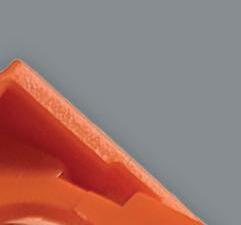

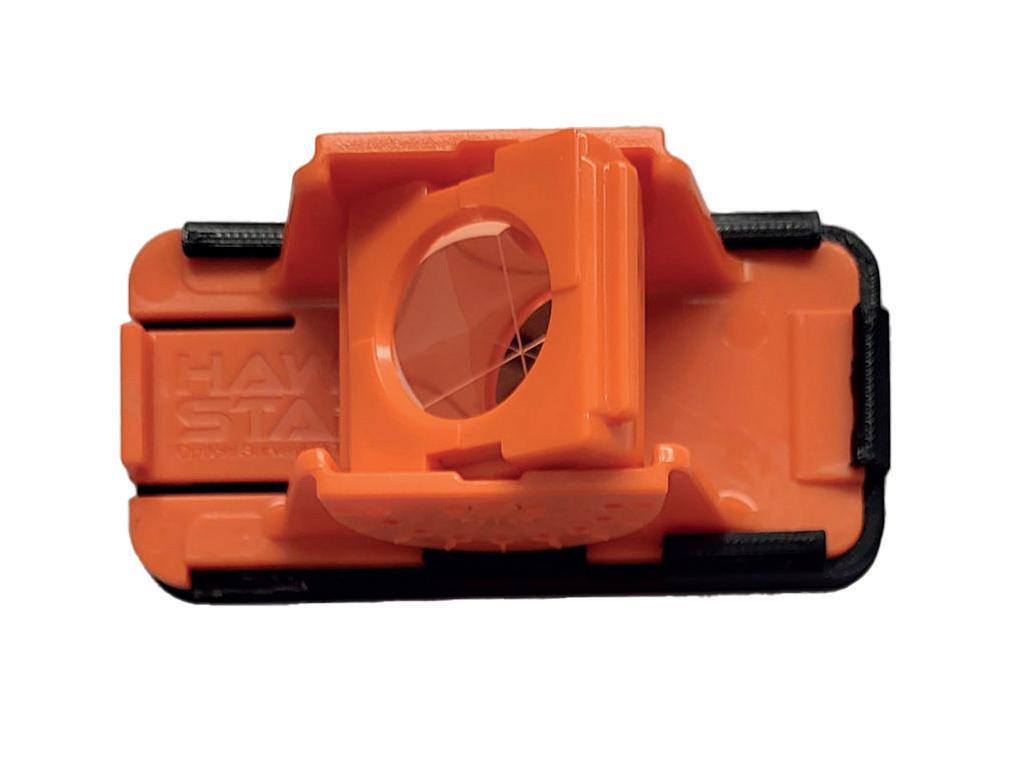
• Attaches to any surface!
• Leica, Geomax, Topcon and Trimble machines
• 250-metre range
• Ruggedised design
• 600-metre range
• Made in UK
• Ruggedised design

• Made in UK
• 180-degree capability
• 180-degree capability
• Copper tinted and Clear Prism
• 25mm shaded prism
• Designed for extreme weather conditions
• 25mm prism
• Designed for extreme weather conditions
• Patented removable back plate
• Patented removable back plate


Order a sample today!
07931510688 | jamesjtnetworks@gmail.com

We have a growing reputation of working well with film and TV partners and have done quite a bit in recent years
“But overall it has been a big boost to NYMR. People know where it is filmed which is great publicity, but there are also the financial aspects. At the time we very clearly needed the money as it is six figure sums that we are talking about, but you have got to go into it with your eyes open, it is not a free lunch.”
Filming for Mission: Impossible took place while the railway was closed to the public. The railway coaches were props, as was the locomotive, which were being pushed by two Class 66s. Indiana Jones used a lot of NYMR stock with the action taking place when the railway would normally have been open to the public.
“We had to close the railway not because filming was using all of our stock and we had no carriages, but because the stock they did use was all covered in Swastikas so I consequently didn’t think I could open the railway to the public,” he said. “They also did some scenes further up the line, but the majority of the scenes involved Grosmont being turned into this transhipment yard with cattle trucks and all sorts of things.
“It was all of our wagons and locomotives that were made up to look far more German than they actually are. Another benefit was our Armstrong oiler facility which was a shabby cream-looking modern building. They gave it a nice coat of grey paint and it looks much smarter.”
The filming didn’t come without its challenges, particularly surrounding the lack of knowledge of each other’s industries.
“For Mission: Impossible we thought they would need 30 or 40 people on the train going up to 40mph so we were writing a safety case around that to the Office of Rail and Road,” said Chris.
“And then you find out they actually want a crew of over 200 on the train.
“It was quite different to when we were involved with a Channel 5 production (The Yorkshire Steam Railway: All Aboard ) where it was a handful of people, handheld cameras and GoPros and a budget not comparable to a multi-million pound Hollywood product, where literally a small town arrives and builds itself complete with catering, accommodation and even dog walkers. The whole shebang turns up and you have about 300 people on site.
“While that is a learning experience for us, for the film industry we have to help when it comes to rail safety and regulations.
Above: Harrison Ford has played the adventuring archaeologist since 1981
Below: Mads Mikkelsen appears as villainous Dr. Voller Images: ©2023 Lucasfilm Ltd. & TM. All Rights Reserved.


“They can’t understand why something can’t be moved from A to B simply and easily and why you have to have these rules on movements. We were having to put quite a bit of resource into it to control those on site. There are some conflicts and a few 11 pm phone calls, and fundamentally it is hard work, but the financial rewards are worth the effort.”
The cameras arrived as the railway celebrates its 50th golden anniversary, having been initially opened in 1973 by the Duchess of Kent. Since then, it has become one of Britain’s most popular heritage







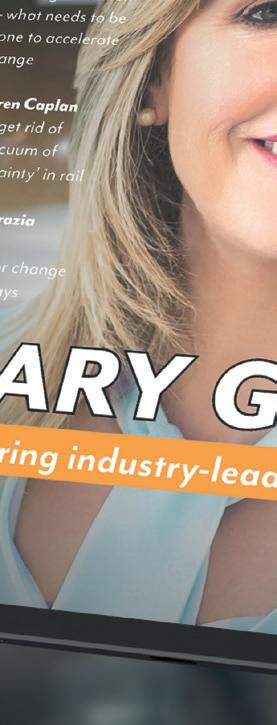
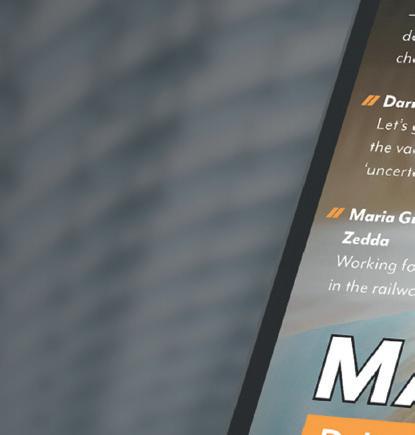











railways, welcoming more than 300,000 visitors every year and relying on a dedicated team of fulltime staff and over 900 active volunteers to run and maintain the 24 miles of heritage railway.
The Indiana Jones and Mission: Impossible films are the latest in several examples of cameras descending on the railway. Goathland railway station is known to millions as a filming location for the iconic Harry Potter and the Philosopher’s Stone (Hogsmeade Station) and Aidensfield in Heartbeat

We had to close the railway not because filming was using all of our stock and we had no carriages, but because the stock they did use was all covered in Swastikas
The railway has also played host to the likes of John Sergeant, Peter Davison and Paul ‘Piglet’ Middleton, as part of The Big Steam Adventure ; and The Yorkshire Steam Railway: All Aboard centred on NYMR.


Chris, who worked at Talyllyn Railway prior to joining NYMR, said: “The journey at NYMR was quite smooth for the first five years; the last three have been inconsistent and that has been the biggest challenge. The business model that we had pre-COVID isn’t going to work post-COVID and we’re having to try new things to find the answer.
“The 50 years is a magnificent achievement. It is a railway that has gone through thick and thin but has generally kept the graph going upwards throughout that entire period and it now finds itself as one of the most significant visitor attractions in North Yorkshire and one of the premier heritage railways in Great Britain and that is something to be celebrated.
“It has been built on the back of an awful lot of effort from staff and volunteers.”
In June His Majesty the King travelled behind Flying Scotsman in the Royal Carriages along the NYMR heritage line and met with Chris and volunteers to mark the railway’s anniversary. During His Majesty’s visit, the Royal Train journeyed from Grosmont to Pickering, where The King unveiled a plaque to memorialise the occasion.
“It was an honour to be able to commemorate the 50th anniversary of the NYMR with a special visit from King Charles III,” he said. “For all these years we have preserved our heritage railway and to celebrate this with royalty was such a privilege. It gives us the enthusiasm and joy to continue for generations to come.”
“It is now time to look ahead to see where this railway will be in 10 years’ time with an awful lot of challenges post-COVID, coal, environment issues, alongside that a difficult market.
“But I think the future is rosy for the NYMR. It will continue to go through peaks and troughs but ultimately it will always be here, I think now.
“The one thing we have is strength in people. There are an awful lot of people very dedicated to making sure this railway continues for many, many years. When we have found ourselves up against it, such as during COVID, our members donated nearly £500,000, which was incredible. That in itself indicates that there are an awful lot of people who think an awful lot of nice things about this railway, and I think that is where the strength will come from.
“The occasional Hollywood filming also won’t go amiss.”
John Sergeant, Peter Davison and Paul ‘Piglet’ Middleton prepare to embark on their The Big Steam AdventureThe business model that we had pre-COVID isn’t going to work post-COVID

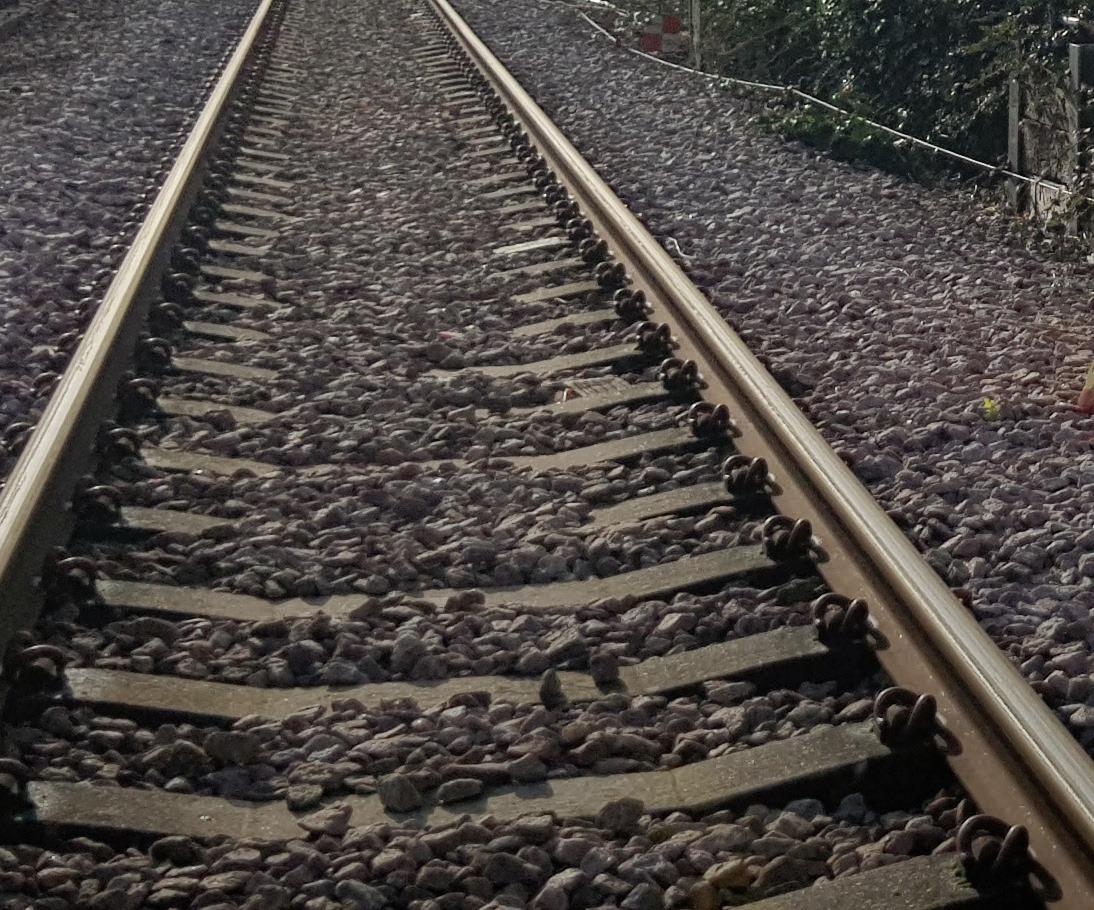
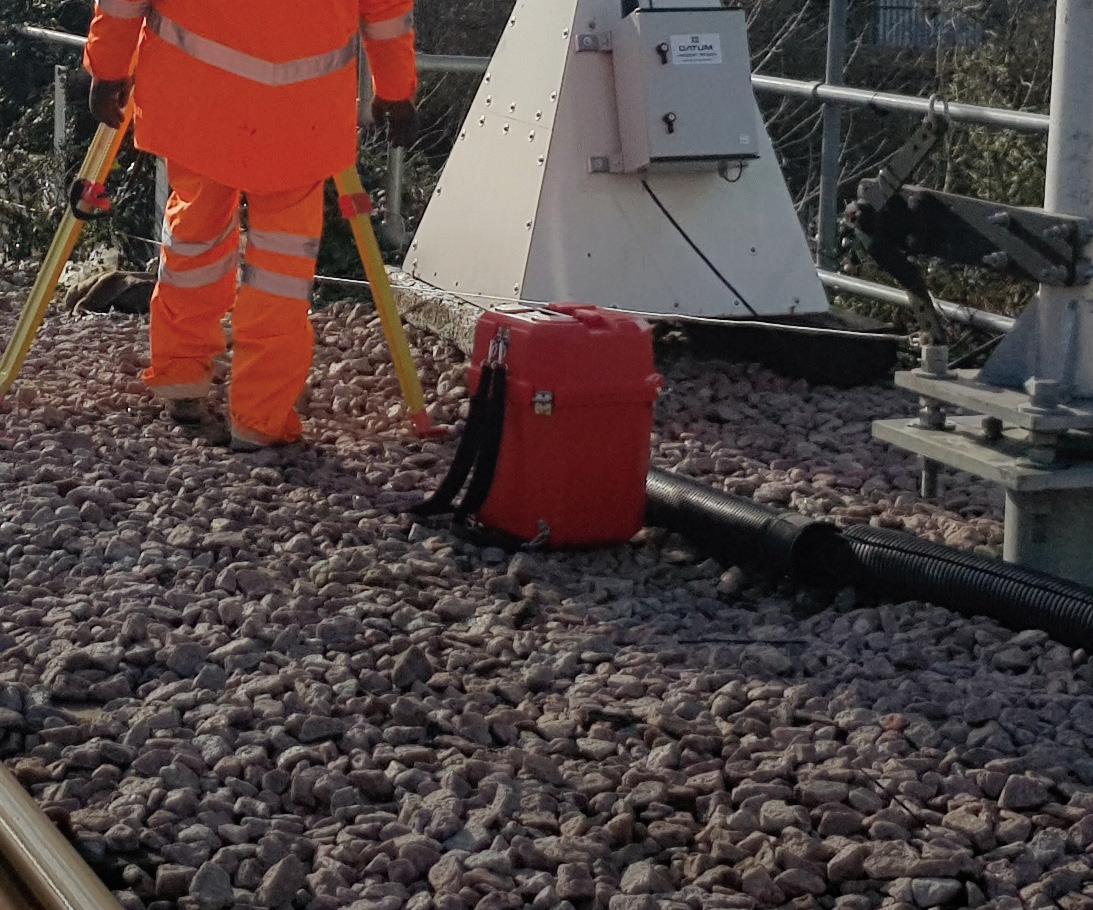



The National Railway Museum (NRM) is a hive of activity as the engineers of the future and their parents tackle the challenges facing the industry. In one area a child carefully generates small electric currents to move a magnetic ball through obstacles, nearby sand is being shaped to make lakes and mountains with a train navigating through the changing landscape, while in the far corner, children are creating a railway bridge out of huge blocks.
This is just a taster of the 18 exciting hands-on interactive exhibits in the NRM’s largest new gallery in more than a decade, a former railway engineering workshop which is now Wonderlab: The Bramall Gallery, a space created to inspire and spark curiosity in visitors around the themes of railways and engineering.
“The exhibits have been developed for the rail industry challenges, and as you can see when you look around they are quite special,” said Judith McNicol, NRM’s director, as she showed Rail Director around. “This new gallery gives young people the opportunity to really think like an engineer, with all of the interactives in here developed with the Royal Society of Engineering and rail engineers to look at what the skills are that the industry needs today and what might be needed in a decade’s time.
“We want to ensure that children have great fun while developing a spark of interest in engineering that will contribute towards tackling the UK’s shortage in STEM (Science, technology, engineering, and mathematics) skills. But let’s be honest, it is just as exciting for adults as well.”

Aimed at families with children aged 7-14 and school groups, the gallery is housed in the museum’s 1,500m2 former locomotive workshop building next to Great Hall. Alongside the interactives, visitors are also able to see live science shows and demonstrations inside the Weston Showspace and at a demonstration bar.
It is the first of the museum’s multimillion-pound Vision 2025 projects to open.








“We have always been fantastic about the past railways, but Vision 2025 is about how we become more relevant for today and into the future and with that how do we get young people excited about possible careers in the industry, with the opening of Wonderlab the first part of that journey,” added Judith, who hopes 90,000 people will visit the new gallery this year.

Wonderlab: The Bramall Gallery is a ground-breaking interactive gallery exploring the how, what and why that underpin the creation of the railways. Inside Track is invited to meet the National Railway Museum team and the artists behind it
“We then have the Central Hall and Railway Futures: The Porterbrook Gallery aimed at an older audience, which is beginning to look at the career opportunities of railways in the future, so I hope we will be helping the rail industry get some new creative minds coming through working for them in the future.
“The next big project as part of Vision 2025 will be New Hall at Locomotion in County Durham. The new building there will take 50 more vehicles in it, which when open in spring next year, will be the largest undercover rail vehicle collection in the world.


“In 2025 Central Hall will open in York which is a brand-new entrance to the museum based around the roundhouse idea, but within that, we’ve also got the Futures Gallery which as the name suggests will be about the future of the railways. There will also be the refresh of Station Hall and various estate improvements, so by the time we get into 2026 we will have quite different museums at both Locomotion and NRM.”
On entering the Wonderlab: The Bramall Gallery, a 12 metre high and 16 metre wide brightly coloured inflatable sculpture dominates the space, a dramatic new permanent artwork called ‘Mass’ created by Steve Messam.
“I wanted to create something which explores that space which starts below ground level at what was the wheel drop, and goes right up to the ceiling, bringing it all together,” said Steve, who explained it is 100 cubic metres of air at 20 degrees. “All that is holding it in place is air and it is a focal point, that if you want to probe has science and engineering within it, but actually it is art.
“The artwork is very bold and stands taller than a house and I want people to have an emotional reaction when they experience it for the first time. Art is about experimenting and pushing the boundaries and engineering is all about finding solutions, so it feels appropriate that it is to be part of Wonderlab.”
Particularly popular is the opportunity for visitors to build and design large scale structures like bridges and towers in Pippa Hale’s ‘Play Revolution’. This colourful interactive artwork comprises large foam shapes that can be moved around the space, encouraging visitors of all ages to think like engineers.

Vision 2025 is about how we become more relevant for today
“It is an interactive artwork with brightly coloured walls, one of which you can climb into, inspired by the museum’s archives and collections from technical drawings from the Victorian era for infrastructure like bridges and tunnels, to livery for trains and the trains themselves,” said Pippa. “When you come into this space you can break down the big blocks of foam and build whatever you like, building at scale, collaborating with other people to design and build like engineers, test it and then adapt it or knock it all down and start it again.
“Creating this was challenging, but incredibly enjoyable and it is great to see it all come to life and the kids and adults having a good time, learning about balance, coordination and strength, as well as the social aspects of things. It is a real hands-on, social, experimental learning space, coming up with ideas, solutions and most of all having fun.”
The gallery’s major funding partner is the Liz and Terry Bramall Foundation who have supported it with a gift of £2.5 million towards its creation in March 2022. Wonderlab has also received funding from the Garfield Weston Foundation, Eversholt Rail, Friends of the National Railway Museum, the Royal Commission for the Exhibition of 1851, The Holbeck Charitable Trust, the Kirby Laing Foundation, and the Charles and Elsie Sykes Trust.
Among those attending the opening day was railway engineer and writer Gareth Dennis, who said: “I am exceptionally excited by it all, it is brilliant, it is probably the best engineering interpretation space in the country right now. There has been some scepticism of the space replacing the workshop; I’m so glad as I’ve come in here all of that has disappeared. I cannot think of a better way to use this space to enhance the whole museum and to engage a much greater section of society in getting involved in this.
“As an engineer, this is what the inside of my head looks like. The sandpit that you can shape and mould to have railways move around is brilliant, I was having fun with the friction exhibit, the big machine in the middle, this is stuff that kids are going to run in and get involved with.
“As they get older this space is going to adapt with them because of the interpretation that is next to the objects. The older kids will find it interesting, this is why and how this does this, and you can go and look at this object in the rest of the museum that will show you how that works. This is not just an isolated play space. This is fingerposts out to the rest of the museum.

“Within Vision 2025 the NRM will start being the railway museum and stop being just the steam train museum. This is about creating the excitement, the energy in the generation to really start tackling this stuff in the future, and for me that is what this space is all about. It is incorporating various people, who have different ways of interpreting the world, different ways of learning, who are all accounted for here and to be honest, this is going to entertain the parents as well. It is a space that is going to engage everyone.”
To find out more about Vision 2025 and to book tickets for Wonderlab: The Bramall Gallery, visit: www.railwaymuseum.org.uk/2025/wonderlab-thebramall-gallery

The National Railway Museum in York has the largest collection of railway objects in the world and is the most visited free attraction in the region, receiving more than 572,577 visitors in 2022.
The collection includes more than 260 locomotives and rolling stock, thousands of railway objects, and over 1.75 million documents, photographs and artworks in its archives.
The National Railway Museum forms part of the Science Museum Group, along with the Science Museum in London, the Science and Industry Museum in Manchester, the National Science and Media Museum in Bradford, Locomotion in Shildon, and the Science and Innovation Park in Swindon, Wiltshire
I am exceptionally excited by it all, it is brilliant, it is probably the best engineering interpretation space in the country right now




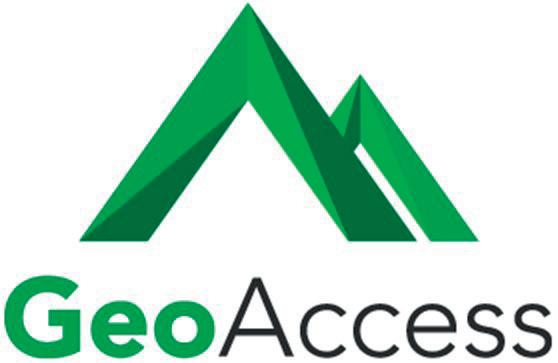







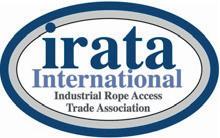
TRU East’s Donald Doughty has recently become the T Level Ambassador Network’s 300th ambassador. He explains how technical education is helping get people on board the industry at the time it needs it most

The rail and construction industries are facing a chronic skills shortage caused by various factors such as an ageing workforce and a lack of applicants within these roles. Without a workforce with the necessary skills, the country’s growth and economic output are put at risk and the work needed can’t be delivered.
Playing his role to change that is Donald Doughty, a senior project manager at J Murphy & Sons Limited, which alongside Network Rail, VolkerRail and Siemens is a partner in the TRU East Alliance working on the Transpennine Route Upgrade. He was recently appointed T Level Ambassador Network’s 300th ambassador.
“The T Level Ambassador Network brings together dedicated employers, advocating for the benefits of technical education in the business community,” he said. “Being the 300th ambassador is great for me and for TRU East as we inspire young people joining the sector and aid in bridging the gap of the ageing workforce.”
T Levels were introduced in 2020 and are equivalent to three A Levels but, crucially, they enable young people to gain the qualification through 80 per cent classroom-based study and 20 per cent industry placement with an employer, for a minimum of
45 days. This means on completion of the course they arrive in the workplace having already gained hands-on experience and a solid foundation knowledge of the skills required.
“Both the construction and engineering sectors have been dealing with a skills shortage crisis for many years,” said Donald. “One of these difficulties is the ageing nature of our industry’s workforce.
“As engineer and construction employees retire, they leave the sector, taking their valuable knowledge, skills and expertise with them, and employers don’t have an existing pipeline of talent to replace them.
“However, T Levels are helping with the issue between those retiring and the slow rate of new hires. As T Levels involve a more practical learning environment, they provide early exposure to careers within construction and engineering so students with an initial curiosity about the roles within the industry get to learn more and have their questions answered by working with experts.”


Donald is passionate to play his role in addressing the skills gap and also in providing a platform for the next generation of workers. He started his own journey as an apprentice down the coal mines in West Yorkshire as a teen. When the mines closed, he retrained firstly as a postman and then as a railway engineer, completing a degree in project management and a master’s in railway systems.
“The construction industry has been focused on the here and now because of the way contracts operate,” said Donald. “Schemes like T Levels offer early access to the talent pool, and we’ve seen at TRU East that it is a great way of getting people on board, with our first T Level student retained by the business on completion of her course and she’s now a civil engineering degree apprentice.”
T Levels provide students with a more accurate insight into what’s on offer as they start their careers. Once they move onto the next step of their education, they’re able to do so with a bank of work experience on their CVs, which can increase their future job prospects.
Donald says this is particularly useful in eliminating any misconceptions young people have about the industry.


Donald added: “Most assume engineering and construction roles are predominantly manual, but they encompass a large variety of specialisms including planning, architecture, marketing, legal and technology roles. Hosting T Level students helps them gain insight into the realities of the industry, so their teaching is both holistic and realistic.
“We also get to introduce students to the contemporary skillsets we need and look for in new talent and show them what they might work on and across a range of jobs including engineers, supervisors, planners, quality surveyors and project managers, on site and in office-based roles.
“Overall though, as an employer, you have a part to play in order to ensure that its recruitment pipeline is consistently attracting new talent –T Levels play an important role in this.

“By positioning your business to be more accessible to future talent, you’re already offering students an option to come to your business. This leads to inspired, engaged and passionate individuals that will drive your business, and the industry forward.”




To find next level tech talent with T Levels visit https://tinyurl.com/bdh9zven




In January 2000 I was about to start working in central Birmingham, which involved a daily commute by train, and I bought my first-ever mobile phone. It was a bit of a brick, and it even had an aerial sticking out of the top. The screen was bright green and it didn’t do much more than make phone calls, send text messages (I seem to remember it saved about ten) and allow me to play a game called Snake, to which I became addicted.
It was a very simple, straightforward device, and when you charged it up it lasted for two or three days. A year or so ago I upgraded my phone to a new iPhone. Twelve months on, I still don’t know half of what it does, although I know how to do the things I need to do. The downside of this phone is that it definitely doesn’t go two or three days without needing a charge. Not only does it need plugging in every night, but it often needs a charge in the middle of the day. When the phone gets down to 10 per cent
it switches onto low battery mode and throws up a message to tell me, “to maintain power in low battery mode, we have disabled key functions.”
The phone decides that to keep going there are things I can’t do anymore. It decides what the ‘nonessential’ tasks are and tells me that we can’t do them anymore until I’m powered back up. The more I thought about this, the more I realised how many similarities there are to how our bodies and mind works.
When we are running low on capacity, our bodies start to control and manage what functions we are capable of doing.
I seem to have met an unending line of people recently who are living in low-battery mode. These are people who are feeling as if they are running with their battery in the red zone and it’s making it harder and harder to fully function. I want to suggest a few things that we can do to help people stay at optimum power and maintain their wellbeing.
We’ve all been anxious looking at a red battery icon, or wandered around with a charger looking for somewhere to plug in. I have a power bank I carry in my rucksack to make sure I’m never out of charge. But the truth is that some days I plug in for short bursts, giving me just enough energy to keep going for what I need to. Short term fixes like this aren’t good for the optimum capacity of the battery though. It’s the human equivalent of living off caffeine fixes and sugar rushes – an immediate surge that doesn’t last long. Even charging again and again from my power bank isn’t always sustainable, as I discover on the occasions I’ve forgotten to recharge that the night before. Remembering to charge my phone overnight is the best and most reliable way to get through the day - for me it is practices of eating healthily, sleeping regularly, exercise and other wellbeing techniques that help me to find a place where my energy, attention and mental health are sustained.
We all know when we’re living well, and when we’re living from one moment to the next. I tell myself off sometimes that I check my emails or messages too often. It’s a bad habit of mine that I like to feel indispensable. For any responsibility I have on the railway, I have a greater one to myself to ensure that I still have the capacity to keep going tomorrow. It’s ok to run on two-per cent occasionally, but not for the long term. It might mean I ration what I choose to use my energy on, or say no to things to make sure my energy lasts until I get to a place of recharge. But we need to know when the next time we can top up will be, otherwise our screens go blank and we just get that flashing ‘connect to power’ message.
Some things use battery more quickly than others. If I’m out in the middle of nowhere, away from signal and a phone network, then it can feel like I can watch the battery life drain away. The phone constantly searches for and seeks a way to connect, and when it can’t find anywhere it uses up the resources much quicker. Connectivity is essential for the phone to be able to do what it is designed for, and without it, the phone isn’t much use at all. Connectivity can also be an essential part of our life and our wellbeing. Think back to the lockdowns of the early days of the pandemic when our interactions were limited. The first thing that many of us learned to do was communicate in a new way. We learned Teams, Zoom, Facetime and Skype, discovering how to maintain our connections to others.
Unresolved experiences from our past, experiences of trauma, former difficulties in the workplace or at home or remnants of physical, mental or emotional demands can loiter like apps open in the background
There is a natural reaction, when facing difficult seasons, to isolate ourselves, but this can drive us into separating from others. However, both resilience and recovery can be more effective in community, when we are engaged, connected and living life with others – whether that’s in a personal life or at work. Connections matter. Making personal links between colleagues matters.
Being in a place of isolation where you have no way to celebrate achievements or share pain can be exhausting. Whilst for many, particularly those of us who are introverts, there is a benefit and a place for being alone, there is also a real and tangible benefit to having a place to belong. For those staff whose role on the railway demands an isolated method of working – drivers, signallers, MOM’s, those who work from home extensively – how do we creatively provide opportunities for connection between them so that they may find time to be part of a group greater than themselves?
My mum complained about her battery running out, despite the fact that she never uses her phone. It sits on the side in the kitchen most of the time, except when she reads or writes a WhatsApp message. “It’s only lasting a day,” she said. When I looked at her phone, still running in the background were all the apps she’d ever had open still there using up her memory and power.
She couldn’t see all the things in the background that were still there, despite her not using it anymore, so I showed her how to close each app. Life can be similar. Much of our energy is consumed by the stuff we do day-by-day and hour-by-hour, but we also find much of it is used up by things from our past that drain away our capacity.
Unresolved experiences from our past, experiences of trauma, former difficulties in the workplace or at home or remnants of physical, mental or emotional demands can loiter like apps open in the background.
They are unseen to so many, but there dwelling behind the scenes in our lives, consuming the capacity of our day. We may not see them, in ourselves or in others, but these things take up space in the background of our lives and drain energy away.
Some company cultures push uncomfortable or difficult issues into the background. They leave them minimised, and let other things push to the front, but those difficult topics remain in the background draining the organisation of passion, energy and life.
I sat with a team leader at a station today, following a difficult incident. He’s been on the railway for years, and had many managers, and today he said, “I’d rather have someone make a decision and deal with something difficult, rather than just pass on it, and let it rumble on.” Sometimes, like closing an app down properly, we need to take the time to fully deal with some of the things that can eat away.

We can either cover up the struggles, or we can address them. This can be the difference between a healthy and toxic work environment.
So, in a world where we are never far from our devices, let’s try to find those places where we plug back in sustainably, search for meaningful and restorative connections, and deal with the challenges that drain away our energy rather than leave them consuming us in the background. Life is more complex than a mobile phone. At some point, this handset will become life-expired and past its functional best – at which point I will have a new one. I have a drawer under the bed filled with old devices that have been replaced. Alas, it’s not that easy with life. We can’t just replace every few years when we’ve misused and abused life – we need to genuinely think about sustainable plans for living. We need to ask, “what condition will life be in when 2024 comes, or 2030.”
I got a letter recently from HMRC telling me that the date when I became eligible for my state pension was 2049. If I’m honest my heart sank a little and I thought to myself how far away that seemed. The truth is, though, it served as a reminder that I have to sustain my way of working and living from now until then. I don’t know what I’ll retire from in 2049 (if I do), but I know it takes action now to ensure I’m still fit for purpose.
twitter.com/birdsnestsblog
mike.roberts@railwaymission.org
Much of our energy is consumed by the stuff we do day-by-day and hour-by-hour














The AC / DC Earth Leakage Unit is a residual current detection unit which is powered from the vehicle’s battery or AC supply and measures the sum of the current in the primary ‘supply and return’ conductors passing through its aperture.
During normal operation when there is no earth fault or imbalance present in the system, the current in the conductors cancel each other out so no fault is triggered.
The measured residual current signal is filtered and rectified before it is fed into a comparator circuit. If the current is greater than a set detection level, then a fault is signalled via volt-free relay contacts. The fault output may reset after a delay if residual current falls below the desired detection level or remain latched in the fault state until the unit is powered off and on again.
Rowe Hankins’ has developed a new dual trip AC Earth Leakage Unit that is digitally programmable and forms the next evolution of current imbalance detection products and systems.


Available for OEM & Retrofit applications

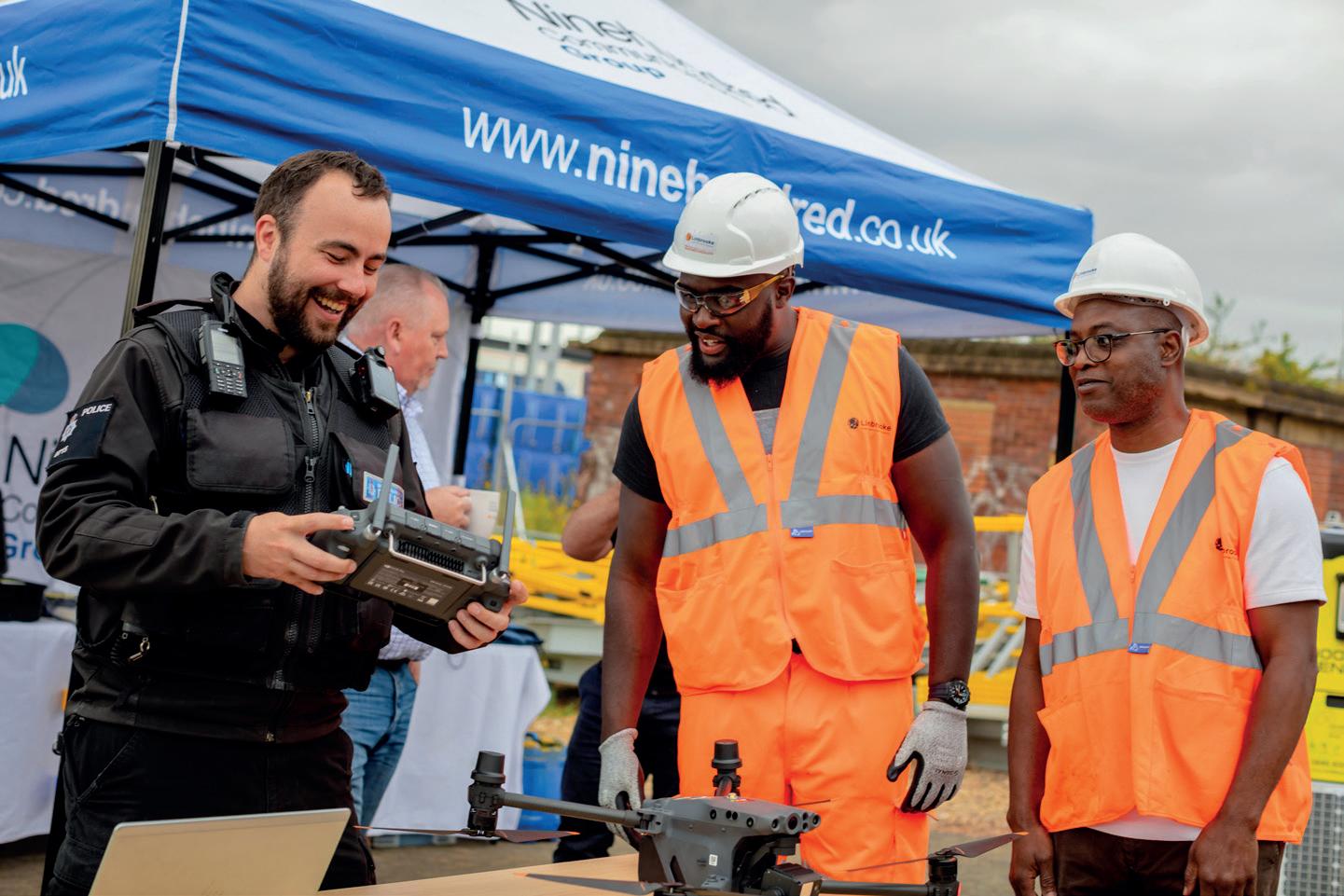
Gathering at the firm’s West Hampstead project offices for the quarterly event, Linbrooke employees, suppliers and Network Rail colleagues heard from four key speakers: Rob Cairns, capital delivery director, Eastern Region, Network Rail, Jim Mansfield, route operations manager (South) East Midlands, Network Rail, Will Wilson, CEO, Linbrooke Services, and Scott Louder, rail delivery director Linbrooke Services.
The event focused on four critical themes: the culture within the rail industry, electrical safety at work, safety critical communications, and fatigue management.
Discussing the importance of culture and what it meant to him, Rob praised Linbrooke’s West Hampstead Life Extension team – adding that the organisation’s data suggested it had a strong safety culture.
The event’s 50 attendees learned about the importance of comprehensive communications, watching videos of electrical safety practices and listening to safety-critical communications (including pre-recorded calls between the signaller and COSS). Industry-tested fatigue management tools were also discussed, with Will reiterating that anyone working overtime must adhere to 12-hour shift rules and risk assessments (including travelling time and resting period).
During his speech, Rob suggested that Linbrooke’s “enviable” accident data was indicative of a strong safety culture – adding that organisational culture and safety are inextricably linked.
He commented: “Listening to Scott talk powerfully about what he would give back to his workforce, is what safety culture is all about. We don’t have it everywhere in the industry and that’s a problem for me, because one of my jobs is to make sure that we spread best practice and create good culture.”
Rob went on to discuss the potential link between high suicide rates and a lack of diversity within the rail construction industry, suggesting that workers were more likely to open up if their organisation employed the right proportion of women.
He said: “I think there’s a very clear link between the type of culture you have, and the things people talk about on a day-to-day basis.”
Rob added that train performance levels were just one measure of success for the industry. He pointed out that safety was the priority, with teams working
incredibly hard to ensure that the UK’s railway remained one of the safest in Europe. These teams, he commented, must be rewarded for their efforts.
He said: “It requires a phenomenal amount of effort to make that true – there’s a lot of background effort, that culturally we cannot afford to not reward. You can’t say to people in the industry that what they did there was not important.”
Touching on how managers could create the right culture, Rob again suggested that it was important to “talk about the right things” – including historic safety issues.
He revealed that one issue had caused 60 per cent of the passenger deaths on Britain’s railways since their inception, explaining: “(The issue is) that a signal person has got a high speed train coming through and also has a slow running train within the proximity of their signal box, and brings the slow running train to a stand to let the high speed train through. They then forget that it’s there, and the next high speed train that comes through runs straight into the back of it.”
Rob stated that, while modern interlockings had helped to address this issue, it was important to reflect on and learn from the past.
He added: “My pledge is that we should still talk about these things. If we’re so risk-averse and focused on safety, who are we to forget about the things that really matter?
I think there’s a very clear link between the type of culture you have, and the things people talk about on a day-today basis
Rob then looked to the present, discussing a 2020 incident during which an OLE operative was seriously injured by another worker from a second tier contractor, who ran into the back of his vehicle in a large road railer. It was later revealed that the worker at fault had lied about his working and rest times.
Rob said: “When you’ve got really complex supply chains like that and there’s a big difference between the tier threes who are doing the work and the tier ones in the office, it’s less likely that those people will have quality conversations with the people on site… it’s all because the culture of those long supply chains is not what we want.”
He concluded by urging industry professionals to look beyond the “distractions”, focus on safety, and “get really passionate about the things you talk about on a day-to-day basis.”
Scott echoed these sentiments, commenting: “Being safe is what you do and think. We periodically host in-house safety events to reinforce our safety messages to our employees and suppliers. At the end of the day, all I care about is our people getting home safely and I want people to know they can talk to me anytime. It’s all about being approachable, and I will do everything in my power to make sure my people can trust me to speak up.”
Linbrooke’s rail delivery director explained that, during Linbrooke’s West Hampstead Life Extension Project, he and his team had access to dedicated local on-call managers.

Addressing attendees, he said: “I’m always on call to those people, and if there’s something you’re concerned about, even if it’s someone else, pick up the phone. I have the power to contact them, and we can make it right.”
Scott stated that profit must not come at the expense of employees’ mental and physical health, adding: “I take a lot of confidence and comfort from the fact that you have stopped work on site for safetyrelated reasons.”
Picking up the theme of safety critical communications, route operations manager, South (East) Midlands, Jim, stressed that structure was key. He explained that every conversation should begin with an opening ‘handshake’, during which both parties stated who and where they were, before relaying this information back to one other to confirm they had understood it.
He added that it was crucial operatives provided their exact location during this handshake, ensuring that the correct section of line could be blocked, and irregularities avoided.
Finally, Jim stated that callers should avoid confusing actions with information, ensuring that both parties ended the call with a clear understanding of what the subsequent actions would be.
He commented: “Everything we all do in this room is safety critical communication. Every time you speak to someone, whether that’s a colleague, boss or signaller, that is safety critical communication, and you must consider it as such.”
Linbrooke’s CEO, Will, also addressed attendees directly, urging them to “think twice before you do any action and use your common sense.”
He said: “The only person who can make sure it’s a safe environment is you. You’re the one who’s there, looking at where you are and all the circumstances. I would much rather you said something doesn’t look right and ask the question, rather than ploughing on when you are uncertain.”
Will added that, while he was proud of Linbrooke’s safety record, there was still work to be done.
“I am very proud that Linbrooke surpassed one million hours worked without a significant incident. But we don’t get really excited as we’re only as good as the last time we had an incident, and anything could happen now. It’s all about prevention,” he commented.
About Linbrooke: Linbrooke is a leading UK engineering company specialising in the design and integration of multi-sector power and telecom solutions, combined with rail related signalling, telecoms and power systems and multi sector, multidiscipline consultancy.

The only person who can make sure it’s a safe environment is you



It is a legal requirement for all scaffold structures to be inspected after handover and every seven days thereafter or following any adverse weather conditions and/or any alterations. This must be done by a competent person with the correct level of training.
Leading the way in achieving this is Tagway, one of a few companies fully qualified to offer independent scaffold inspections for the rail industry. The organisation has a proven track record of providing a fresh and experienced set of eyes to ensure the structures are safe and comply with legal requirements.
Tagway has inspectors qualified to inspect both basic and advanced designed scaffolds and give a client or contractor peace of mind, knowing it is regularly inspected and safe for use.
The business is led by director and owner Adam Colby, who has worked in scaffolding for several decades. “It is never the best idea to mark your own homework, so instead of the checks being carried out internally, Tagway is an independent scaffold inspection company offering a reliable service backed up by a well-established management and administrative team.”
Adam set up Tagway six years ago, after noticing an opportunity for independent inspections of scaffolding. What started as one day a week, alongside other work, has since grown to a team of six working five days a week covering the Home Counties, London, Wales, Birmingham and Devon.
“Our clients benefit from a faster service, with the ability to manage all scaffold requests and decommissioning, as well as making sure all scaffold structures have complied with current legislation,” he said.

“Safety is the number one priority for any scaffold structure which is why we have the experience and systems in place to simplify processes, minimising disruption while minimising the costs.”
To ensure that scaffolding has been checked and is fit for purpose, Tagway uses a digital system that supports businesses with inspection planning, equipment inspections and inspection reporting to maximise safety, improve resource performance and minimise costs.

Adam said: “Safetrak helps you report and communicate on the test status of your scaffolding for health and safety, and maintenance – helping you to improve compliance with industry standards and
enhancing the performance and safety record of your business.”
Tagway’s inspection services include weekly inspections by a fully qualified inspector, handover certificates, inspection certificates, pull testing certificates, fully detailed reports and Fall Arrest Safety Equipment Testing (FASET).
All the company’s advanced scaffold inspectors are Personal Track Safety (PTS) qualified to carry out scaffold inspections for the rail sector. The business also passed its RISQS vigorous audit process earlier this year, cementing its position as a go-to for scaffolding inspections for the rail industry.

“I saw a gap in the market coming off the tools and setting up on the inspection side of scaffolding and although it has been a lot of hard work it has really taken off with some great clients and repeat work,” he said.
“It has been a real success and I’m really proud of where we have come as a business. I am looking forward to where we can go, playing our role in ensuring that scaffolding is safe, ensuring that workers arrive home safely.”
Visit http://tagwayltd.co.uk/ for more details.
LIFTING JACKS & BOGIE LIFTS BOGIE LIFTS
Lifting and inspection equipment you can rely on for all maintenance of rail vehicles.










With 40 years’ experience on heavy duty lifting solutions, Totalkare combines world class products with industry leading support to facilitate effective maintenance and repair.



SYNCHRONISED
REQUEST A QUOTE


















6,000 - 14,000KG




HYDRAULIC LIFT PLATFORM



The battle for optimism about the future of rail continues.




On the positive side, the government spent billions of pounds on rail during the pandemic to keep the network open, showing how important it considered rail was to UK connectivity in difficult times. Its proposed funding in the Integrated Rail Plan for the North & Midlands and major projects like HS2 (albeit paused and reduced from what it needs to be) is not to be sneered at. The recent potential inclusion of Bradford in the Integrated Rail Plan (IRP) is encouraging. The fact Control Period 7 (CP7) funding for Operations, Maintenance & Renewals set out last December (and February, in Scotland) has seen a real terms increase on CP6 at a time when most were expecting cuts is positive. The accompanying CP7 High Level Output Specification commitment to smoother work pipelines and more supplier engagement on rail work is also welcome.

However, despite this background, there is a real concern that the future of rail is being thought of in terms of ‘managed decline’, at the very time when there is significant evidence to the contrary; rail is back growing again and needs more capacity both now and in the years ahead. Further, the potential hiatus and the communications vacuums on rail reform and legislation, on the Rail Network Enhancements Pipeline (RNEP) announcements, on both new rolling stock and refurb orders, on the Government’s decarbonisation plans for rail, and on the roll out of digital signalling, to name just a few issues, makes what should be a future golden era for rail that much more difficult to deliver.
This hiatus and communications vacuum is all the more surprising when the evidence suggests that more and more people are using rail, and paying for it too. The Department for Transport’s (DfT) published data shows that by April this year, the daily average for passenger numbers was at 98.3 per cent of preCOVID levels, and on almost half the days that month – 14 out of 30 days – it was between 101-106 per cent. Freight returned to 100 per cent in autumn 2021, though the recent strikes have had a temporary impact on this.






Darren Caplan, chief executive of the Railway Industry Association (RIA), appeals to all rail industry colleagues to challenge the caveats, ask for the evidence, and make the point that it is far too early to talk of dispiriting ‘new normals’ in his latest column
On revenue, this too has been steadily trending upward. While there is of course much work to do to get back to pre-pandemic levels, when there are no strikes, revenues are now being reported in some circles as over 90 per cent of pre-COVID, with leisure actually higher than pre-COVID, commuting at 90 per cent plus, and business travel the main laggard at just below 45 per cent. With the right policies, there is no doubt scope to grow revenues further –we just need to incentivise the industry to focus on its customers, and take a genuinely whole system and long-term approach.
Of course, we must be realistic about the current health and future potential of rail in the UK. But all too often we inadvertently talk the industry down – maybe to convey a less optimistic picture in the face of workforce negotiations or to back up that picture of ‘managed decline’ which some want to paint for the future. But we could just as easily make a convincing case for an optimistic future. The fundamentals for rail are good – we know there is demand to travel, and with a growing UK population and growing road congestion, especially in cities, the railway will continue to be the spine of the national transport networks.
Those who urge caution that the national passenger numbers include a buoyant Elizabeth Line – contributing a sixth of the passengers – should bear in mind that only around 30 per cent of those passengers are new.
Looked at this way, only around five per cent of the overall total are new, and so a potential minor ‘skew’ on the current buoyant passenger figures (which incidentally are being achieved to a background of industrial action and poor service levels – imagine how much higher they would be were it not for that).
Similarly, on revenues, we’re often told these days we should adjust for inflation and reduce the figures by 10 per cent or more. Thus, using this method, you could argue revenues are more in the 70-80 per cent range. Yet back in 2019-20, no one was saying we should adjust rail revenue figures because inflation was artificially low then and there was no cost-ofliving crisis.
If we were to adjust for this properly today, we could take the current revenue level and revise it upwards to take account of the fact people have less disposable income and money in their pocket compared to pre-COVID, yet are still paying to travel extensively by rail.
There is a reason we need to make the positive case. Continually publicly using lower passenger and revenue figures with countervailing caveats – often based on measuring periods where there has been a high level of industrial action, which itself skews the figures downwards – simply makes it harder to attract new customers, new workers and new infrastructure investors into UK rail. After all, who wants to join a declining industry?
This discussion comes at a time when the National Skills Academy for Rail tells us we need to double annual apprentice numbers to 5,000 per year, and to find 150,000 new workers by 2030 if we are to have the workforce we need in rail in the next five or six years. Being optimistic about the present and the future is essential to deliver on this.
So I would appeal to all rail industry colleagues to challenge the caveats, ask for the evidence, and make the point that it is far too early to talk of dispiriting ‘new normals’. Rather the numbers and indicators are dynamic and are just as likely to go up in the future, not down. We shouldn’t be planning for ‘managed decline’.
To finish this column, I recently gave a speech to the RIA Annual Dinner & RISE Awards in which I listed off 10 things RIA and its members want the Government to get on with:
1. Sort Great British Railways and rail reform legislation, bringing track and train, and cost and revenue, closer together – RIA was one of 70 rail organisations signing a recent open letter to Prime Minister Rishi Sunak, urging that the legislation not be delayed beyond the current parliament – and that train operators be incentivised to increase revenues rather than everyone focusing solely on cost;
2. Publish the RNEP, “soon”;
3. Progress the DfT Transport Decarbonisation Plan from 2021, which includes a rolling programme of electrification, and fleet orders of hydrogen and battery trains;
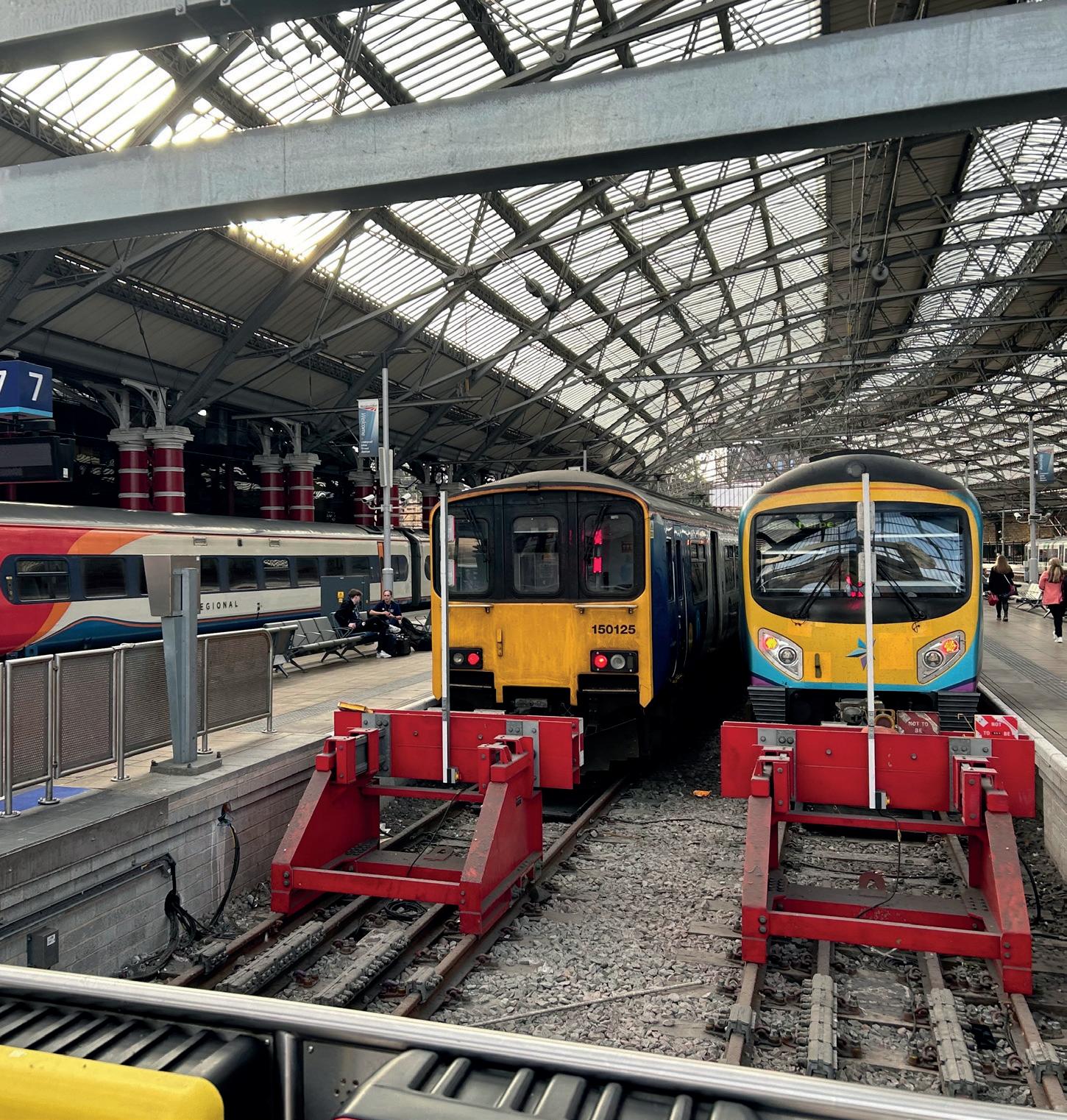
4. Publish a rolling stock plan covering the second half of this decade, on new, refurbished and repurposed trains;
5. Commit to delivering the major projects, including of course the full HS2, and remember that only by building HS2 in full, including the Eastern Leg, will the full benefits of the scheme be realised;
6. Ramp up digital signalling, with 65 per cent of signals requiring upgrading in the next 15 years;
7. Reinstate the Tradeshow Access Programme grants to help UK rail exporters overseas;
8. Recognise the value of data when it is being used, empower the supply chain to deliver a digital railway; and on retail, make decisions on a rail retail strategy;
9. Ensure a certain and visible pipeline of work, to enable suppliers to plan and invest; and
10. Publish a 30-year long-term strategy, across track and train.
Rail really does have bright prospects for the months and years ahead, based on strong and growing demand. If the government can get on with delivering the top 10 hitlist set out above, the rail supply community will play its part, working closely with rail clients, to affordably build, renew and enhance the tracks and trains we’re going to need for what will be an even larger UK railway network in the future.
K Export Finance (UKEF), the UK Government’s export credit agency, has underwritten €781 million of financing – equivalent to £680 million – to support construction of a 286km high-speed electric railway in southern Turkey.
With financing provided through UKEF’s Buyer Credit Facility, Rönesans Holding will finish construction of the Mersin-Adana-Gaziantep High Speed Railway on behalf of the Turkish Ministry of Transport.
The deal is expected to create new, multimillionpound export contract opportunities for the UK’s infrastructure, engineering and project management sectors.
This signals key future opportunities for UK exporters, with Rönesans Holding – one of Europe’s ten largest construction companies – intending to use the high-speed rail project to build its wider relationships with the UK supply chain.

Lord Offord, Minister for Exports, said: “The UK-Turkey trading relationship is going from strength to strength. Last year, UK exports to Turkey reached £8.5 billion, and this week we announced plans for an updated trade deal that will further boost exports and imports between our countries.
“UK Export Finance’s backing for this transformative high-speed railway adds to this success story. This deal shows that the UK, home to the world’s first railway system, still moves full steam ahead with its export of railroad innovation and expertise.”
UKEF’s backing – which has been given on the condition that UK exporters supply to the project –will support continued economic growth in the UK, in line with the government’s priorities; Rönesans Holding has already engaged with UK suppliers to negotiate contracts for electronic infrastructure, ESG consultancy services, catenary and mechanical components.
A huge step-up
Dr. Erman Ilıcak, president of Rönesans Holding, said: “We’re thrilled to be working with UKEF, JP Morgan, ING and BNP to secure a deal that will enable a landmark shift in the Turkish construction of rail links and the high-speed railway project.
“By upgrading the existing railway line to a high standard railway line, we will be actively reducing
negative environmental impact while offering a lower-carbon travel alternative and significantly enhancing the region’s industrial connectivity and trade. Rönesans Holding takes immense pride in contributing to Turkey’s national environmental goals and infrastructure advancement.
“Our fruitful collaboration with British Exporters has secured €781m in financing for the transformative high-speed electrified railway in southern Turkey, adding tremendous value to the cooperation between Türkiye and UK exports and services while paving the way for exciting global partnerships.”
UKEF worked in partnership with J.P. Morgan, ING Bank and BNP Paribas, who provided the loan, as well as SACE and OeKB – the Italian and Austrian export credit agencies providing reinsurance – to secure this landmark deal for Turkish rail infrastructure.
John Meakin, global head of export and agency finance at J.P. Morgan, said: “We are honoured to have the responsibility to deliver the financing for this impactful project while supporting UK exporters providing goods, services and notable technical expertise.”
In replacing the current railway, which relies on diesel locomotives, the electrified line will provide a lower-carbon alternative to existing routes between Mersin and Gaziantep. Project forecasts suggest that the completed route will save 157,000 tonnes in CO2e emissions in its first year alone.
The UKEF-backed project will also contribute directly to Turkey’s objective of increasing high-speed railway coverage to 10,000km, by creating a rail link greater than the distance between Cardiff and London.
Able to carry trains travelling up to 200 km/h, this transport link is a major step forwards for regional infrastructure and growth. The high-speed railway will reduce the travel time from Gaziantep – via regional cities Adana and Osmaniye – to Mersin by four hours; Mersin is the second largest container port in the country and a thriving city of over one million people.
Treasury and Finance Minister for Türkiye, Mehmet Şimşek , said: “We are very grateful to our trading partner UKEF for their contribution to this important project, which will expand the national railway network.
“The most important aim of the project is to improve the rail connectivity and create a sustainable alternative transportation scheme in Türkiye. We look forward to continuing our fruitful collaboration with new projects on the way of development of Türkiye.” Gaziantep, the railway’s eastern terminus, was near the epicentre of the 7.8 magnitude earthquake which struck Turkey in February 2023. The UKEFbacked project for completing this railway will also contribute to reconstruction in Gaziantep, Osmaniye and other areas of southern Turkey severely damaged in this disaster.













Intelligent lighting solutions and smart controls can enhance the passenger experience, improve safety and lower operational costs, helping to ensure railway stations operate as efficiently as possible.
A shining example of its capabilities for railways comes from DW Windsor, which for 45 years has been delivering high-quality lighting equipment engineered to offer outstanding quality and performance through continued innovation and precision manufacturing.
“There are a number of ways that lighting technologies can be used to improve the safety of railway stations, level crossings and other areas of the rail network,” said David Woodcock, Business Unit Manager – Rail & Garda. “We’re here to support customers with their lighting challenges, whether that’s hitting sustainability and net zero
targets, reducing energy consumption or ensuring the right light is used in the right places.”
DW Windsor is an award-winning designer and manufacturer of exterior lighting and smart Internet of Things (IoT) technology solutions for the global specification market, and one of the largest outdoor lighting specialists in the UK.

It has a proven track record in the rail sector in delivering lighting upgrades as well as groundbreaking innovations and pilot trials for the likes of Network Rail, Great Western Railways, Arriva, Northern and the Department for Transport, offering a variety of products and lighting systems used everywhere from the car park to the platform.
“Through sophisticated designs, controls and technology, DW Windsor can deliver lighting schemes that are innovative, positively affect the passenger experience and help meet the challenges
of operating a modern railway,” said David, who originally trained as an electrical engineer and has more than 25 years of experience within the lighting industry.
“We understand the importance of lighting for the safety, security, comfort and experience of passengers and staff and have the expertise to offer best practice technical and specification guidance throughout, working in close collaboration with project teams and the rail asset operators.”
Simon Harrison-Wallace, Marketing Manager, added: “DW Windsor has worked extensively within the rail industry for a number of years and, recognising the need to provide intelligent lighting solutions tailored specifically to rail applications, formed a dedicated business unit under David’s leadership to better support clients working in this sector.
The importance of lighting for safety and energy saving in the rail sector should not be underestimated. DW Windsor’s David Woodcock and Simon Harrison-Wallace explain more
“When it comes to light, one size doesn’t fit all, which is why we have a range of solutions that can be used in and around station areas. We are a company of innovators which has been pushing on the lighting control side, particularly with smart controls, to help lower energy usage and cut carbon emissions.
“We’re also pioneers of handrail lighting, having launched our Garda range over a decade ago. This includes a patented Anti-Climb version designed for safety-critical applications such as bridges and overpasses. We’ve also recently launched a glassreinforced plastic (GRP) bollard, so we have been leading the charge in lighting safety for several years.”
Among recent successes has been the company’s involvement in the Dawlish Sea Wall, in which it supported Arup with the illumination of a 330m stretch of the elevated sea-front promenade to improve visibility for people while at the same time avoiding any glare for train drivers travelling along the adjacent track.
DW Windsor’s Special Projects team developed a bespoke solution using a modified version of its Anti-Climb profile designed to withstand the harsh coastal environment. In total, 110 custom LED lighting modules were installed along the walkway, set at an angle to wash across the pathway rather than illuminate the space above it.
David said: “At a recent parliamentary hearing, the project was described by Arfon Davies of Arup as a ‘gold standard’ lighting scheme, which creates a lit environment that is welcoming and safe for people while also protecting train drivers. He added that the lighting also doesn’t spill into the sea, minimising any impact on wildlife.”
What makes DW Windsor particularly special is its passion and ability to use light to positively impact behaviours and keep those around the railways safe. There are a number of ways that lighting technologies can be used to improve safety around railways, with the correct lighting scheme delivering uniform levels of illumination, meaning that all objects and surfaces, including signage, platform edges and steps, as well as other people, are clearly visible.
This must be achieved while preventing glare that may affect train drivers’ vision, and done sustainably – keeping lights on all the time when they aren’t needed doesn’t make financial sense, and also isn’t good for wildlife or light pollution.
Simon said: “Light can help keep people safe and influence their behaviour. Looking at wayfinding, we can use light to nudge people and impact their response. For example, if a station is overcrowded, we can use light to dynamically change passenger flow.


“To really fulfil the potential of lighting in railways, you need pioneers on the client end who want to do this, and then you need innovators to actually look at the problem and try to identify a solution. The latter is where we fit in.”
DW Windsor is also driven by sustainability, with the correct approach to lighting able to help the industry reduce its carbon footprint, minimise waste and the environmental impact of materials used, as well as protecting wildlife and habitats.
David said: “A simple step that can make a significant difference is upgrading all existing lighting, both trackside and throughout stations, to energyefficient LED products. This can be enhanced further by using lighting controls such as our award-winning Cellular Node to minimise wasted energy during offpeak times. Unlike traditional lighting control systems that require specialised networks to be built, our Cellular Node works straight out of the box, just like a mobile phone. This makes it a cost-effective solution for deployments of any size, ideal for rail applications.
David continued to say: “The concept of circularity in lighting has received increased attention, and it is something we take very seriously with the manufacturing of our products. As part of that, products must be designed to allow for simple upgrades. Our lanterns enable new technology to be implemented without the waste and cost of replacing the whole luminaire, increasing the longevity of the entire scheme.
“Furthermore, when considering the end of the product’s life, it is important to ensure the design and materials of a product will allow simple recycling; for example, aluminium and copper, the primary materials we use for our products, are easy to recover due to the use of mechanical fixings and can be easily recycled.”
Simon added: “We need to make sure that decisions on lighting are being made for the right reasons and we’re not impacting on wildlife where possible. There is strong evidence to suggest warmer colour temperatures are less impactful on nocturnal life. At DW Windsor, we advocate for illuminating with warmer colour temperatures where possible. Not only is this better for flora and fauna, but it also helps to tackle light pollution and protect dark skies.
David concluded: “Overall, the future looks very bright for DW Windsor with some high-profile rail customers and projects, and trials which we know will make the railways a safer, more sustainable place. It is all about putting lighting in the spotlight for the rail industry, something we have a proven track record in achieving.”
Visit dwwindsor.com for more details.
When it comes to light, one size doesn’t fit all, which is why we have a range of solutions that can be used in and around station areas

Express Medicals is a leading national occupational health services provider, renowned for excellence and professionalism, offering quality services that are comprehensive and responsive to the needs of the rail industry.
The idea for the business was born from a chance conversation between experienced doctor, Dan Hegarty, and a senior quantity surveyor who worked around the railway, while they were watching their sons play hockey.
“We were discussing the changes around the privatisation of the railway sector and what that would mean for medical services,” said Dr Hegarty, who worked in London hospitals for eight years and general practice for three. “At the time, those working around the railway would need to complete a Personal Track Safety (PTS) course and following that, arrange for a medical with a GP and obtain a drug test. Obtaining both was often challenging and time-consuming.
“Workers were having to take one and a half days off for the PTS. So, I thought, why not tag on the half day and in that time, undertake the medical and the drug test? That was the core of the simple idea that started the journey for Express Medicals in 1996, combining my love of medicine and an interest in both railways and business.”
Dr Hegarty describes the early days as a classic tale of a hybrid entrepreneur driving anywhere in the country, undertaking medical exams and collecting samples – “equal parts challenging and exhilarating.” Some 27 years later, Express Medicals is best-in-class for occupational health and drug & alcohol services, that meet the rigorous standards of the railway industry.
But that’s not all the business does. With 17 clinics nationwide and a 24/7 onsite service, its highly skilled teams of doctors, nurses and occupational health technicians are also finely tuned to the needs of other industries such as construction, utilities, and logistics, among others.
“The journey is difficult to summarise; it has been quite amazing,” he said. “In the beginning, the idea was very simple and there was no huge masterplan. A lot of it has been about meeting the challenges the industry faces, reacting, adapting and spotting new opportunities.
“But the most amazing thing has been all the people I’ve met, the staff, the clients, the suppliers. I am proud to lead a company which is respected and
trusted, with a team who are professional, reliable, knowledgeable, and always striving to deliver excellent service.”
Express Medicals has supported the rail industry for 27 years and its team are experts in the stringent requirements of the sector, with all of its doctors registered as practitioners with the Office of Rail and Road (ORR) and experienced in railway medicine.
Two of its most popular services remain the PTS medical (although this is now formally known as a Competence-Specific Medical) and drug & alcohol tests.
However, in recent years, Dr Hegarty has recognised an increasing demand within the railway sector for a range of wellbeing and mental health services. “It’s refreshing to see employers widening the support available to their valued employees.
“Of course, our aim is to grow as a company. However, to me it’s just as important to retain a supportive workplace, where team members enjoy their work,” he said. “I think of Express Medicals as like a 5-star boutique hotel, very professional, great staff, but not a huge chain. We will give a good service which is professional and reliable.
“The unique challenges of the railway industry have been baked into everything we do for the last 27 years. We’re used to short-notice bookings, on-site work, and finding creative solutions to problems; it’s what we’ve always done. Railway medicine is in our DNA.”
Visit https://www.expressmedicals.co.uk/ for more details.
It’s refreshing to see employers widening the support available to their valued employees
REPLACE USB MODULES ON-SITE, IN MINUTES
There is nothing more frustrating than having nowhere to charge your mobile device on the move.





Improve the passenger experience with reliable USB charging.





• On-board Replacement

• Minimize downtime from dysfunctional power outlets.
• Hot Swap in minutes

Providing customers with all the information they want, when and how they want it. That is the vision of the rail industry’s Smarter Information Smarter Journeys (SISJ) programme, whose ultimate goal is to achieve a sustainable step-change in customer experience through the provision of better customer information.
Helping to provide that platform is Rail Training International (RTI) which has been supporting Network Rail with the delivery of Train Operating Companies (TOC) terminal training, one of many initiatives within the SISJ. In February 2022, RTI delivered TOC terminal training to Greater Anglia (GA), with the course gaining very positive feedback from participants.
Andrew Russell, managing director at RTI, said: “The TOC terminal training had such an impact that RTI was invited to provide additional specific training support to GA’s information team via Laura Young (organisation manager, GA) and Gerry Daley (customer information manager, GA).”
In order to establish a clear specification of training needs, RTI follows the Office of Rail and Road’s (ORR) guidance on developing and maintaining staff competence (RSP1). This involves analysis of job role tasks and associated risks, standards and processes.
The output culminates with the production of a RiskBased Training Needs Analysis (RBTNA).
Andrew added: “In recent years, RTI have probably conducted more RBTNAs, and for the widest range of railway roles, than any other training organisation – to the extent that requests for developing staff in our RBTNA approach are literally worldwide”.
“However, most RBTNAs focus on safety risk. The three roles within scope for customer service information training were duty information managers, customer information controllers and social media assistants.
“In this respect, business risk, rather than safety risk was recognised as being of high order importance. These roles are, however, an essential component of GA’s ability to provide up-to-date and accurate information to GA customers during service disruption.”
Andrew said it was clear through the RBTNA process that technical railway knowledge and

understanding, specific to the GA operation, are key elements of the competence requirements for customer service staff. This includes considerations such as route geography, staff rosters and stock knowledge through to the more generic core English language skills such as sentence construction and spelling.
However, it is also clear that the ‘technical’ skills described above need to be underpinned by accurate monitoring of the operating environment and the skills to think through and anticipate how changes in that environment are likely to impact on train service provision and translate these into proactive
communication with the travelling public. These skills need to be underpinned by the social skills of communicating and working with others in the Control Room. In short, Non-Technical Skills (NTS) become critical to the success of the role.
“One of the issues with NTS currently is that the industry has a variety of NTS models, but more importantly, although the industry has been working with NTS for over ten years, there is no clear and positive measurable impact,” said Andrew.
For example, SPAD data (see figure 1) remains stubbornly high in spite of the increased focus on NTS.
of
Dr Andrew Russell, managing director at Rail Training International Ltd, and Gerry Daly, customer information manager at Greater Anglia write about a sustainable step-change in customer experience through the provision of better customer information
Although there are a number of NTS models in use in the industry, RTI consistently uses ORR’s guidance (RPS1, appendix 2), focusing on situation awareness, decision making, communication and team working. ORR’s descriptors for situation awareness can be readily identified as the competence of gathering, interpreting and anticipating future conditions, which are so essential to the provision of ‘live’ and meaningful customer information.
ORR’s classification of NTS can be readily aligned to the very few published examples where NTS training has been shown to have a positive measurable impact on safety performance, including:
First Great Western in 2012, which at that time used the First Group classifications of NTS, where early impacts of an NTS programme in 2012 included a 20 per cent reduction in SPADs (30 per cent reduction in Empty Coaching Stock SPADs)
Queensland Rail (also 2012), where a reduction of 14 per cent in SPAD data was reported for staff who had received NTS training, in comparison to those that hadn’t. Queensland Rail’s NTS classification included the four NTS categories central to ORR’s model, with additional content on workload management (which can be aligned to stress – see below) and leadership (which could be argued to be of low relevance to a train driver)
Andrew said: “In addition to the four ‘core’ NTS, the control room RBTNA also highlighted the need to focus on the role of stress and fatigue on performance.
“RTI follow the classical three-phase approach for the introduction of NTS to a training audience. This centres on a short introduction to the concepts, practice and feedback and then incorporating NTS on a daily basis in operations.
“The training design phase included the delivery of a pilot course to identify positive task-based NTS behavioural markers and ensure the content was going to deliver the required behavioural outcomes.
“In total, five courses were designed and delivered to cover the whole of GA information team.”
The design included the use of a desktop scenario, which required a balanced number of delegates from each job role in attendance. Therefore, some careful logistical planning was required to get the correct release profile.

Andrew said: “The post-course ‘reaction’ level evaluation data produced an average rating of five on a six-point Likert scale, with learner comments focusing on the value of the desktop scenario, NTS input and session on stress.
“More important though, is the possible impact on real business performance measures (‘ultimate’ level of evaluation). The Rail Delivery Group (RDGs) InfoTracker Survey (January-March 2023), which measures the quality of customer information across all TOCs, shows GA in joint fourth place in overall satisfaction and first for passenger information during disruption (an improvement of seven percentage points).
“In addition, Mystery Shopper scores are
consistently high. In order to present a balanced analysis, it must be emphasised that there may be other variables that explain the positive shift in performance and the impact of training variables is hard to isolate and measure.
“However, the impression from the GA management team is that the training, especially on NTS, has been a contributing factor in the improved performance. The challenge now is to sustain this improvement over time, as the literature shows that early positive impacts of NTS training on performance may reduce with time.”
Gerry Daly, customer information manager at Greater Anglia, said: “Introducing non-technical skills to the customer information team has been extremely beneficial, not just with the improvements in the quality of messaging coming from control, but the improvements in how information flows within control itself.
“RTI was excellent in highlighting what are the barriers to good communication and how these can be overcome.”
Visit https://www.rti.co.uk/ for more details. email andrewrussell@rti.co.uk or call 01227 769096 Rail Training International Ltd North Suite, Parsonage Offices, Church Lane Canterbury CT4 7AD
More important though, is the possible impact on real business performance measures
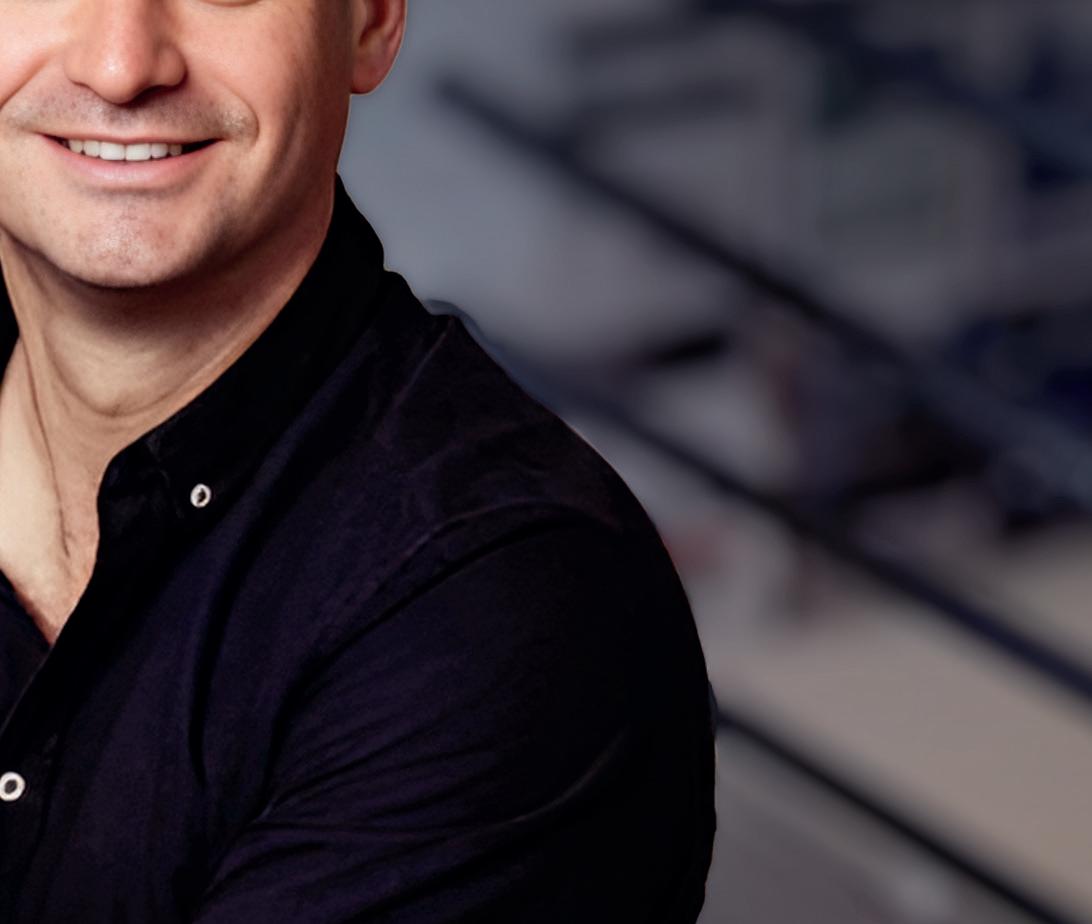



WCS is a civil engineering design consultancy supplying rail clients with the specialist civil engineering support they need. When we began in 2007 our initial focus was very specific - power for rail - and the work typically centred on the creation of substations and related infrastructure. That diversified into civil engineering for rail works generally, and then wider civil engineering design in the power & energy sector. Rail continues to be a big slice of our total work, so we’re happy to share our thoughts on changes in the sector and how it is equipped to meet the challenges ahead.
According to the UN, transport is responsible for a quarter of all greenhouse gas emissions, so these goals won’t be reached without big changes in how we move ourselves and our goods around. In 2021, the government published a plan called Decarbonising Transport, which pledged to phase out all dieselpowered trains by 2040.
There are multiple reasons to pursue rail electrification. Electric trains have perhaps half the
carbon footprint of diesel trains. Note though that even diesel trains are actually quite low in emissions and often better for sustainability than electric road vehicles. Because of this, rail is only responsible for one per cent of all transport emissions.
This figure will become more significant in meeting our net zero goals if we successfully encourage people away from road and air, to sustainable rail. If government plans to encourage more use of rail as a slice of our transport mix, it’s clearly sensible to ensure the future rail network has the smallest carbon footprint. Also, travel can be quicker with electric trains, which accelerate faster.
At the end of 2022, 38.1 per cent of the UK rail network had been electrified. That’s up a tiny 0.2 per cent from 37.9 per cent the year before. There have been repeated delays. The cause is widely believed to be large swings in funding and activity, something which doesn’t support a permanently employed set of people with the relevant skills. As the Institution of Mechanical Engineers pointed out: “Between 2009 and 2014, £200 million was invested in electrification. The plan for the following
five years was for electrification schemes totalling £4 billion. This was an extraordinarily inefficient way to deliver electrification and contrasts with the steady rolling programme in European countries… with mistakes made owing to skills shortages.”
We’ve been involved in many projects to electrify the rail network that contribute to the UK’s net zero targets. Here are a few:
Working with familiar partner UK Power Networks Services, we provided civil engineering design work on the biggest UK electrification project of the last decade, the Great Western Main Line Upgrade. We oversaw survey, design and checking of over 30 substations, plus associated HV feeder routes.
We provided SPL Powerlines and Network Rail with survey and civil design services for GRIP stages 4 and 5 on two packages of work so far, including new substation compounds, road-rail access points (RRAPs) and pedestrian access points. WCS was also able to provide electrical design through our supply chain relationships.
Working with Hitachi Energy, we provided design work relating to a power upgrade to a major maintenance depot, Doncaster Carr, as well as for the East Coast Main Line. Scope included design of two compounds to house a static frequency converter as well as a 33kV substation and 25kV feeder station, plus 3.5km of cable feeder route to overhead line equipment connection points. This crossed the East Coast Main Line using both Under Track and Over Track Crossings.
We have also been supporting our client UK Power Networks Services on an ongoing project to allow the operation of Battery Electric Multiple Units by Northern Trains. WCS has been advising on a GRIP 3 option selection, risk and constraint analysis, plus outline design of substations and cable routes.
Traditional civils expertise is still required Climate change, and anything related to it, is quick to catch public attention. Dealing with a crack in a bridge doesn’t make the headlines, but essential engineering work to support ageing infrastructure is what avoids closures and keeps our network running safely.
A while ago on our blog, my colleague Ioannis Iliadis, associate director at Whitfield Consulting Services, commented on emergency works WCS had been called in to consult on, after a landslip: “The consequence was train cancellations while the repairs were completed. That was bad enough, but if it had failed when a train was passing, the implication could easily have been more serious.”
Not all our work is that dramatic. Here are details of some recent rail works projects we carried out:

WCS were called in on New Year’s Day to assess damage to this road bridge, caused by excavations at street level. Working with J. Murphy & Sons Ltd, we produced a scheme of temporary works to stabilise the structure, then proceeded with design of permanent repairs.
Thames Valley Berkshire Local Enterprise Partnership recently awarded over £3 million to fund an overhaul of Reading West Station (opened in 1906). The project requires an entirely new station building, a new system of ticket gates and access barriers on Tilehurst Road.
WCS was brought in to provide the full scope of civil engineering and structural engineering designs for the new buildings. We are also providing the architectural design for the project through our supply chain relationships.
The UK rail network has one of the highest standards in the world for safety and engineering. When it comes to the nuts and bolts of keeping the
network safe and functioning, we’re confident that we can play our part, as civil engineers, in keeping it that way.
However, not everything is ‘on track’ with UK rail, as the slow progress towards electrification reveals. The government’s plans on net zero and rail electrification are sensible and imperative. We must hope that they’re able to coordinate with train operating companies and other partners, and oversee delivery of what’s promised by 2040.
More joined-up thinking on the various modes of transport available would also help. Longer journeys in the UK are often cheaper by air than rail, forcing passengers to choose between the sustainable and the affordable. In other European countries, governments are willing to bear more of the economic burden, doing more to encourage a switch to sustainable travel options. Some are taking stronger action than that, with France recently banning most short-haul domestic flights that can be replaced by train journeys. Progress is being made, however. With continued hard work, collaboration and goodwill, we’re confident that the UK can achieve its ambitious journey to net zero.
To learn more about WCS, please visit www.wcsconsult.co.uk/contact.
Governments are willing to bear more of the economic burden, doing more to encourage a switch to sustainable travel options
UK train operators are constantly under pressure to ensure trains arrive on schedule; the number one priority for passengers is reliability. They expect trains to be on time, every time, enabling them to complete their journeys. Bearings are an essential component and play a critical role in delivering that reliability, whilst also contributing to getting trains to their destinations smoothly and safely.
Bearings assist an object’s rotation whilst only allowing desired motion and reducing friction between moving parts. For rail vehicles and assets, particularly axles and bearings, they are subject to immense loads caused by rail joints, switches, and wheel flats, as well as the static and dynamic load of the vehicle’s weight. Failures of axle bearings can have significant impacts, including fires, the need for component repair or replacement, service delays, fines, and derailment.
At Serco Rail Technical Services (SRTS), we provide a bearing inspection and evaluation service. This enables our customers to understand the root causes, defects, and failures they may be experiencing. This type of service provides vital information on the condition of bearings, delivering best recommendations and allowing for decisions to be made for repair, replacement, and maintenance schedules. Knowing why a bearing has failed allows corrective steps to be taken to reduce repeat failures, whilst also extending the life of the component.
Working with our customers, we can provide onsite bearing inspection, or if the component has been removed from the vehicle, this can be sent out to workshop, whereby our engineers will carry out tests to determine and identify the defects.

Reducing bearing failure, ensuring safety, and extending the life of the component are important factors. Coupled with efficient scheduled maintenance programs, they can contribute to good functioning bearings and help to avoid derailments, collisions, and other rail incidents.
In addition to providing a bearing inspection service, we also provide bearing training at our Derby-based training school or onsite at a customer’s location. Our courses are designed to provide new and experienced rail professionals with the skills and knowledge they need to carry out their roles, through practical and hands-on training. The training courses are based on, and are in accordance with, the UK railway standards, however, we can adapt them to a customer’s requirements when required.
From entry-level courses to advanced certifications, our courses can benefit safety critical staff carrying out tests on in-service vehicles.
These include:
Leve l 1 – Bearing Training: removal and replacement
Level 2 – Bearing Training
Introduction to metrology
Wheel damage inspection and remedial training
Regreasing of cartridge bearings (to company standards)
Detecting failures and defects in rail bearings early on is critical for the prevention of complete component damage or derailment. Training safetycritical rail technicians/engineers and carrying out routine bearing inspections to spot defects and failures are good preventative practices to implement. Whether you require an independent bearing evaluation and inspection, or have staff who need bearing training, SRTS can support you.
For further information on our bearing inspection services, or our training courses, get in touch to see how we can help.
www.serco.com/srts | enquiries.srts@serco.com | 0330 109 8852.


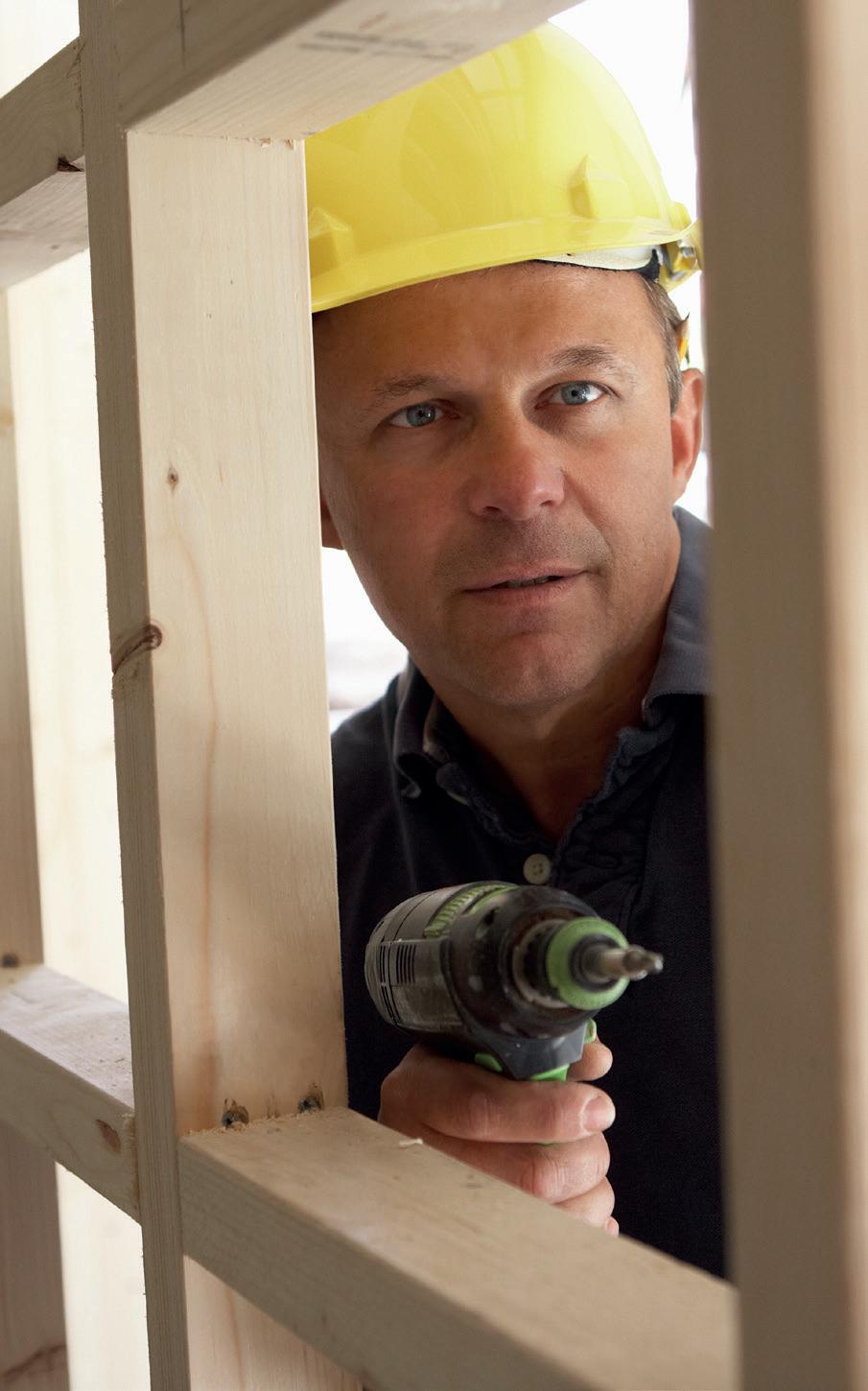




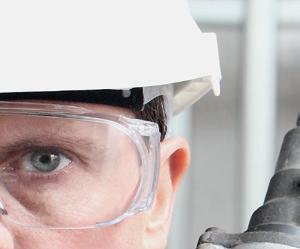



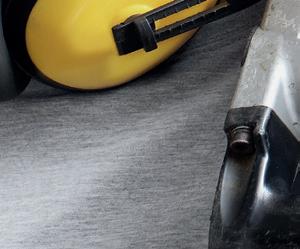






























The Occupational Psychology Centre (OPC) recently completed a project reviewing and redesigning a rail company’s depot driver recruitment process. Its aim was to provide a standardised, more fitfor-purpose process and help to improve safety competence.
The swift, but thorough review had specific, focused priorities:
Ensure existing assessment tools were correctly assessing for the safety-critical competencies required of a safe and effective depot driver; Recommend additional tools to help identify key behaviours and attitudes required for a good team fit in new recruits;
Modernise the recruitment process using technology; and,
Enhance the candidate experience.
Depot driving is very different to mainline driving. There are different hazards, more people and traction movements close by, and differing activities – all adding to the accumulation of risk. Therefore, it’s important to identify the specific skill set required for a safe and effective depot driver.
OPC business psychologist, Anita Ngere, spent time with the clients’ job experts to tease out the essential NonTechnical Skills (NTS). There were also opportunities to include areas for standards/safety improvements and identify key attitudes and behaviours being sought for a better team fit. Some key NTS identified were:
1. Concentration, checking and adhering to rules are crucial to safe and effective depot driving.
2. Effective communication – depot drivers need to receive and act upon information and communicate clearly with colleagues.
3. The ability to anticipate risk and make effective decisions is essential in any safety-critical role.
4. Depot drivers also need the ability to multi-task, managing high workloads and prioritising and performing multiple tasks simultaneously.
Once the comprehensive NTS profile was identified the OPC proposed a new assessment tool matrix that enhanced and modernised the existing tools already being used.
This included some existing tests e.g., the SCAAT (Safe Concentration and Attention Test), and some new additions e.g., the RSJT (Railway Situational Judgement Test) assessing a candidate’s suitability for railway safety-critical roles, and the TDMT (Train Dispatch Multi-Tasking Test) which specifically measures an applicant’s ability to multi-task and maintain concentration.
These three tests formed a new online prescreening stage to take place in depot. This digital stage helps to produce a quality shortlist for a follow-up face-to-face (F2F) at an assessment centre – saving time and cost as well as reducing the candidate’s travel and up-front time investment.
Next, an F2F assessment centre tests for an array of skills such as communication, vigilance, reaction times, etc. A newly added ability test, the TRFS (Trainability for Safety Test) evaluates a candidate’s aptitude for learning and trainability.
Finally, the streamlined process includes a new structured interview exploring a candidate’s attitudes, values and relevant characteristics for safe depot driving as well as team fit.
Norming work involves creating a comparison group of previous applicants who’ve sat the same test under the same conditions for the client organisation. Future applicants can then be directly compared to this relevant, appropriate and bespoke norm group. Assessors can make a like-for-like comparison i.e., do current applicants perform
better, the same or lower than other applicants?
As part of the OPC’s assessment depot recruitment process redesign, new local norms were prepared.
Enhancing candidate experience
Candidate experience is growing in importance as part of talent acquisition. There’s huge applicant diversity for driver roles in rail. Additionally, there’s also great breadth in the neurodiverse ways in which people differ in their social, learning, cognitive or communication choices. Giving applicants from diverse backgrounds an opportunity to practice assessment materials is very beneficial. It allows them time and space to acquaint themselves with what actual test materials may look and feel like, practice the skills being looked for and manage their own anxieties and expectations. Most importantly it helps candidates from diverse backgrounds to give their best in the assessment process. As part of the OPC’s redesign, new bespoke practice materials were prepared.
Jo Lawrence, business development director at the OPC, concluded: “Redesigning and refreshing a recruitment process is an opportunity to reinforce the best of what you have. This redesign provides the client with confidence that they’re using effective assessment tools specific to their key safety-critical NTS. New local norms and the in-house digital pre-screening stage save time and cost and help to short-list the best candidates most likely to succeed through training.”
www.theopc.co.uk
01923 234646
admin@theopc.co.uk

Hitachi Rail will help connect the new M4 Blue Line from San Babila station in Milan city centre to Linate airport. Once open, it will cut journey times by two-thirds, from 33 minutes to just 12. Upon completion in the second half of 2024, the Blue Line will connect the east and west of the city, linking 21 stations in just 30 minutes. The Blue Line is being delivered by the M4 consortium, in which Hitachi Rail is a shareholder, and for which it is delivering modern driverless trains, the signalling system, telecommunication technologies and digital pricing and access control systems.
Arriva Group has been awarded a rail contract for the operation of trains in the South Maravian region of the Czech Republic. This signing follows the recent 15-year rail contract awarded to operate services in the Pilsen region of the country. The new train services are due to start operating in December 2024 and the contract will run for 10 years. Passengers in South Moravia will be served by 13 new trains.
A ceremony has been held to mark the commencement of the transfer of the concessions of railway services and support logistics of the Lobito Corridor to Lobito Atlantic Railway. The company will take over the operation, management and maintenance of the rail infrastructure for the transport of goods for the corridor that runs for approximately 1,300km, connecting the Lobito port to Luau, in eastern Angola, close to the border of the Democratic Republic of the Congo. The 30-year concession has been awarded to the Lobito Atlantic Railway consortium joint venture company comprising Trafigura Pts Ltd, Mota-Engil Engenharia e Construção Africa SA and Vecturis SA.
Alstom and Akiem have signed a framework contract for 100 Traxx Universal multi-system (MS3) locomotives. The firm part of the order includes 65 locomotives.

The Traxx Multi-system locomotives benefit from optimised energy consumption and can run both freight and passenger operations at a speed of up to 160km per hour.
They will cover operations in 12 European countries, including Germany, Austria, Switzerland, Italy, Netherlands and Slovakia. As a unique feature for multi-system locomotives, a part of them will be delivered with the last mile feature, enabling them to access ports, terminals or industrial sites without the need for a shunting locomotive.
Kevin Cogo, vice president, rolling stock, locomotives and components at Alstom, said: “We are very proud that Akiem extends their locomotive fleet with their biggest single order of Traxx locomotives for an important number of countries.
“Thanks to this agreement, both Akiem and Alstom will reinforce their strong position for locomotives in various corridors including their home market.”
Fabien Rochefort, chief executive officer of Akiem, said: “Akiem is thrilled to place this new order with Alstom. We are constantly investing in our locomotive portfolio to serve our customers and develop new market positions.
“This stock investment will allow us to offer new efficient and sustainable routes which will contribute to increase the modal shift towards rail in Europe. 55 locomotives as part of this order will operate from France towards Europe in a context when no deliveries were experienced for the past decade.”
All locomotives will be equipped with the signalling system ATLAS, Alstom’s onboard solution for the European Train Control System (ETCS). Final assembly is planned to take place at the Alstom site in Kassel, Germany. Deliveries of the units are scheduled to take place between 2025 and 2028.
eutsche Bahn (DB), together with European rail companies, has carried out a study on the expansion of high-speed rail transport in Europe.
The proposal for a “Metropolitan Network” focuses on the specific expansion of rail lines for fast passenger trains across the continent and on the simulation of the resulting possible growth in transport volume on environmentally friendly rail.
The starting point of the study is the European Commission’s Green Deal. This intends to bring about a doubling in volume for European high-speed rail (HSR) by 2030 and a tripling by 2050, allowing it to make an important contribution to reducing carbon emissions in the transport sector. In the study, specialists analysed what a Green Deal rail network would have to look like in order to achieve the EU’s targets.
Michael Peterson, member of the management board for long-distance passenger transport at DB, said: “A tripling of high-speed rail traffic in Europe is possible. Once the infrastructure is in place, millions of people on the continent will benefit from attractive connections and faster travel times.
“The rail countries in central and western Europe, and even more so in southern and eastern Europe, will enjoy the advantages. According to our calculations and simulations, this will result in faster travel times on entirely new corridors and via new traffic hubs on rail.”
Image: Alstom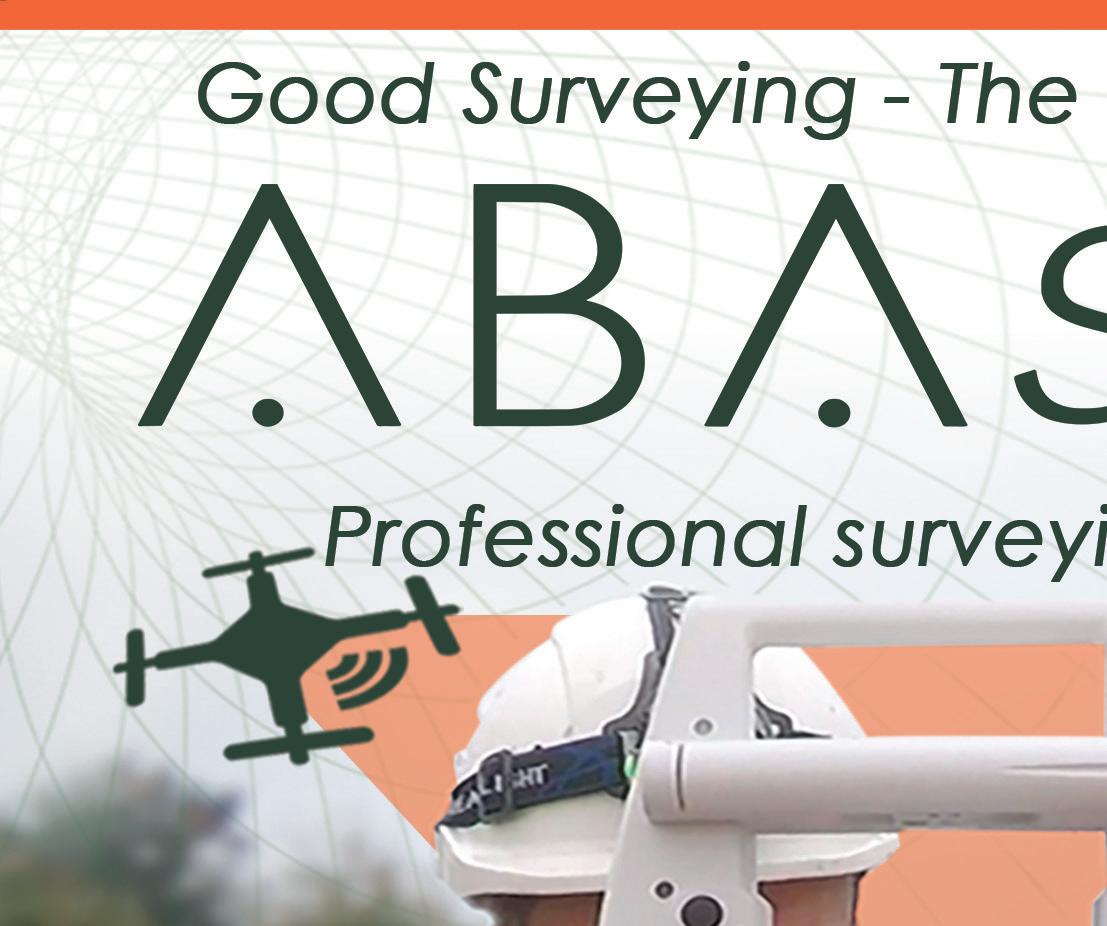








Romain Pison has joined SYSTRA as director of decarbonisation and will consolidate and expand the organisation’s existing comprehensive offer supporting public and private sector clients in achieving their net zero ambitions. He is an award-winning transport director with 25 years of experience designing, leading, and implementing complex, multi-million-pound transport projects and green policies across the world
How does it feel to be appointed as SYSTRA’s director of decarbonisation?

It’s an honour and a key milestone in my professional journey to be appointed as SYSTRA’s director of decarbonisation. Working in tandem with our UK & Ireland director of sustainability, who leads our business’ sustainability strategy, my role is to work with SYSTRA’s clients to deliver a more sustainable future, by enabling them to implement improvements across environmental, social and governance issues.
SYSTRA is a leader in transportation consulting and engineering, and the challenge to support our client’s sustainability aspirations resonates with my ethos as well as SYSTRA’s. The task ahead is substantial, but the exceptional team and resources at SYSTRA make it possible.
Where do you begin when it comes to delivering environmental, social and governance (ESG) services for clients in the railway sector?
At SYSTRA, we provide ESG services tailored to our client’s challenges, integrating environmental, social, and governance considerations into their day-to-day operations.


Our comprehensive services range from environmental impact assessments to enhancing the social dimension of our transition to cleaner energy as well as improving carbon footprints generally.
As trusted advisors, we guide our clients through their sustainable transition, helping leverage ESG outcomes as a strategic advantage. Our aim is to
create a ripple effect of positive change, aiding our clients towards becoming industry leaders in sustainability, thereby contributing to a responsible and sustainable future.
What are the aims/aspirations/targets for SYSTRA’s project delivery?

At SYSTRA, we’re committed to providing leadership on net zero emissions for our clients across all infrastructure markets, integrating climate mitigation strategies across public and private sector projects.
We aim to blend infrastructure development with biodiversity preservation; we do this through facilitating strong collaboration between all stakeholders.
Making the right connections between public policy and private investment, our experts have fostered an inclusive approach to environmental preservation and climate adaptation.
What can you take from your 25 years of experience in your new role?

My 25 years of experience have emphasised the importance of integrating sustainable objectives from a project’s inception. Sustainability isn’t an add-on. It is a core principle guiding every phase, from planning to delivery.
I’ve learned that embedding sustainability practices from an early stage leads to far more effective outcomes and will accelerate the adoption of innovative solutions. I have seen first-hand the power of nature-based solutions and their transformative impact.
Personally, how does it feel to be playing a part in such an important topic like decarbonisation?
Working on decarbonisation projects is incredibly fulfilling. I have been able to combine my personal ethos with my professional work; I feel this underlines an urgency to create a sustainable future. For me, every solution we devise and every strategic decision we take can contribute to a cleaner and safer world. It’s rewarding to work with such a passionate and multi-disciplinary team, who are all catalysts for change.
Reflecting on your career, what is your proudest moment and the best piece of advice that has stuck with you throughout your career?
Reflecting on my career, one of my proudest moments was successfully spearheading a transformative high-speed railway project in China that integrated climate adaptation features, thereby substantially increasing its future resilience.
As the project manager, I helped pioneer this initiative, driving the team towards our groundbreaking achievement. This project demonstrated the power of climate analysis in shaping modern railways.
A piece of advice that has stuck with me throughout my career is: ‘Think global, Act local’. This mantra resonates strongly with me, as we strive to deepen the environmental focus of SYSTRA’s global advisory offer, starting with local improvements.
How optimistic are you for the future and the role SYSTRA can play in it?
I’m cautiously optimistic. I am acutely aware of the enormous challenge that climate change presents. Yet, I am also confident in our capacity to meet these challenges head-on. At SYSTRA, I believe our culture of innovation and holistic approach will help us play a key role in global decarbonisation and a better and sustainable future. Our ability to deliver sustainable solutions throughout the project lifecycle sets us apart.
My 25 years of experience have emphasised the importance of integrating sustainable objectives from a project’s inception
Neil Grabham has been named as the new managing director of Merseyrail, taking up his post from mid-August.
Currently the customer services director for East Midlands Railway, Neil brings a wealth of experience both from the rail sector and beyond, having previously undertaken senior leadership roles for Greater Anglia, Signet Jewellers and Lidl.
Neil replaces Andy Heath, who left Merseyrail earlier this summer, and Jane English who has been acting managing director for the last ten months.
He said: “I feel very proud to have been given the opportunity to lead the fantastic team at Merseyrail, who I know share my ambition to deliver a railway that the communities we serve can be proud of.
“This is an exciting time of transformation, with new trains being introduced, and the opportunity to deliver real improvements in the journey experiences of our customers.”

The Go-Ahead Group has appointed Carolyn Ferguson as the group’s chief people officer with oversight over all aspects of human resources.
Carolyn has worked for Go-Ahead since 2001 and is a highly experienced governance and management professional. She has been Go-Ahead’s company secretary since 2006 – a position she will retain in addition to her new role.
As chief people officer, Carolyn will oversee the group’s culture, transformation agenda, diversity and inclusion strategy, and succession and talent development. Go-Ahead employs more than 27,000 people across its bus and rail companies in the UK and six overseas markets.
Long-distance operator CrossCountry has announced the appointment of Gary Portsmouth to bolster its operational leadership team.
He is a fellow of the Chartered Institution of Railway Operators (CIRO) and has over 35 years’ operational experience at an industry and train operator level.
Gary will continue to work as the deputy director of standards consulting at the Rail Safety and Standards Board (RSSB) where he has held senior positions for almost 20 years.
In his new role, he will join the nationwide CrossCountry team to lead and support a number of key projects aligned with the train operator’s business plan and operational strategy.
He said: “This is an exciting opportunity to further build on CrossCountry’s successes to date. I am looking forward to bringing my industry experience and insights to the table as CrossCountry evolves to meet existing and future customer demands.”
VTG Rail UK has appointed Marc Hurn as its new sales and marketing director. Marc has over 20 years’ operational, frontline, sales and marketing experience gained across national and global organisations.

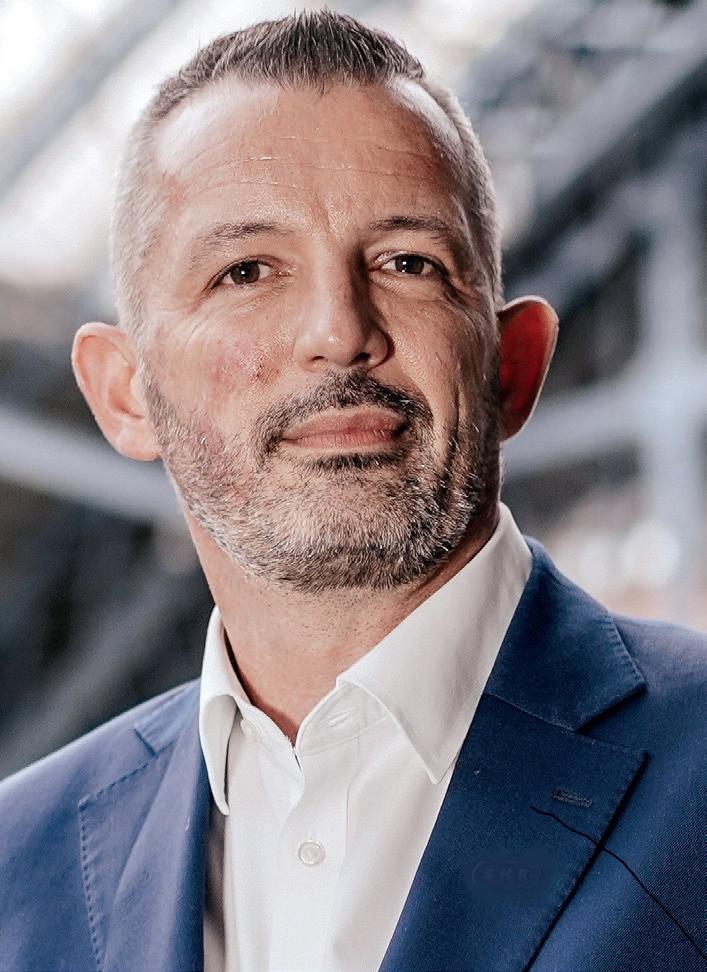
He said: “I am delighted to have joined VTG Rail UK at a very exciting time for the company. As the largest wagon lessor in the UK, as well as being part of the wider VTG Group across Europe, we have an excellent pedigree in providing a high-quality service to our customers. We are focussed on further growth, continuous improvement and ground-breaking innovations.”
The Department for Transport (DfT) has announced that Great British Railways Transition Team’s (GBRTT) lead director, Anit Chandarana, will be joining DfT as interim director general for Rail Infrastructure Group.
Anit will work closely in partnership with GBRTT, DfT colleagues and the sector to deliver the government’s vision for rail reform as set out by the Secretary of State in his Bradshaw Address, progress plans for the establishment of Great British Railways, and ensure the benefits of a guiding mind for the railway are delivered as soon as possible.
Image: Merseyrail Image: Go-Ahead GroupTwinfix are designers and manufacturers of the Multi-LinkPanel, which is a non-fragile roof glazing system. Over the years, Twinfix have supplied these modular polycarbonate panels for u se as rooflights in many railway stations and depots.
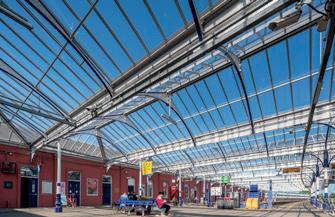


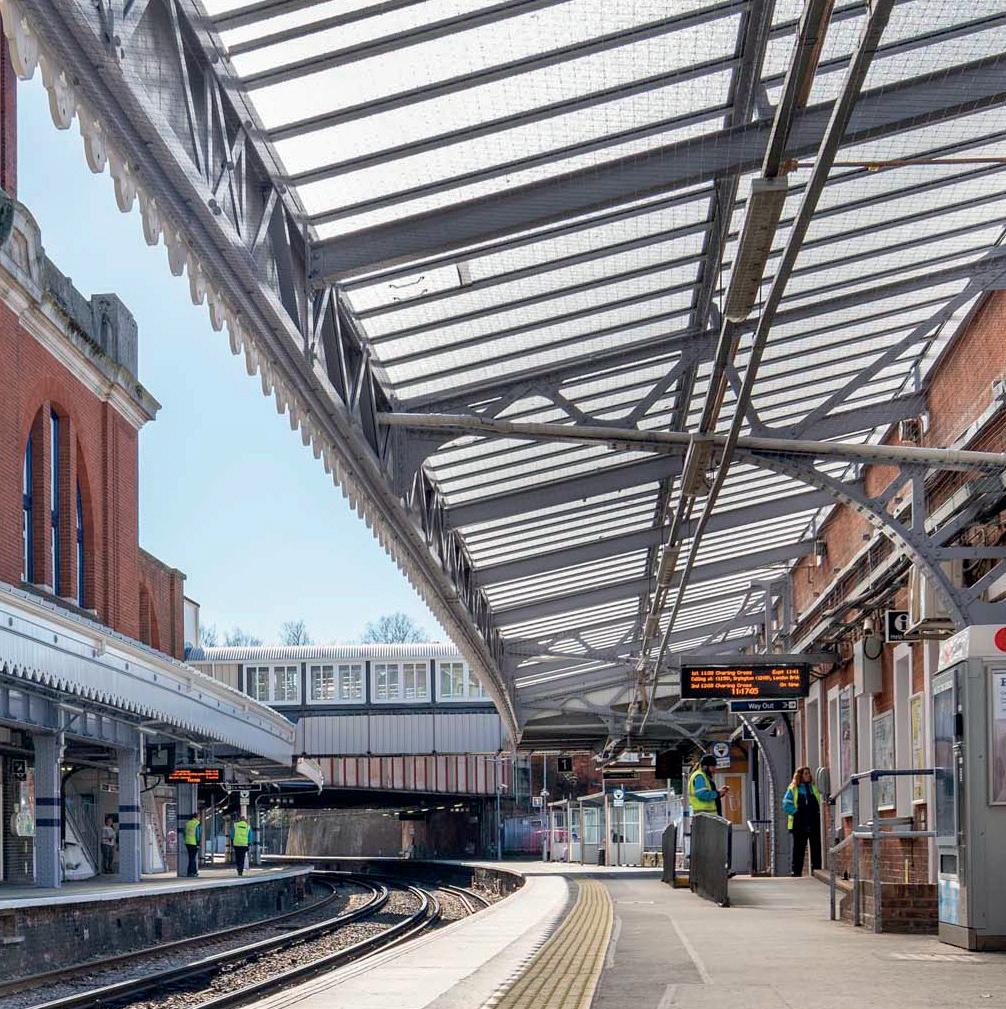




The Multi-Link-Panel is an innovative polycarbonate glazing p roduct that due to its ‘fix and link’ method of installation, is incredibly quick to fit, making it an excellent choice for installation in stations, as well as an excellent long-term solution to improve the longevity and safety of station roof glazing.


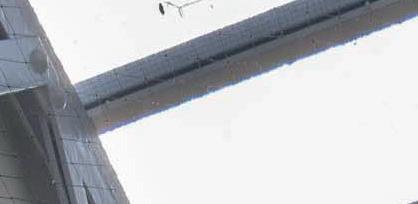
The Multi-Link-Panel system features the following benefits:




Fast installation
Non-Fragile

Modular pre-assembled panels
Virtually unbreakable polycarbonate

Recyclable
For more information contact us on:
Long lasting and durable glazing
Light weight
UV coated polycarbonate
Suitable for Heritage Sites

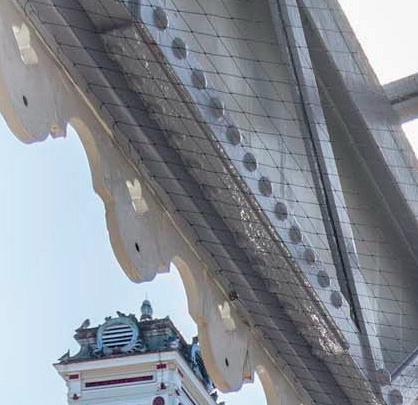
Acorel specialises in real-time passenger flow intelligence solutions incorporating automatic people counting delivering the most accurate technology for analysing the passenger analytics since 1989. phil.linnecor@acorel.com
www.acorel.com/en
+44 (0)780 878 8785
We were first established in 1909 and have been involved in supplying the rail industry with multi-disciplined specialist rail equipment and people. simon.bradshaw@williambradshaw.co.uk www.williambradshaw.co.uk/contact_us.php

0151 355 9300
Advanced Power Services takes pride in delivering efficient, professional, and friendly services, while maintaining exceptional safety standards in challenging infrastructures. info@advancedpowerservices.co.uk
https://advancedpowerservices.co.uk

01903 366 727
We are focused on what matters. We deliver agile, value-for-money solutions while prioritising reliability, performance, safety, and sustainability. enquiries@belvoir-rail.com
https://www.belvoir-rail.com
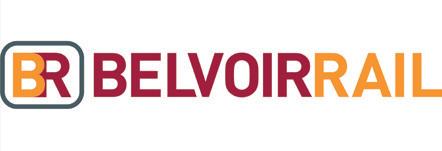
0115 989 2760
Commercial LED Lighting (CLLUK) are proud to be the sole distributor of Airstar Safety Balloon Lights in the UK and Ireland. Bill@clluk.com

https://clluk.com 0151 42 43 673
Dywidag work to make infrastructure safer, stronger, and smarter with data-driven systems extending the lifespan of new and ageing track, roads, tunnels, and bridges. sales.uk@dywidag.com

https://dywidag.com/ 0161 797 5511
We want to make a lasting positive difference to our environment and the people who live within it. contactus@ecusltd.co.uk
https://www.ecusltd.co.uk

0114 266 9292
HR Kilns is the premier supplier and manufacturer of GRP/FRP (Glass Reinforced Plastic) products, Embankment Steps, Walkways, Gratings, Stair treads, Handrails and ATP Panels. sales@hrkilns.com
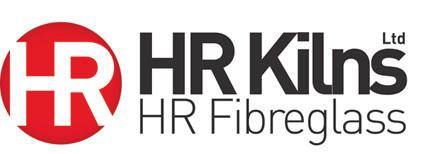
www.hrfibreglass.co.uk 01695 557711
WorkfloPlus by Intoware transforms paper based forms into digital workflows with access to documents, videos, pictures, weblinks and remote experts to improve safety, accuracy & productivity.
hello@intoware.com
https://www.intoware.com
+44 (0)115 977 8969
Jobson James Rail is a national specialist railway insurance broker, the market leader in the UK by a huge margin with over 550+ rail clients across the UK, Middle East and Australasia. keven.parker@jjrail.co.uk

jjrail.co.uk
07816 283949
Specialty lubricants from Klüber Lubrication for train maintenance and infrastructure prove their worth worldwide every day. From lubrication of traction systems and doors to many other components. info@uk.klueber.com

https://www.klueber.com/uk 01422 205115
MCL Group are an independent, family run business dedicated to providing the highest quality Port, Rail and Rolling stock services across the UK. pan@mclgroup.uk

http://www.mclgroup.uk
020 3280 6390
We are a UK based provider of wellbeing consultancy, training and coaching who support organisations that want to help their staff thrive at work. If we can help, we will. wendy@thementalwealthcompany.co.uk www.thementalwealthcompany.co.uk 07305843993
McCulloch Group are transforming rail infrastructure projects with a fleet of bespoke and patented machines that eliminate manual handling and improve the efficiency of installations. enquiries@mccullochgroup.com
mccullochgroup.com

+44 (0)330 0130 010
Notify, is a digital Safety, Health, Environmental and Quality management system, designed to make people in the rail industry, healthier and safer at work.
hello@notifytechnology.com

https://www.notifytechnology.com
0330 390 0530
RailSense enables you to easily optimise your rail infrastructure lifecycle costs and renewal strategies to maximize availability and operational efficiency. sales@railsense.co.uk https://railsense.co.uk 01243 372 207

Nextec Engineering Limited is a specialist consultancy with extensive experience in Engineering Consulting, Systems Engineering, Safety Engineering and Assurance Activities. Office@nextec.engineering
https://www.nextec.engineering

Railsy offers an unmatched variety of courses and programs across the rail industry, created for individuals or groups of all academic levels.
info@railsy.co.uk
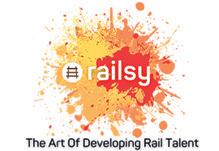
www.railsy.co.uk
0330 043 1037
Reinforced Earth’s retaining wall and precast arch solutions are recognised worldwide as the preferred economical solution to ordinary and extraordinary earth retention and load support requirements.
info@reinforcedearth.co.uk
https://www.reinforcedearth.co.uk
01952 204357
We are a technology company specialising in rail and connected transport solutions. hello@resonate.tech http://www.resonate.tech 01332 869 800

Since 1961 Rittal has been a global leader in innovation for its products, including enclosures, cooling solutions, power distribution, and IT infrastructure. Rittal’s robust enclosures are a functional solution for the rail environment.

information@rittal.co.uk
www.rittal.co.uk
01709 704000
SatSense identify and alert asset owners, managers and engineers of areas at higher risk of ground or structure movement, using satellite-borne radar. contact@satsense.com
www.satsense.com


0113 306 1688
Schweizer Electronic is the market leader in Europe for on track automated protection on busy railways for both passenger and freight lines. info.seuk@schweizer-electronic.com
www.schweizer-electronic.com
+44 (0)1827 289996
STAT1 are specialists in delivering tailored ‘manned guarding’ services to increase the safety of premises and safeguard all assets.
info@stat1.co.uk
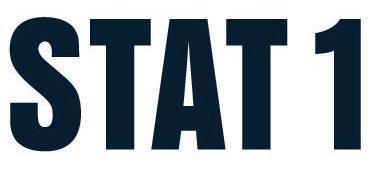
https://stat1.co.uk
0114 205 4535
UK Power Network Services solve your energy challenges through innovative solutions, delivering resilience, cost efficiency and sustainability to deliver a bright energy future.
www.UKPowerNetworksServices.co.uk


0800 029 4285
Since Victa Railfreight Ltd formed in 1995 the company has constantly adapted to the evolving landscape of the rail freight industry. enquiries@victa-railfreight.com

https://www.victa-railfreight.com 01622 690978
Welfare Vans 4 Less are one of the UK’s leading suppliers of professionally converted welfare vans, with nationwide delivery 7 days a week.
info@welfarevans4less.co.uk

www.welfarevans4less.co.uk/ 01782 848855


















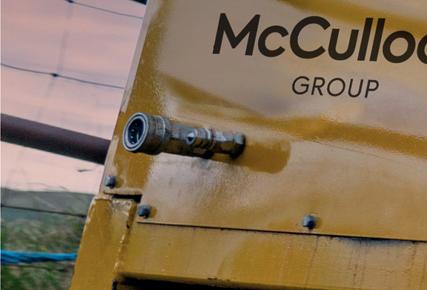





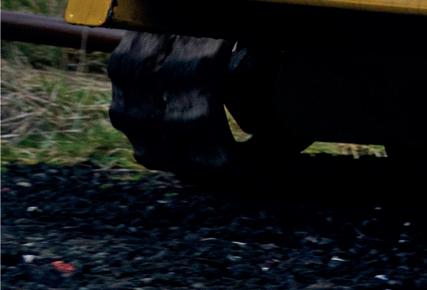


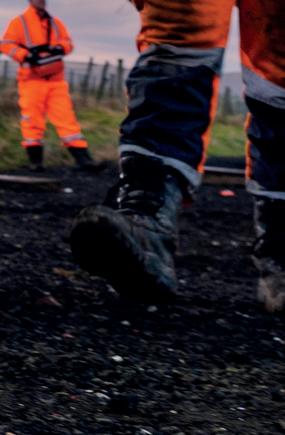



































 Operated during the day or at night
Operated during the day or at night
We will…
Promote your business
Increase your visibility
Enhance your credibility
Get you noticed by influencers and decision-makers
Improve your industry knowledge
Grow your contacts and network
RBD Community is a force for good in the rail industry. Helping companies enter the market, grow and prosper in it. And we can help you do more too.

You’ll get more than £3,800 worth of benefits, including:
• PR, advertising and social amplification – to get your brand, products and services in front of buyers.
• Access to key market intelligence and insights.
• Connecting you with new people, partners, buyers and events.

• Unlimited access to One Place – rich with resources.
• Coming soon... webinar masterclasses and roundtables.
Up to £3,800 of benefits for less than £1 a day


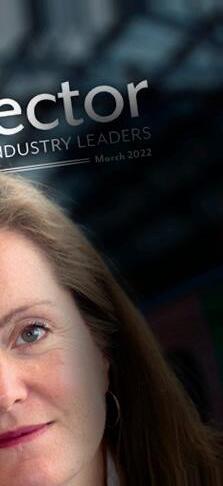
Rail infrastructure specialist Technotrack has moved into a new facility with a large warehouse and technical area, enabling it to extend its service o ering. Already a leading supplier of signalling and telecoms (S&T) sta to the rail industry, the business is now able to provide a range of additional services – including apparatus case, DIS box, and Sarel case manufacturing and testing.
As part of this expansion, Ipswich-based Technotrack is growing its engineering team, and has embarked on a drive to recruit new IRSE-licensed team leaders, installers, point fitters and SMTH sta . It will also expand its apprenticeship programme in the coming months.

Reflecting on the move, Technotrack representative said: “We’re excited about the latest phase of our growth plan. Our enhanced facility means we can now o er customers a range
of new services, manufacturing and testing infrastructure as well as expertly installing and maintaining it.

















“The accompanying recruitment drive will create new job opportunities in the area. It’s also our way of helping to address the rail industry’s ongoing skills crisis.

“New recruits will join our existing team of IRSE-trained sta and experienced managers, who enable us to provide the expert support, cost-saving service and round-the-clock manufacture times for which we’re known.”
An approved UK RISQS supplier, Technotrack has supported some of the leading names in rail – including Alstom, Kier, Costain and Network Rail. The business strives to supply skilled, self-su cient sta to its customers, and has developed a rigorous in-house training programme to support this goal.


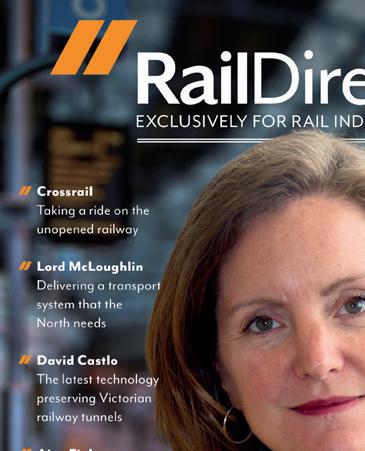



he programme has come such a long way and I want to thank everyone who has worked on the project during my time.”
That is the message from Mark Thurston who has announced that after six-and-a-half years of leading HS2 Ltd, he will be leaving the organisation at the end of September.
Phase one of Britain’s new high speed rail network between London and the West Midlands is at peak construction and the organisation will soon begin to transition its focus and skills to railway systems, including signalling, track and power.
“Leading this organisation has been the highlight of my career and a privilege from the first day,” he said. “The next 18-24 months will see the project move into an exciting new stage. I have agreed with the board that someone else should lead the organisation and programme through what will be another defining period for HS2.”
The first step
Mark joined HS2 in March 2017, shortly after the organisation secured Royal Assent for Phase one, giving the powers to build the first section of the railway. In 2020 the project secured the government’s approval to move into major construction works and fully mobilised workforce which stands at 28,500 today, including 1,200 apprentices.
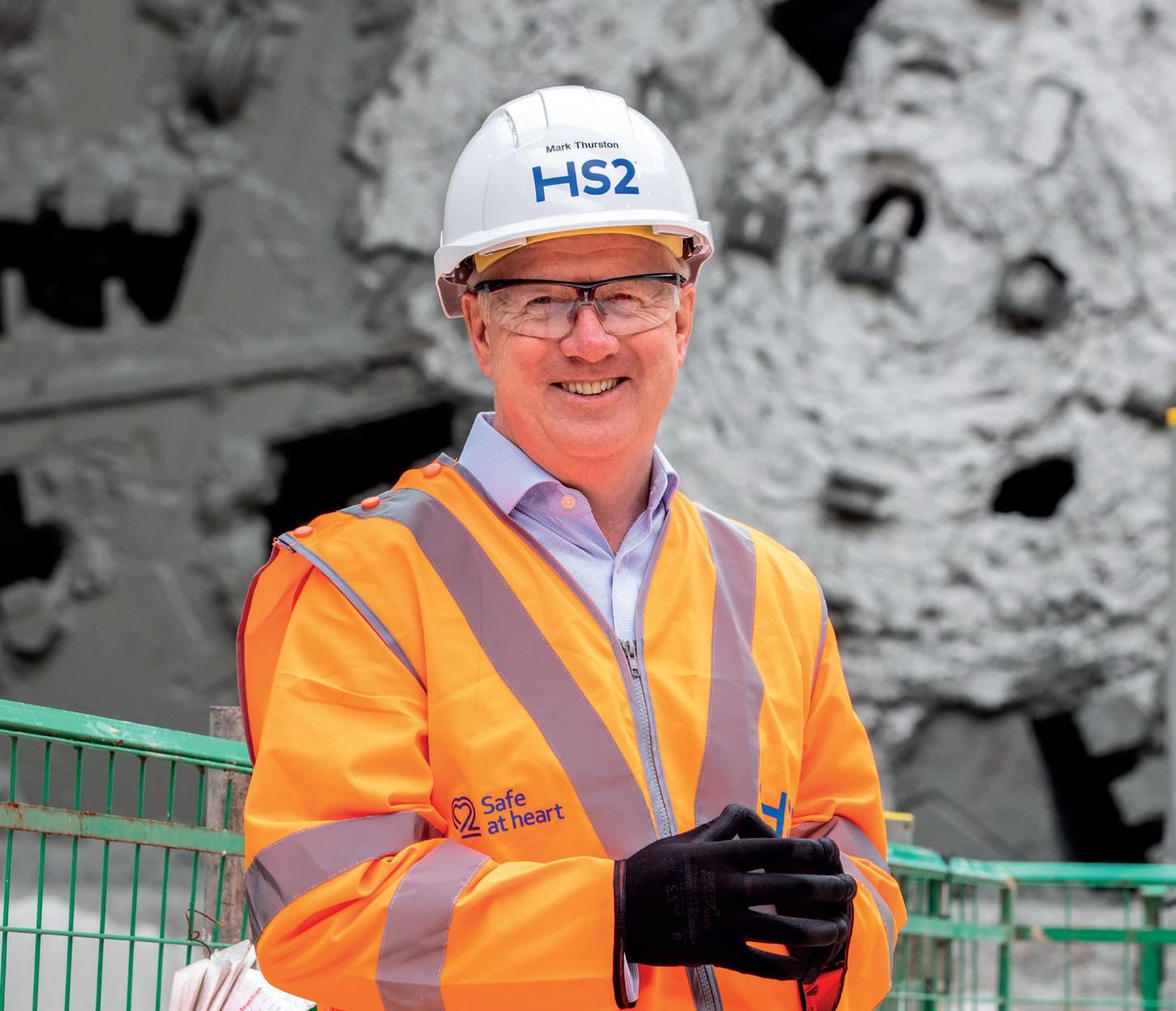
Mark Harper, secretary of state for transport, said: “I’d like to thank Mark for his work over the last six years progressing Britain’s most transformative rail project. As well as overseeing the start of construction, he has ensured HS2 has created tens of thousands of skilled jobs and apprenticeships across the country.
“As HS2 enters its next phase, the government remains committed to unlocking all the benefits of this flagship infrastructure scheme – increasing rail capacity, connecting communities and growing the economy.”
Construction of the first phase of HS2 is now at its height, with major works taking place at more than 350 sites between London and the West Midlands.
Along the route, six tunnelling machines have been launched, works on the Colne Valley Viaduct (the longest railway bridge in the UK) are well underway and the Marston Box rail bridge has been slid into place over the M42 motorway.
Sir Jon Thompson, chair of HS2 Ltd, who will become executive chairman for an interim period while a new chief executive is recruited, said: “Mark’s leadership has been critical to the success of the HS2 programme. In his time as CEO, the project has moved from a scheme in development to a major construction project that employs 28,500 people across the country.
“His legacy is building the foundations of HS2 which will bring growth and prosperity to towns and cities across the Midlands and the North. I want to thank him for his leadership and service.”
Mark Thurston has described the role as the highlight of his career and a privilege from the fi rst day
Mark’s leadership has been critical to the success of the HS2 programme




Supporting a sustainable railway is a key priority for Wabtec UK. Through our refurbishment, overhaul, upgrade and maintenance services, we are committed to reuse and recycle as much material as is possible.















